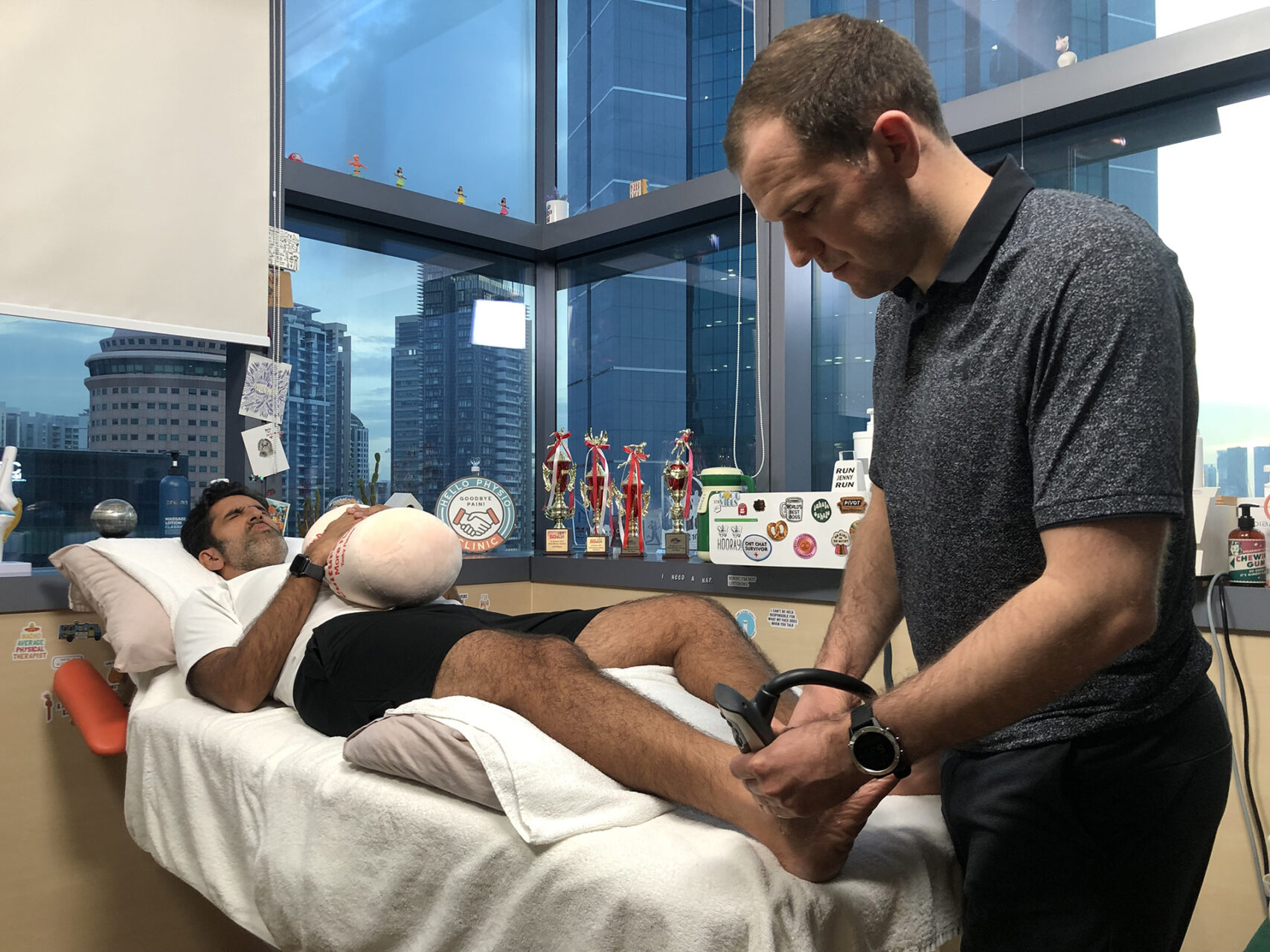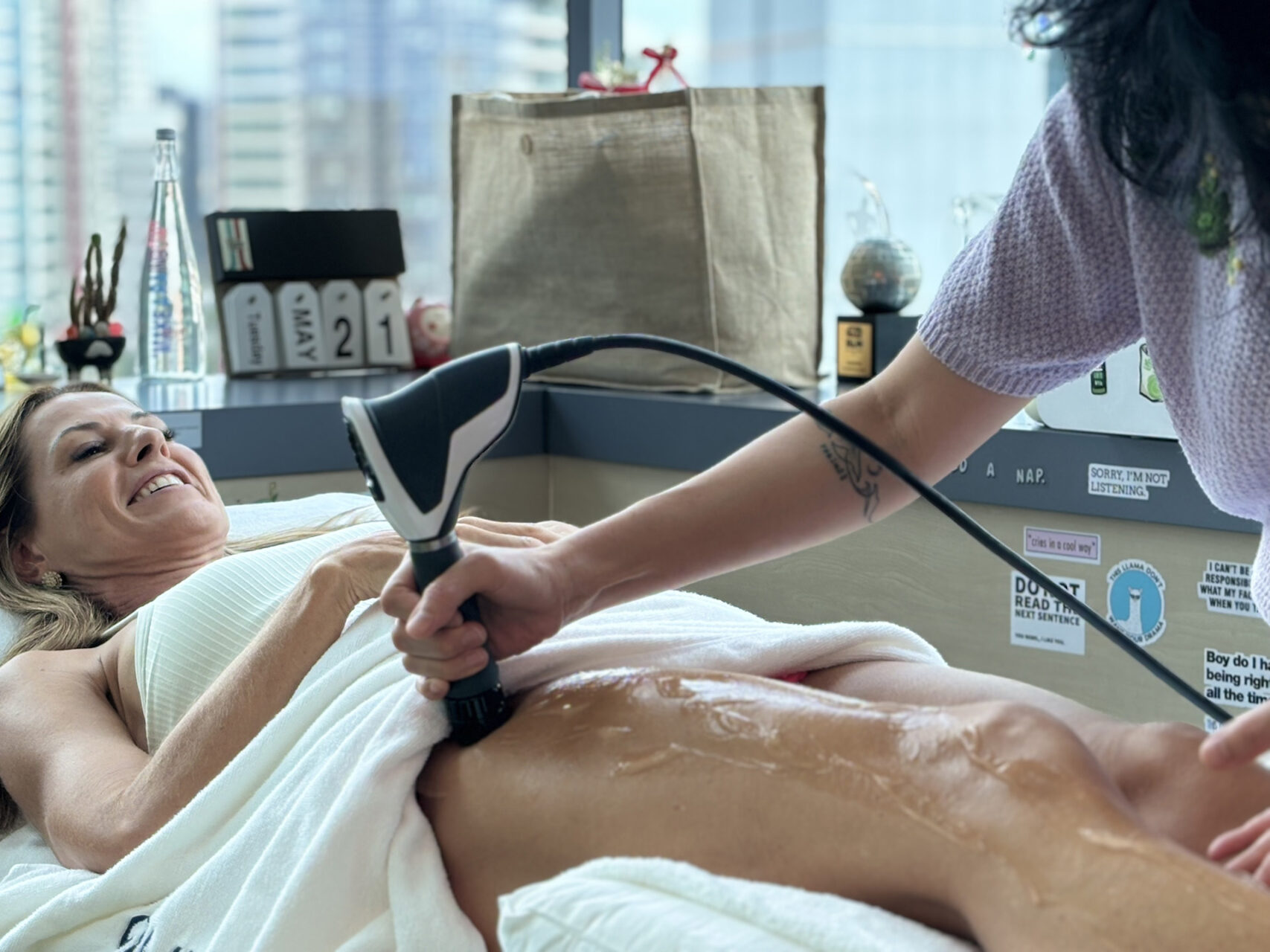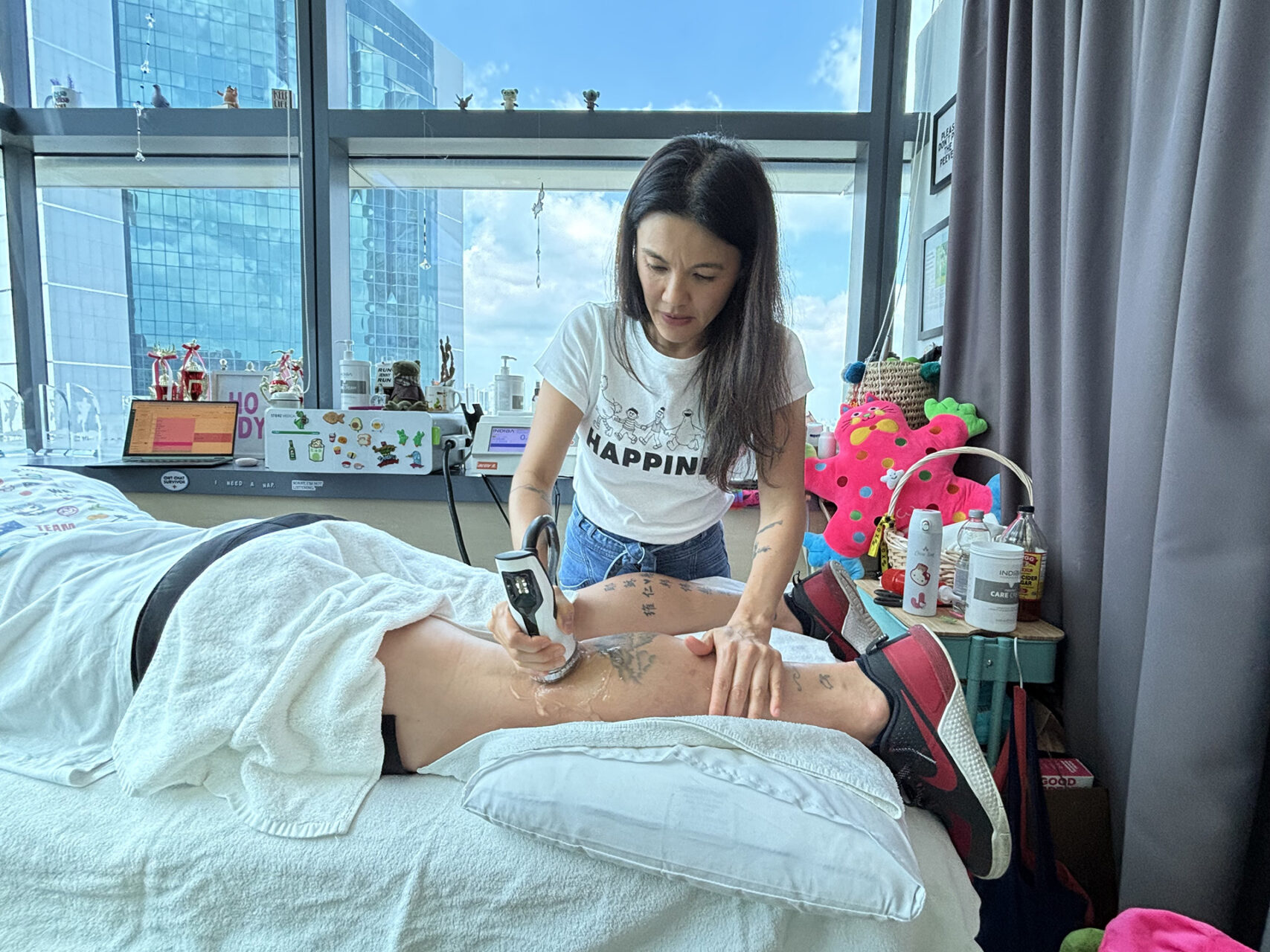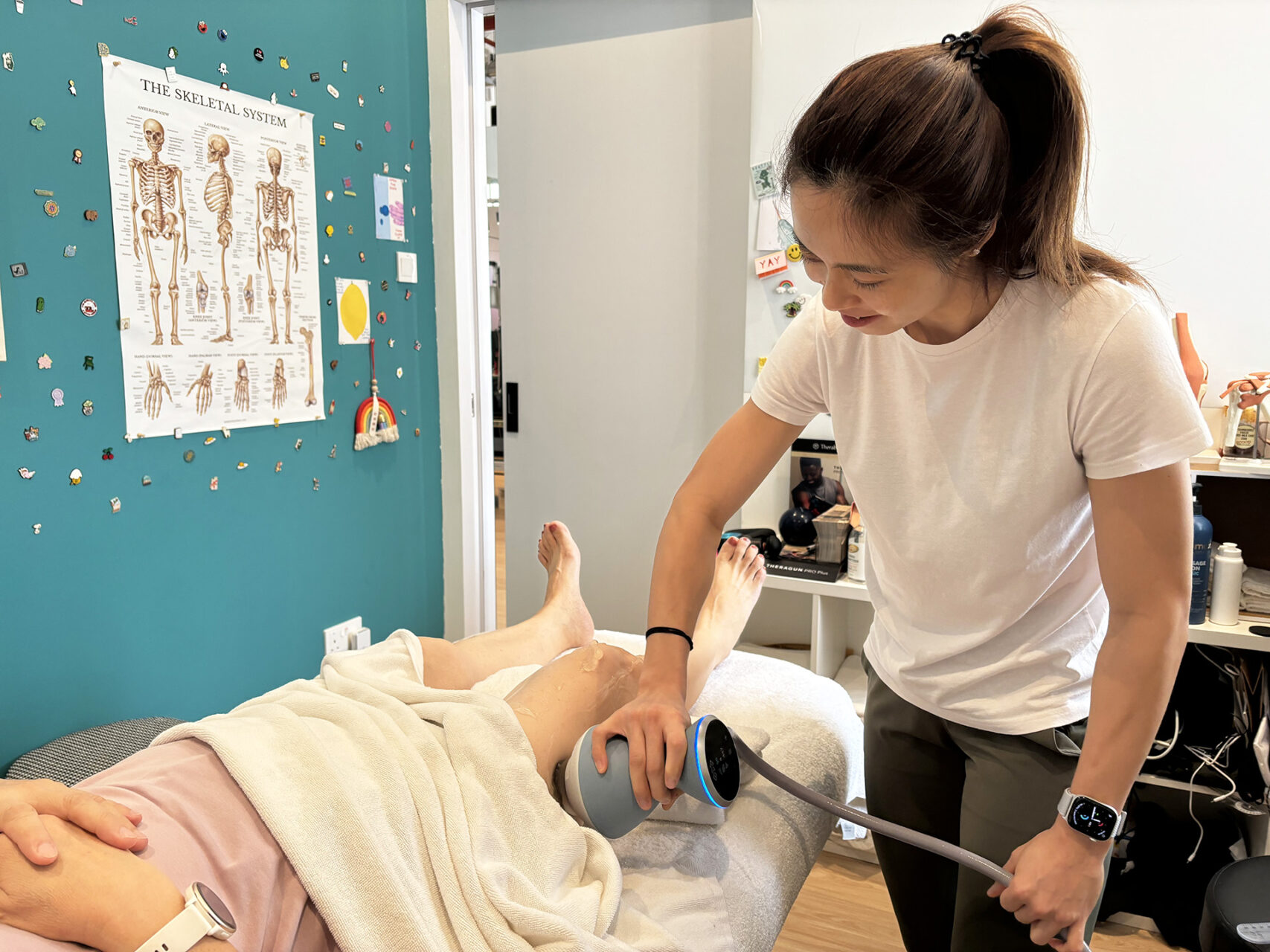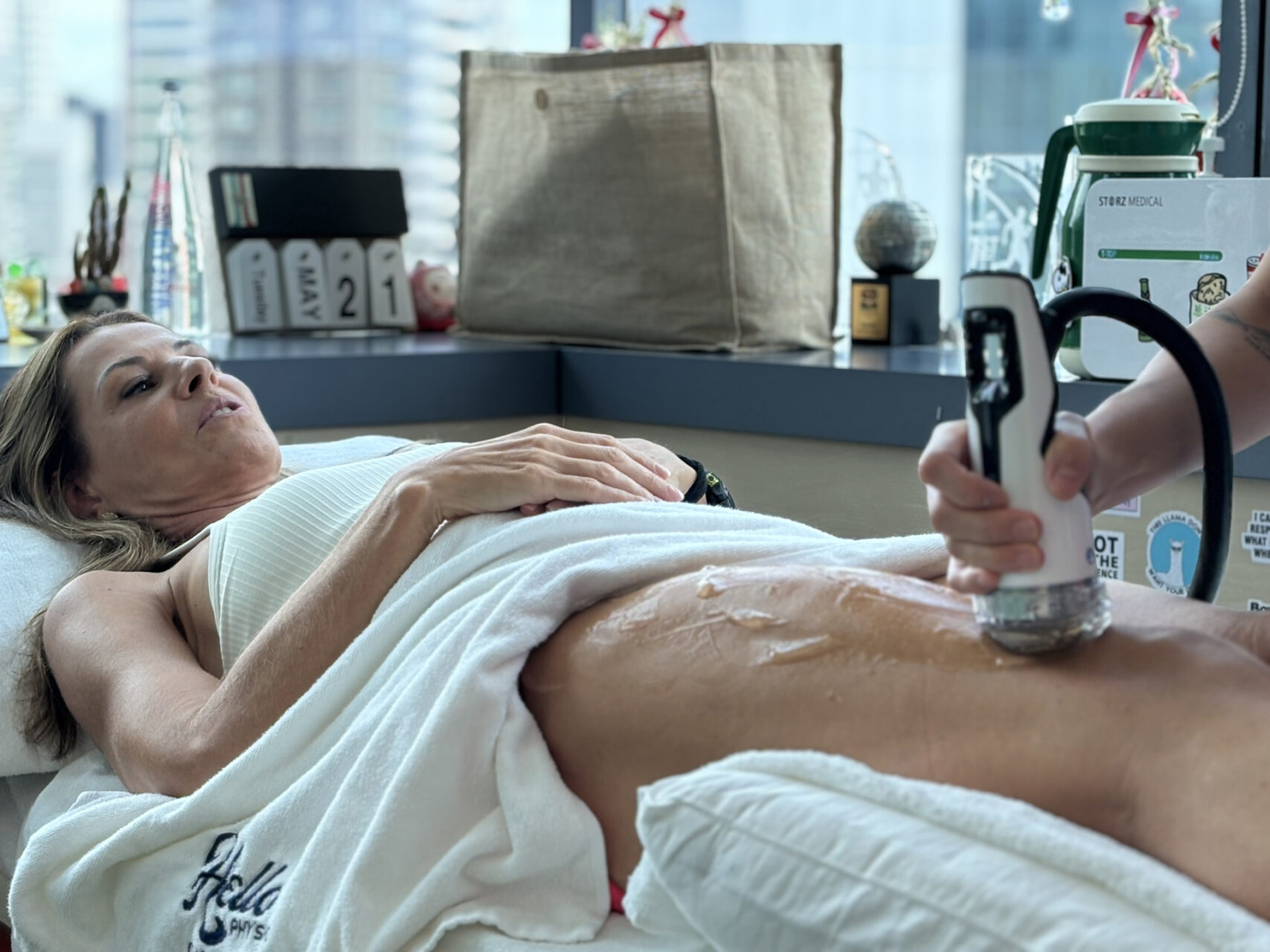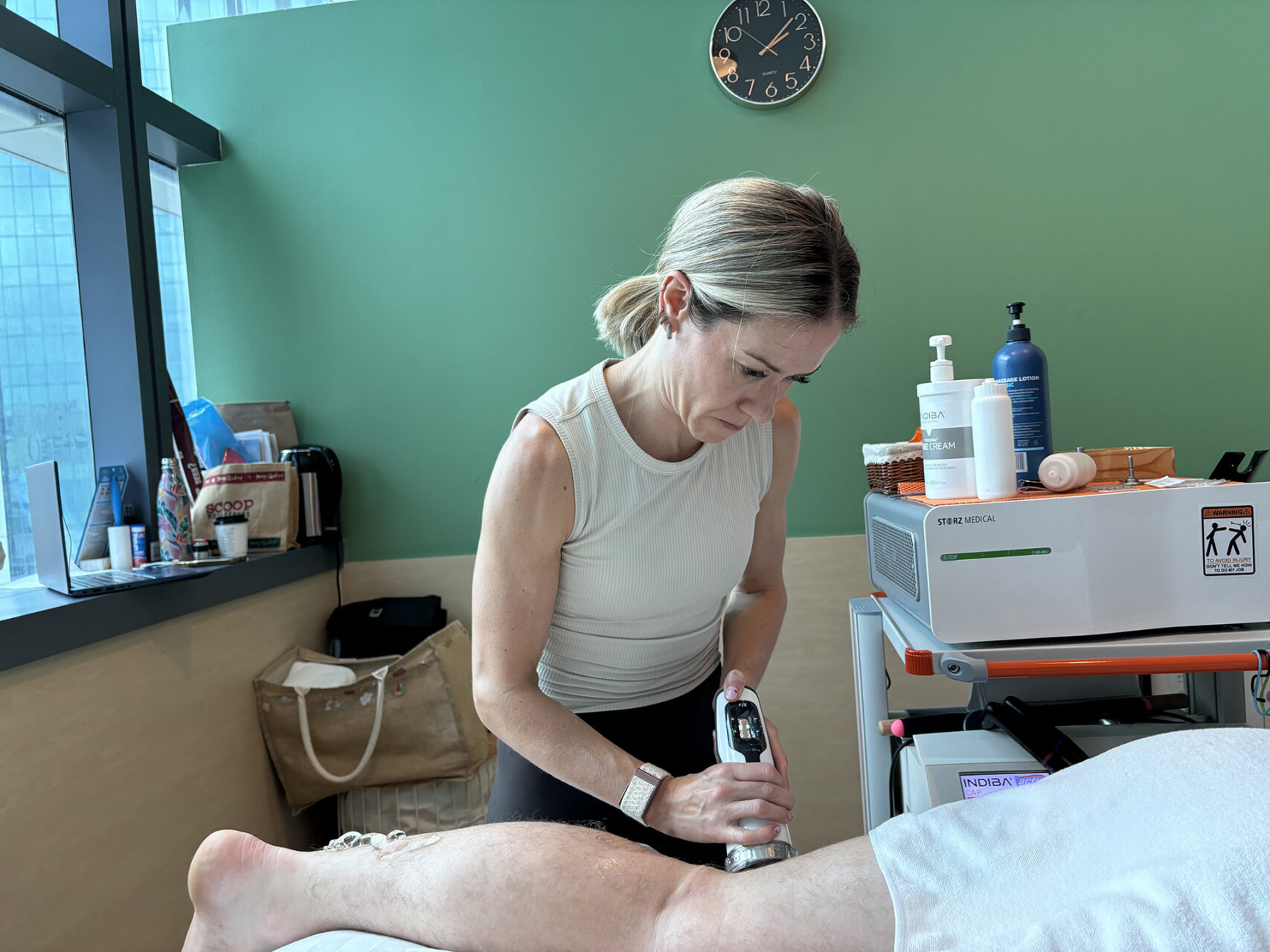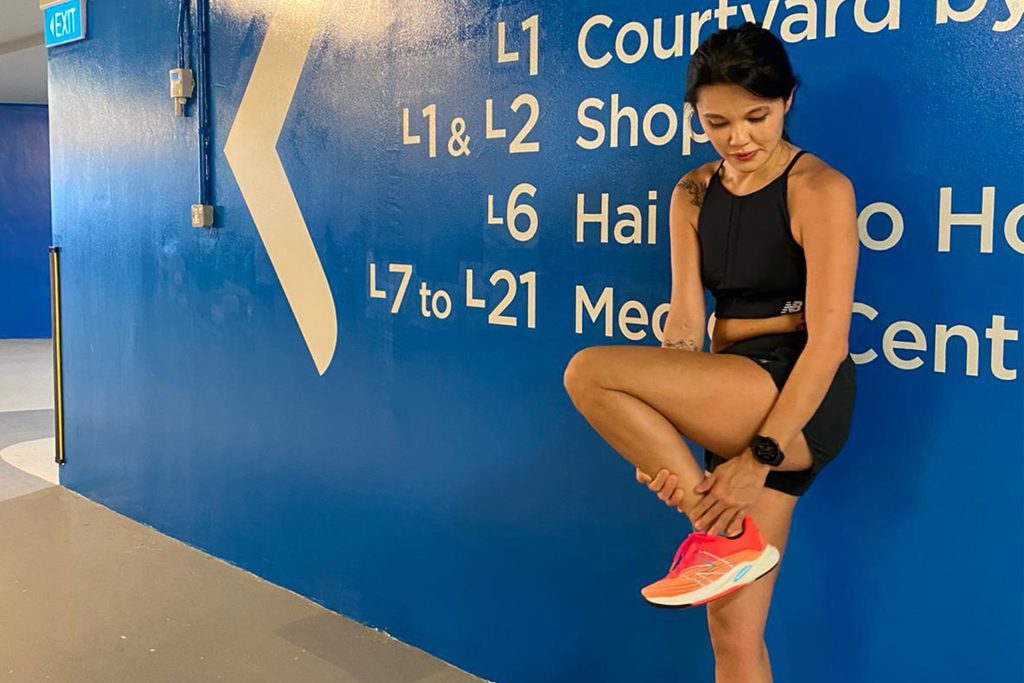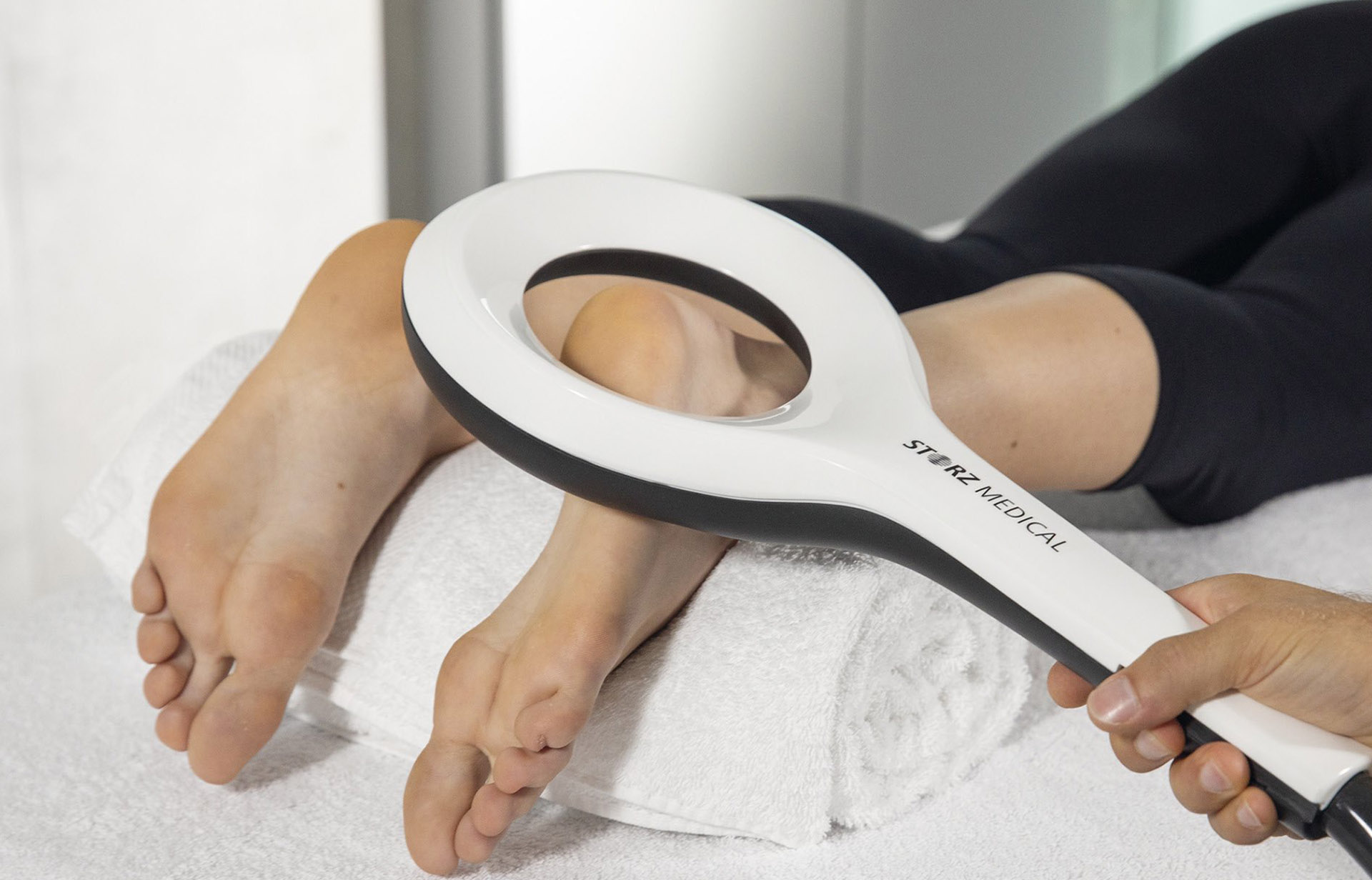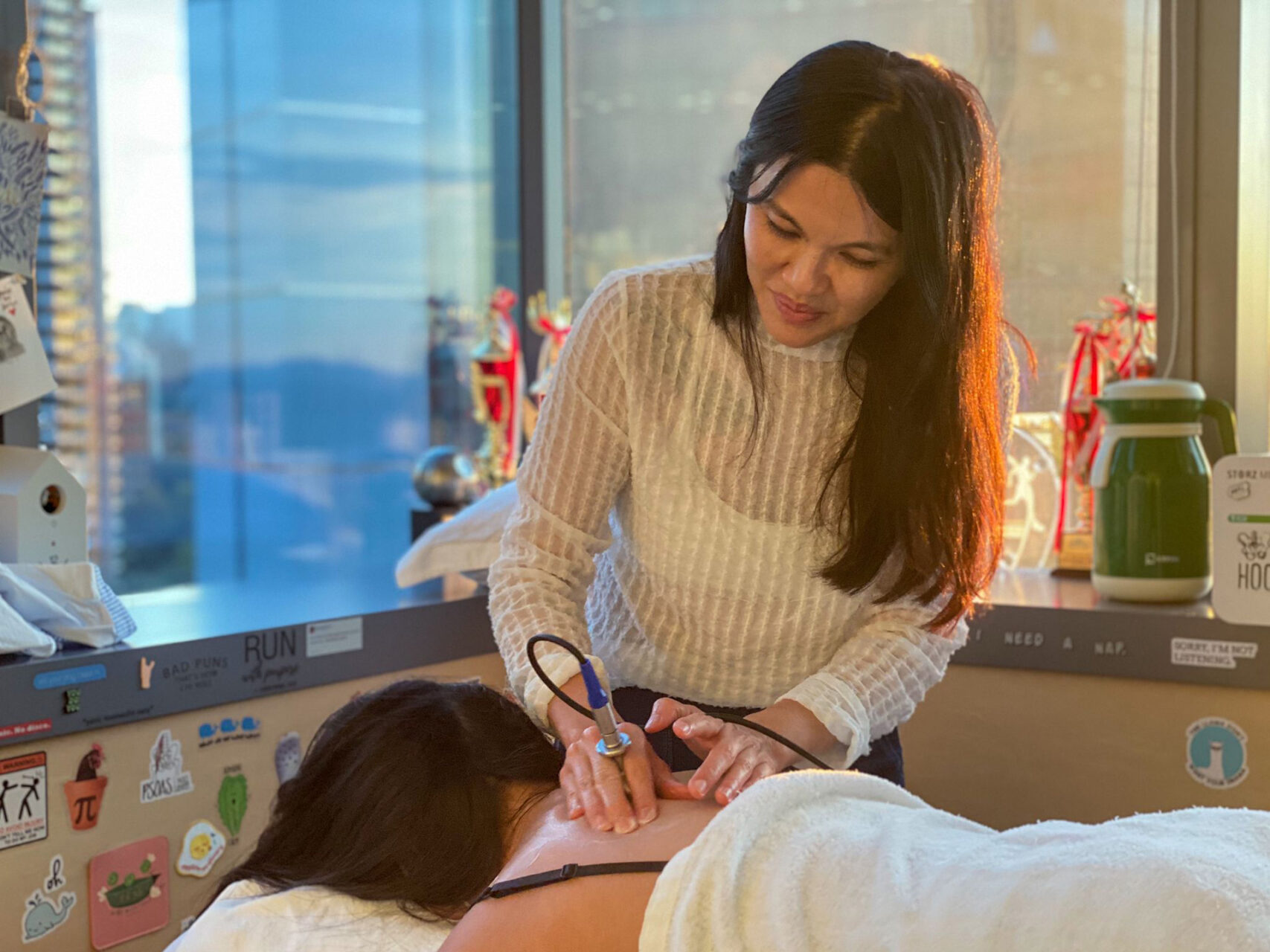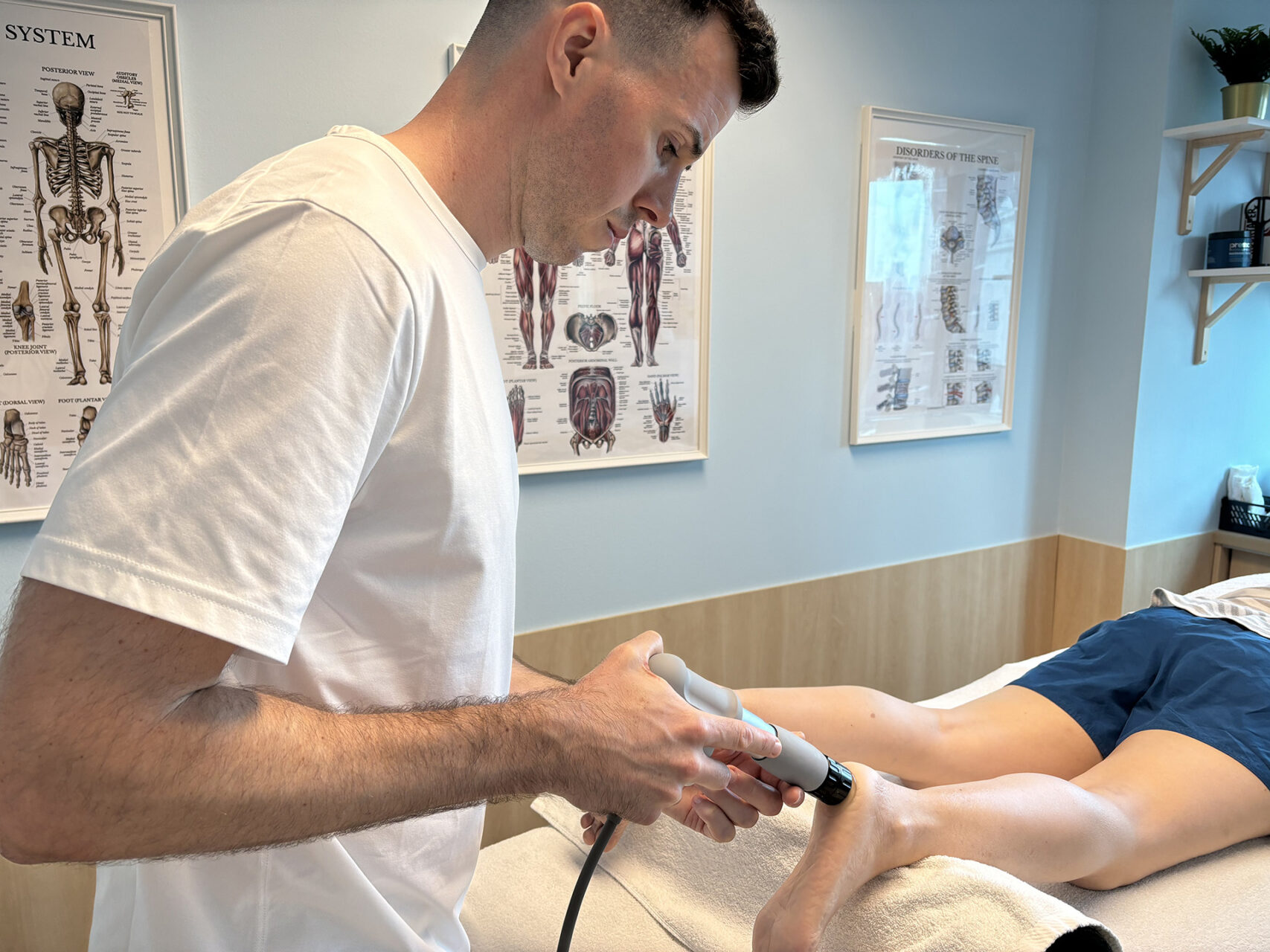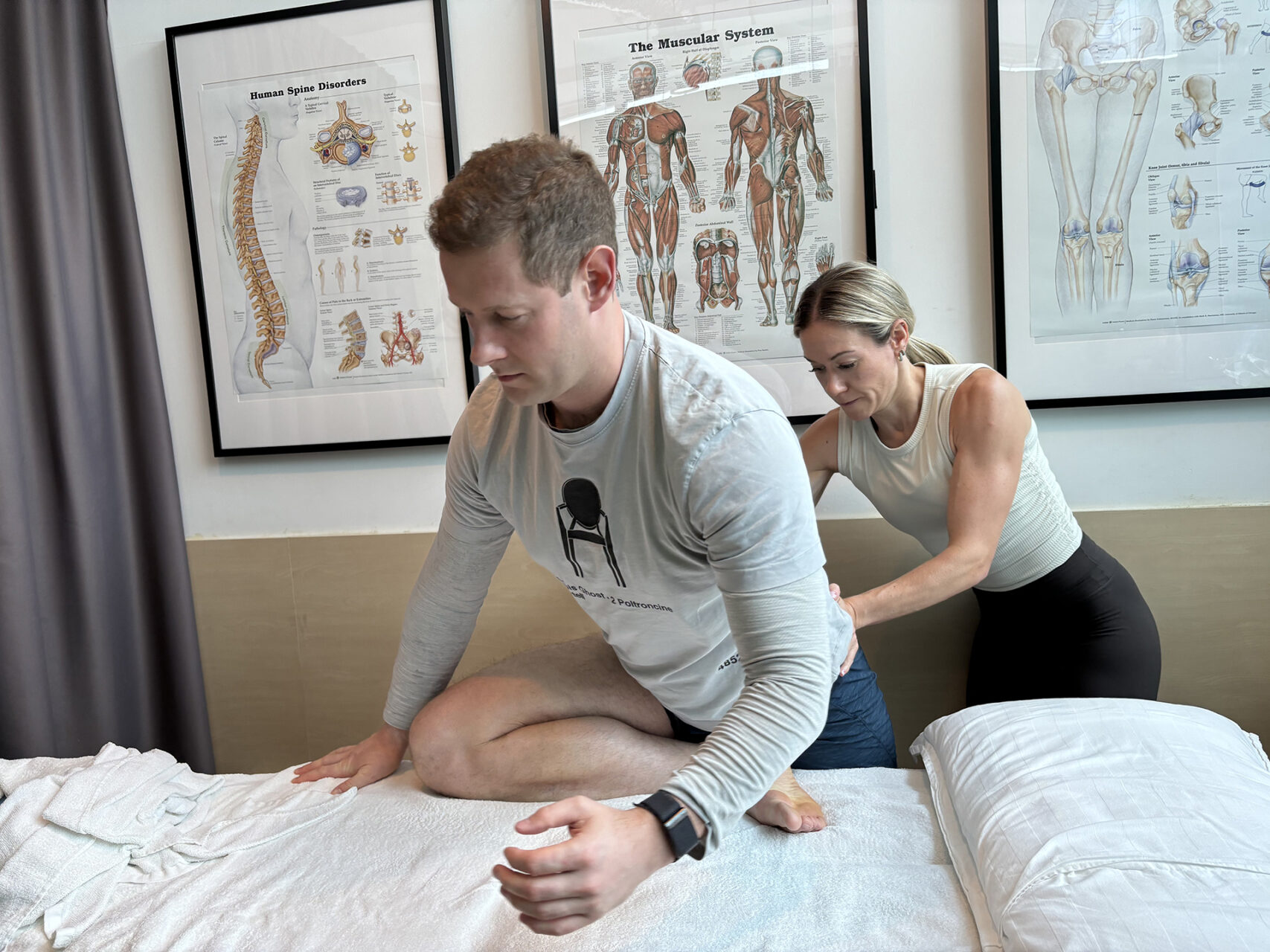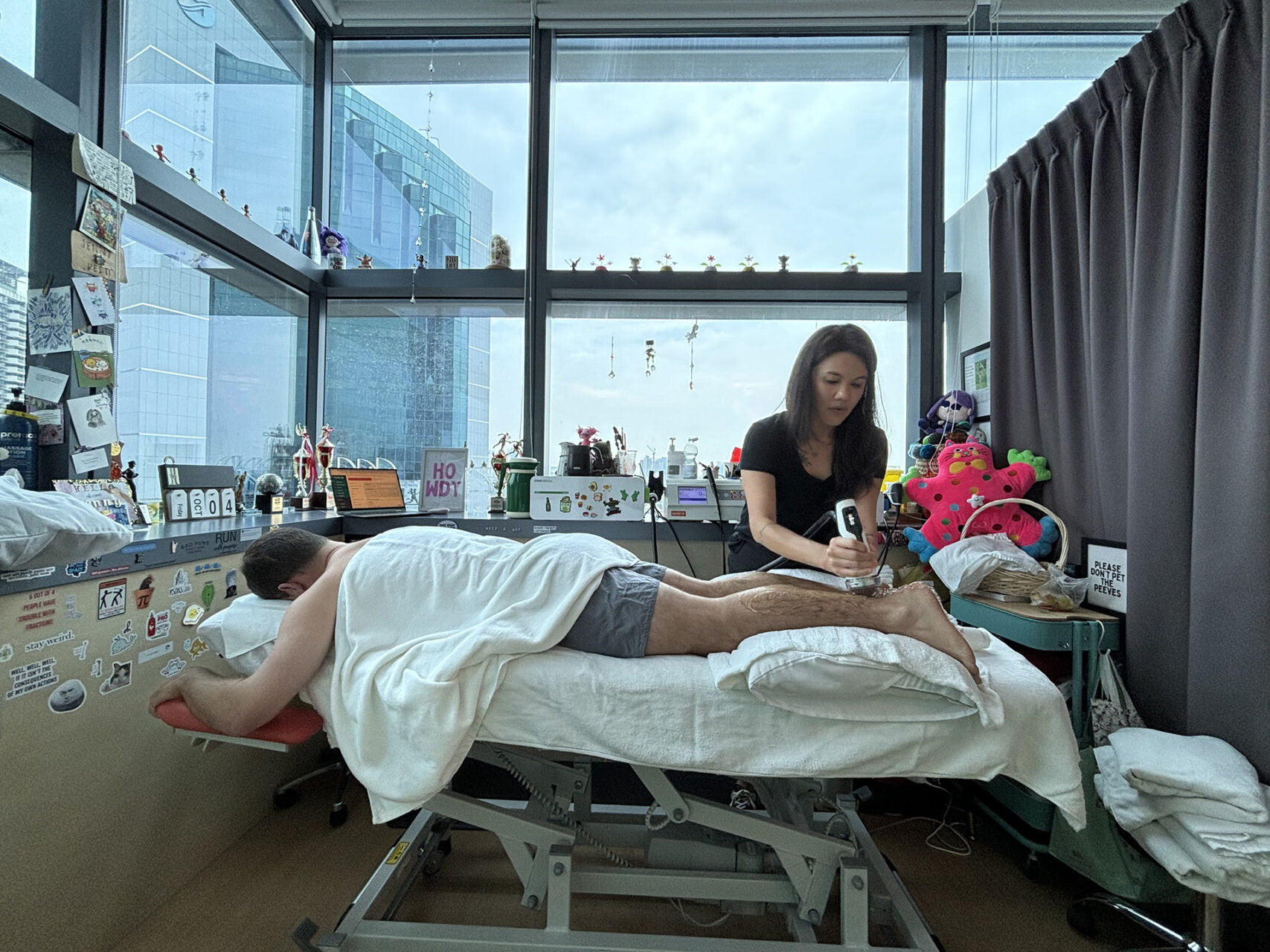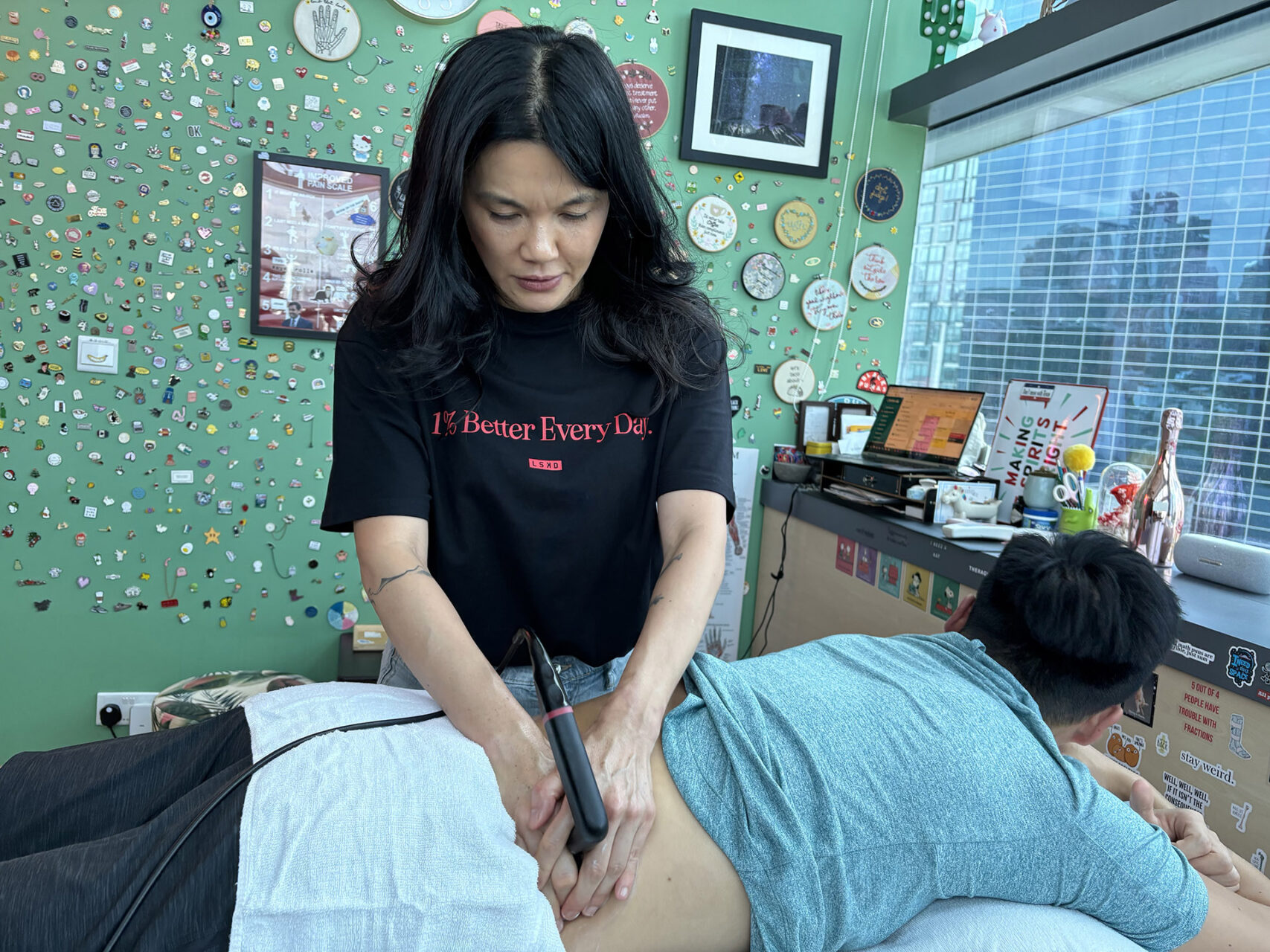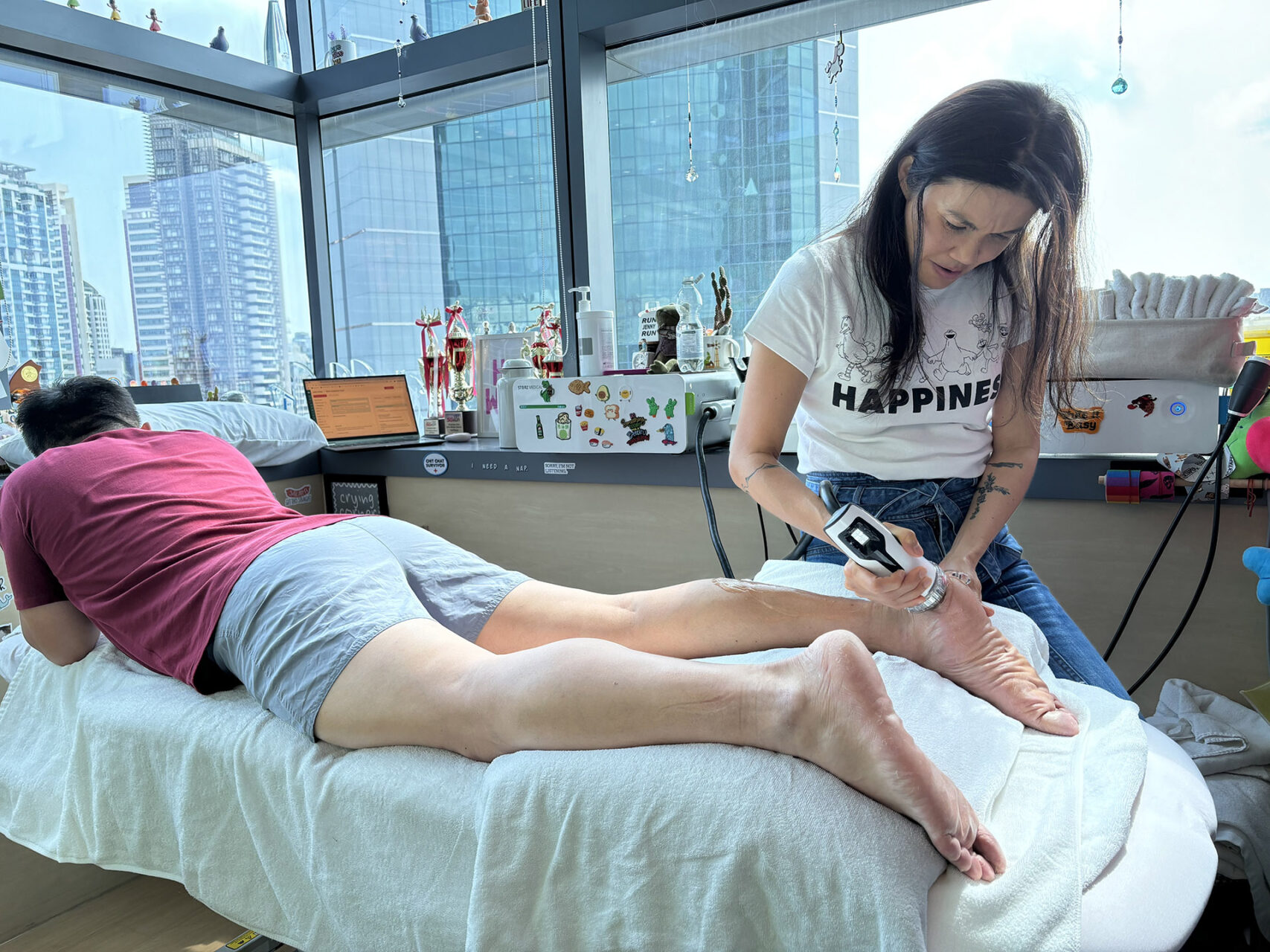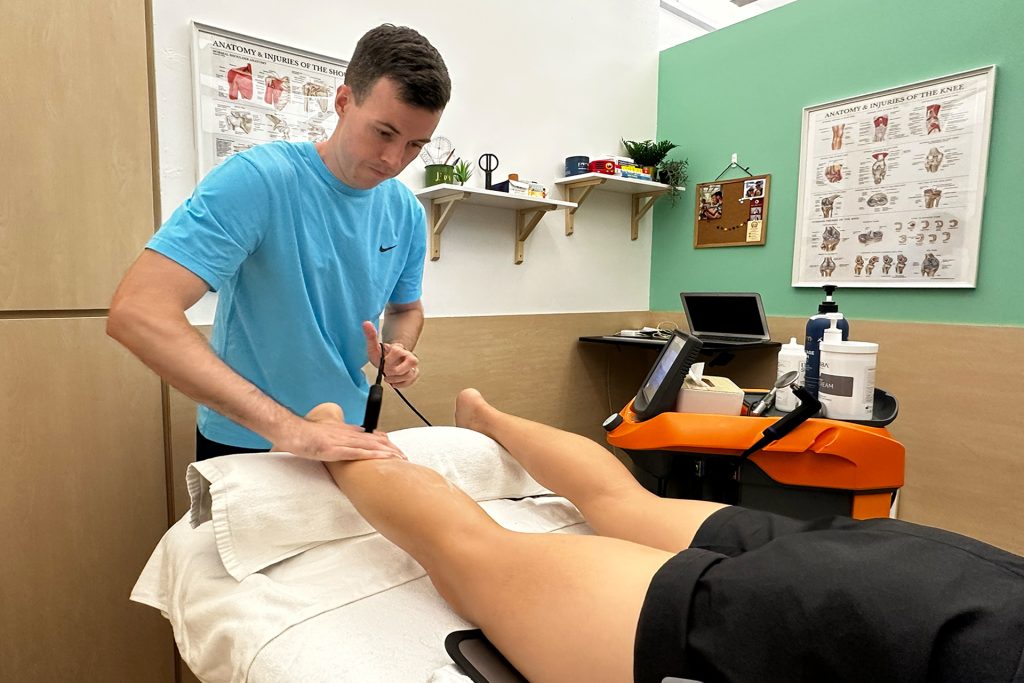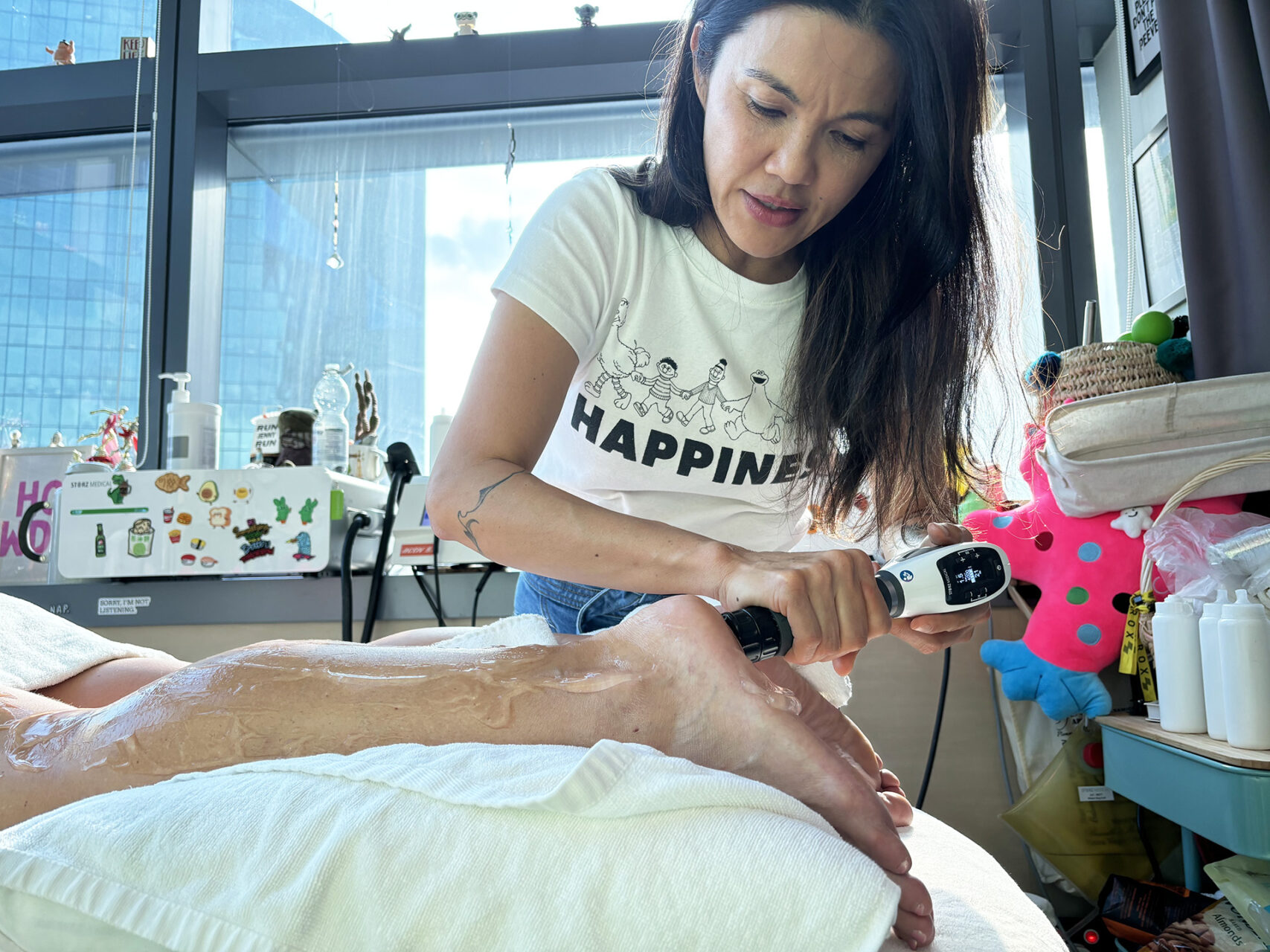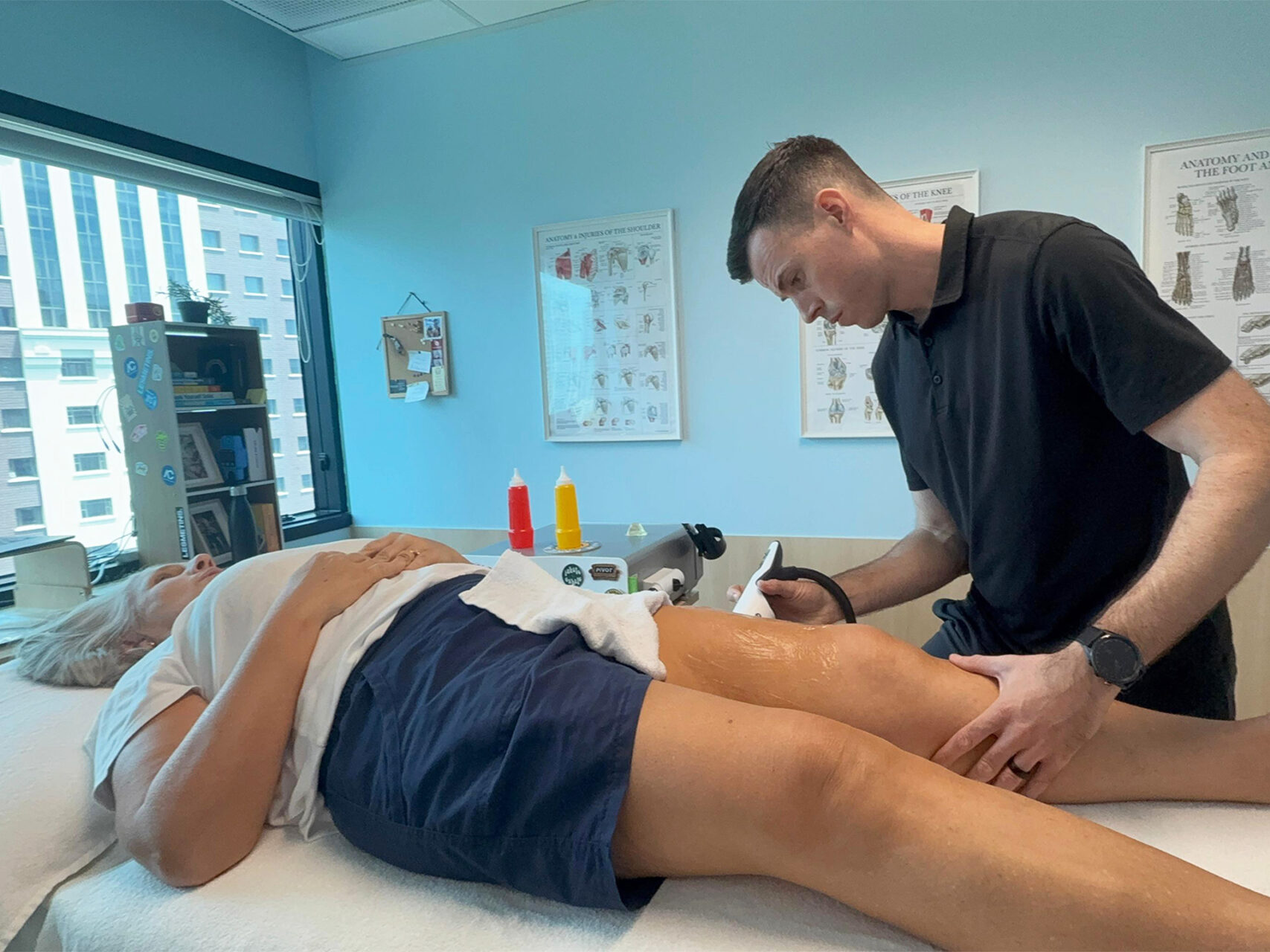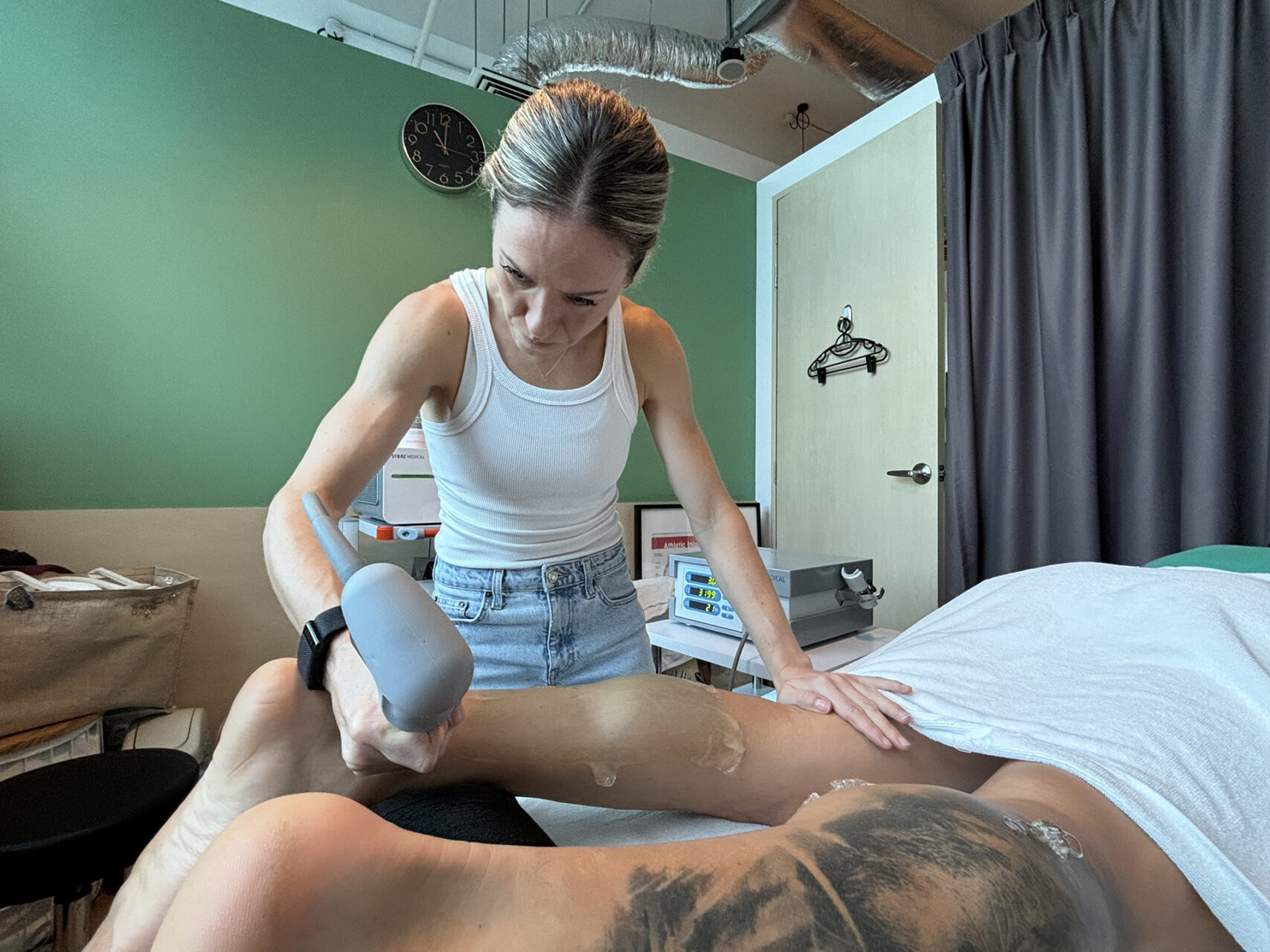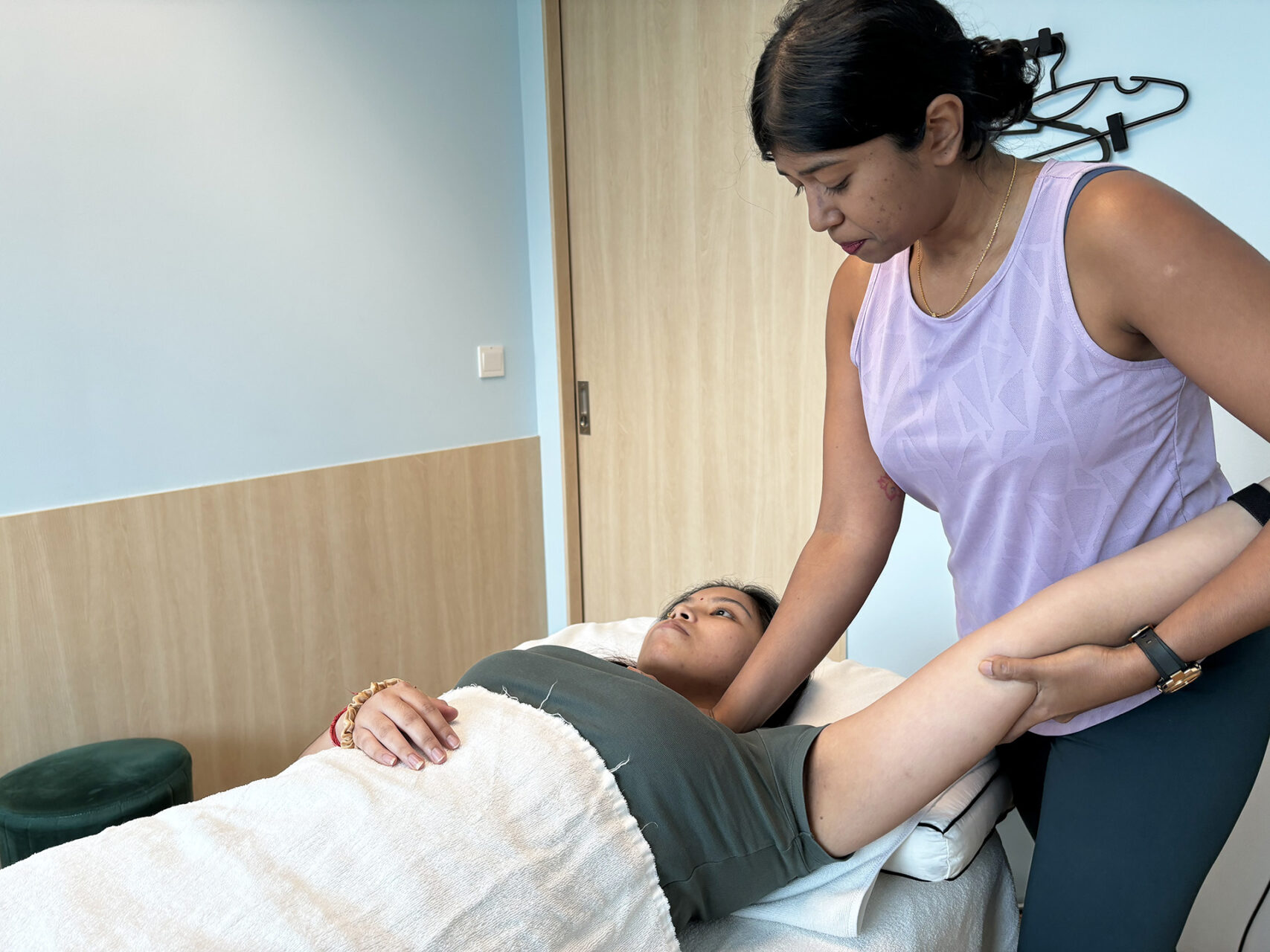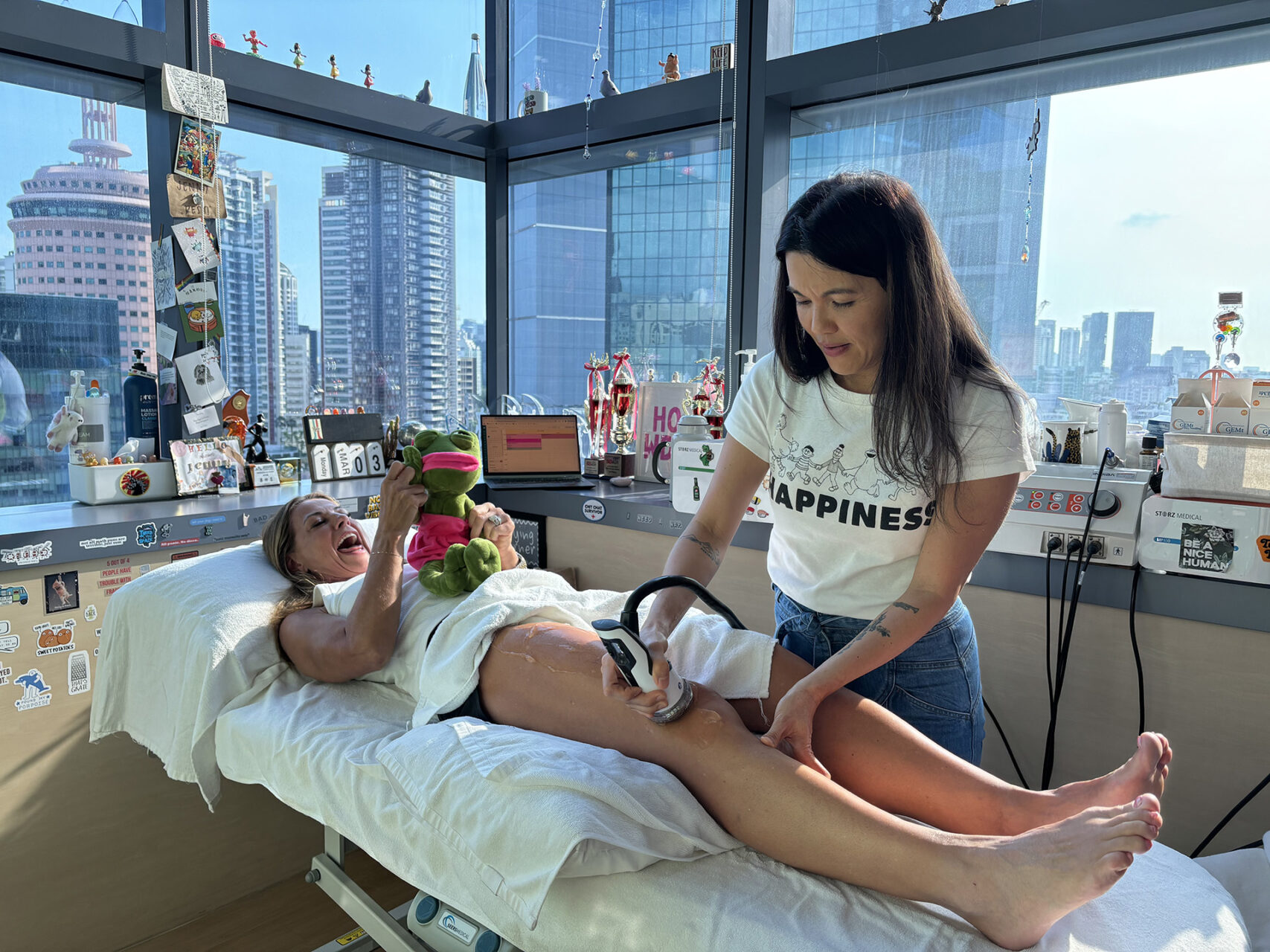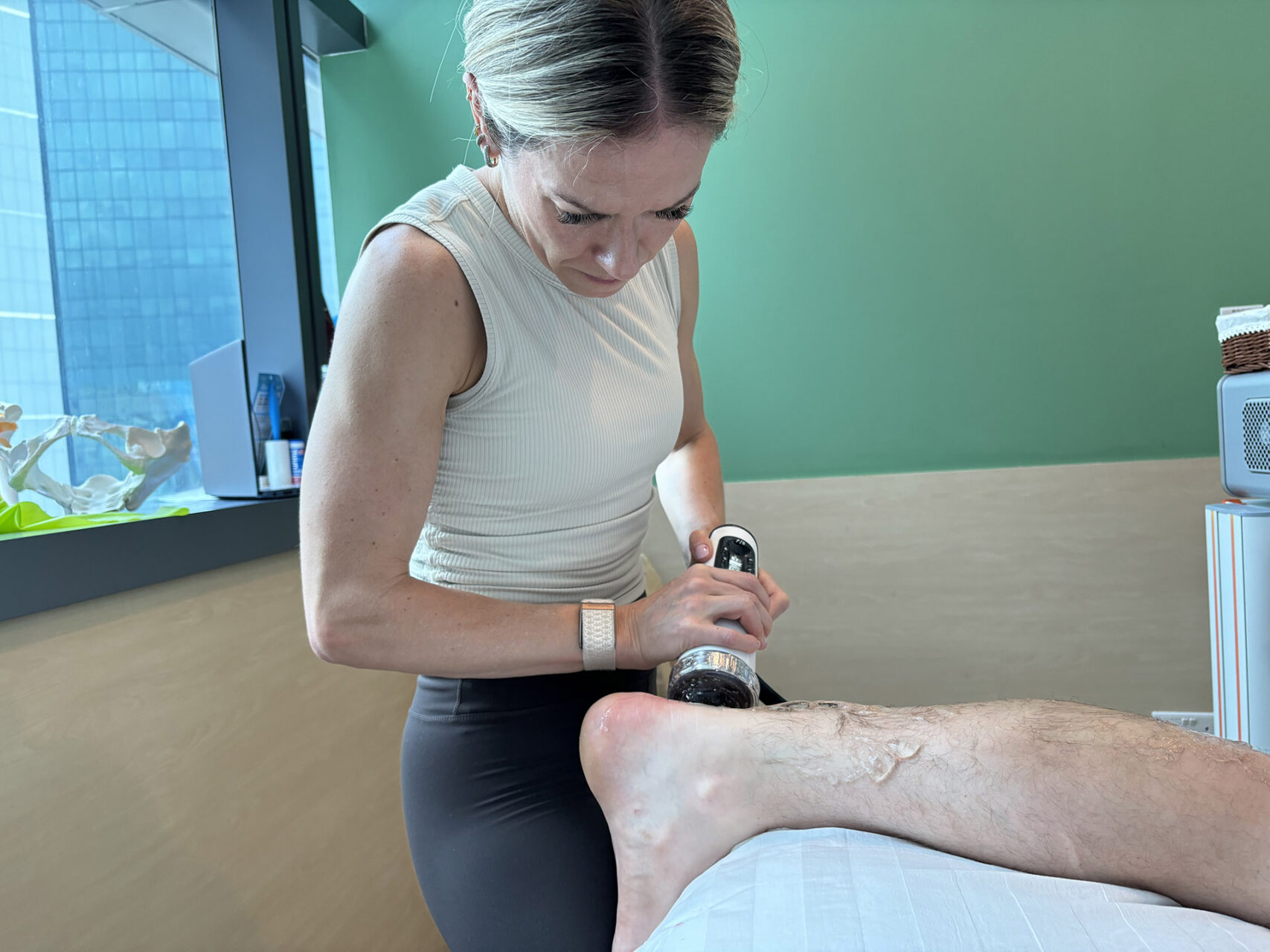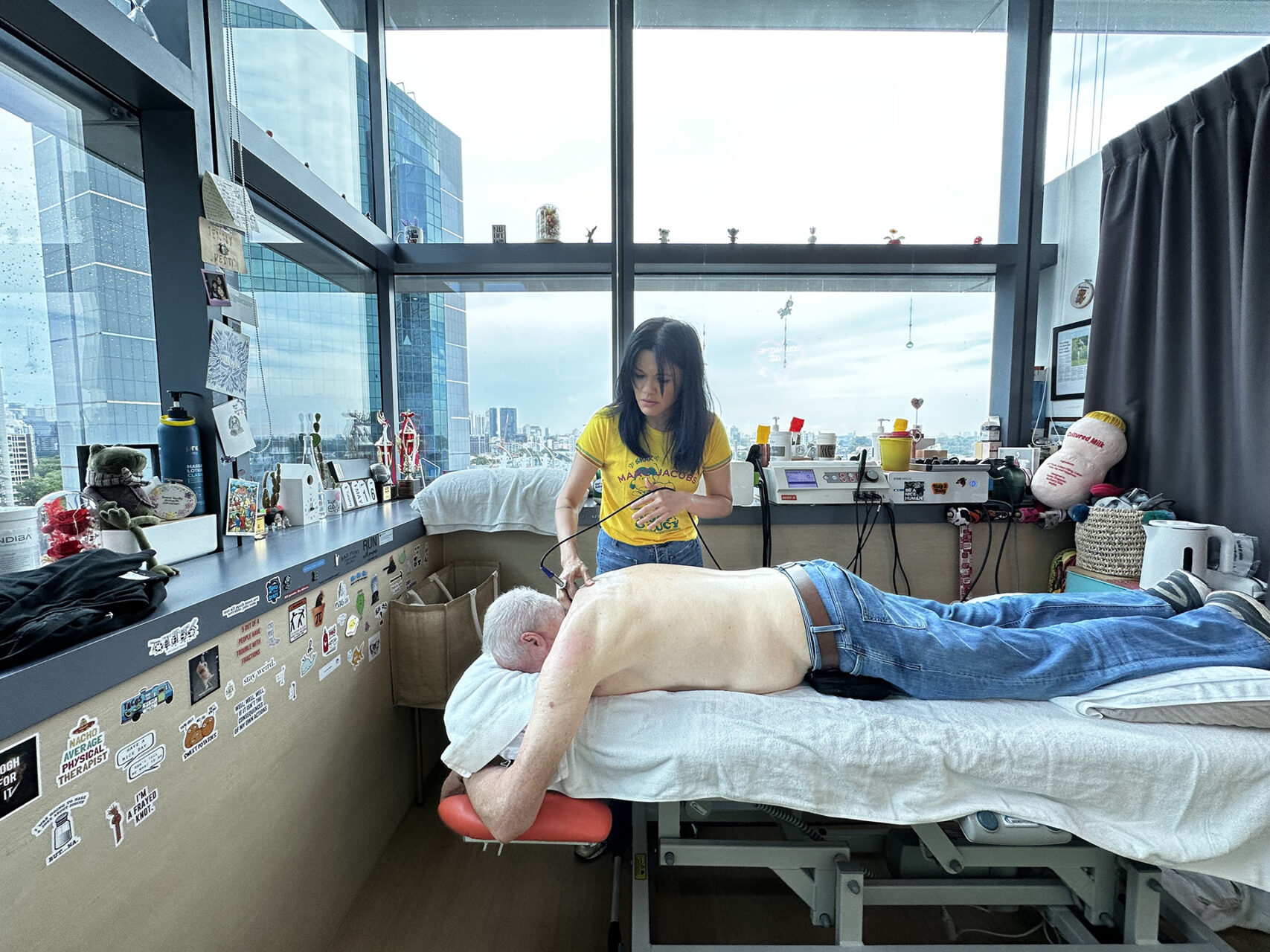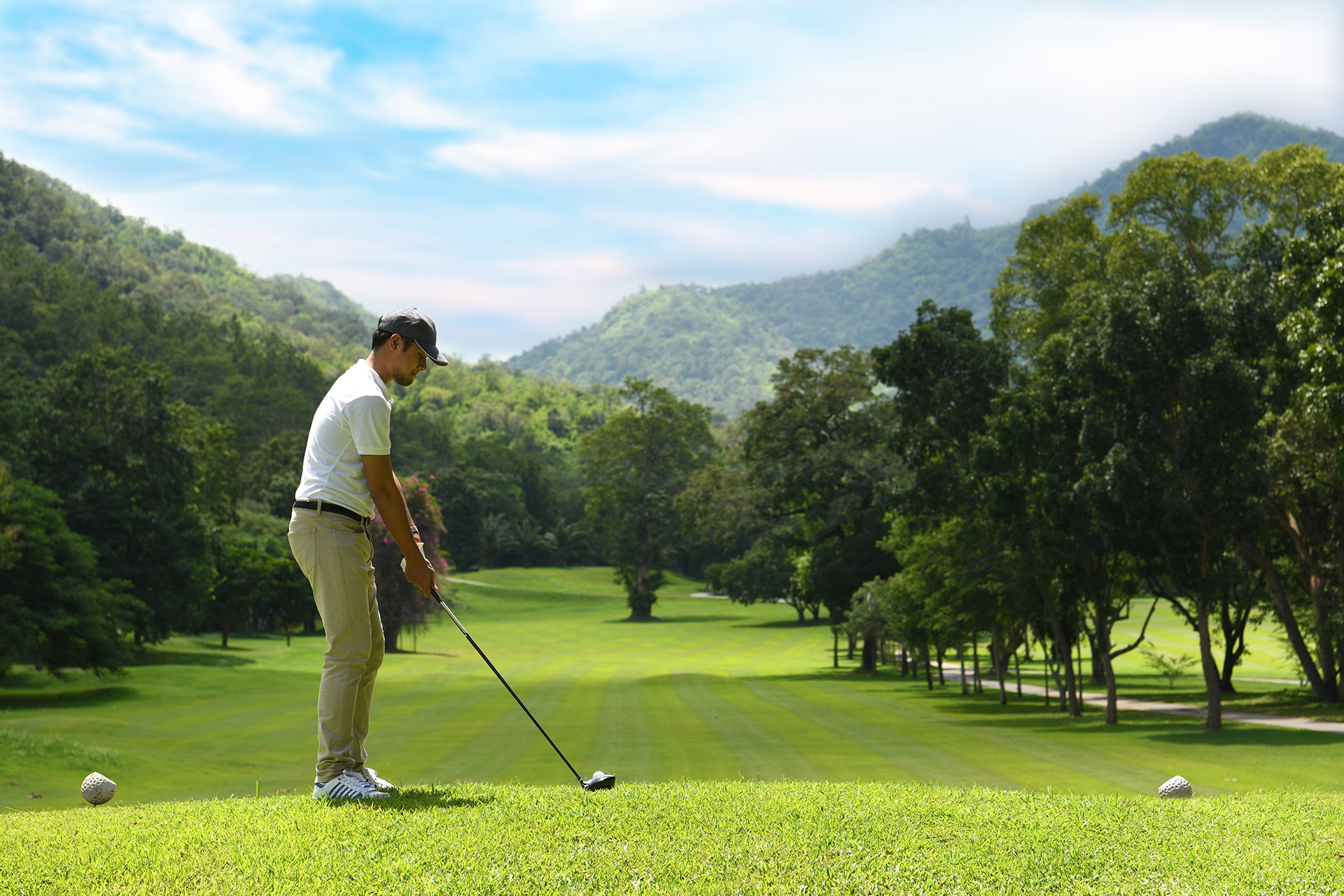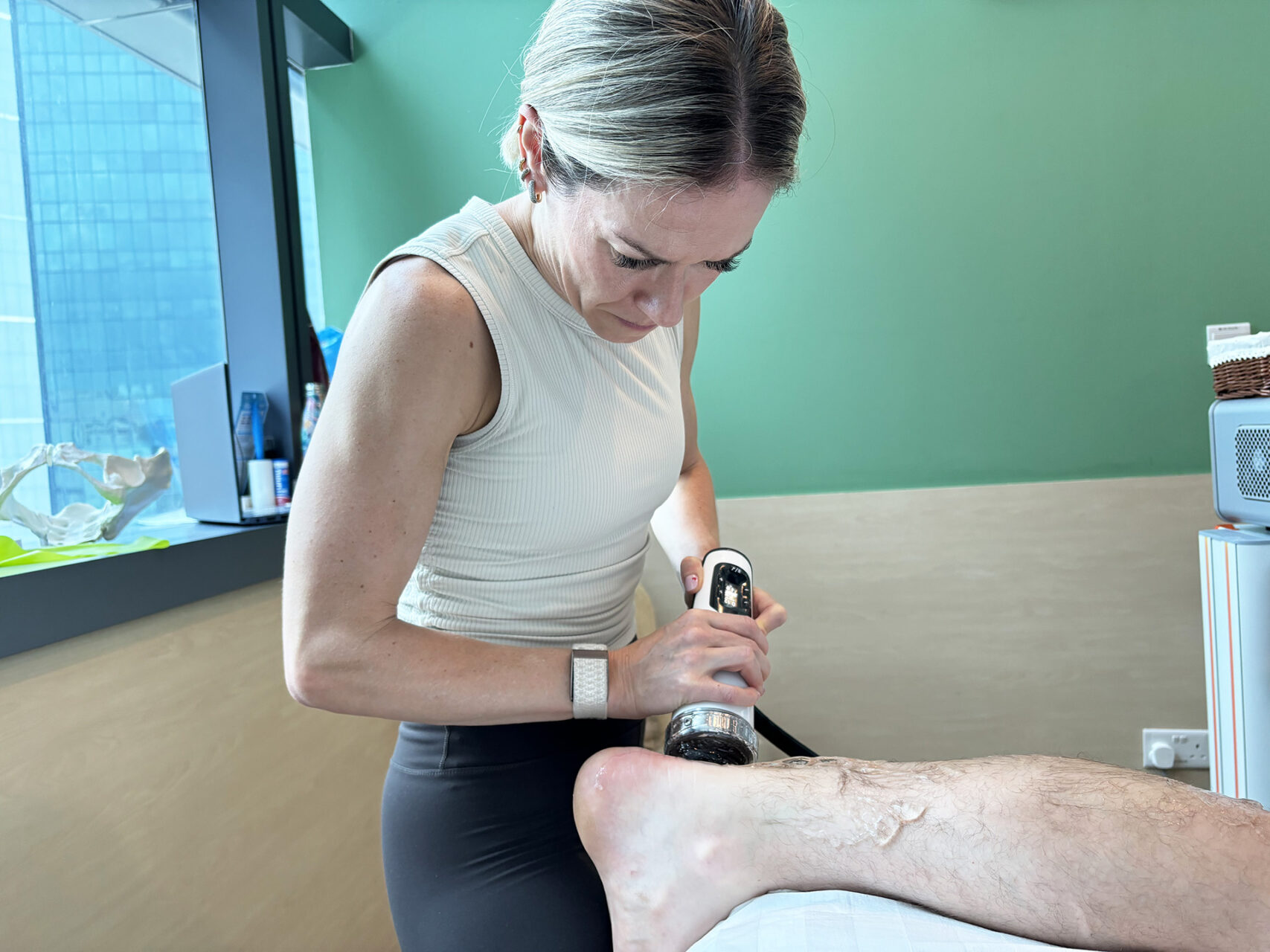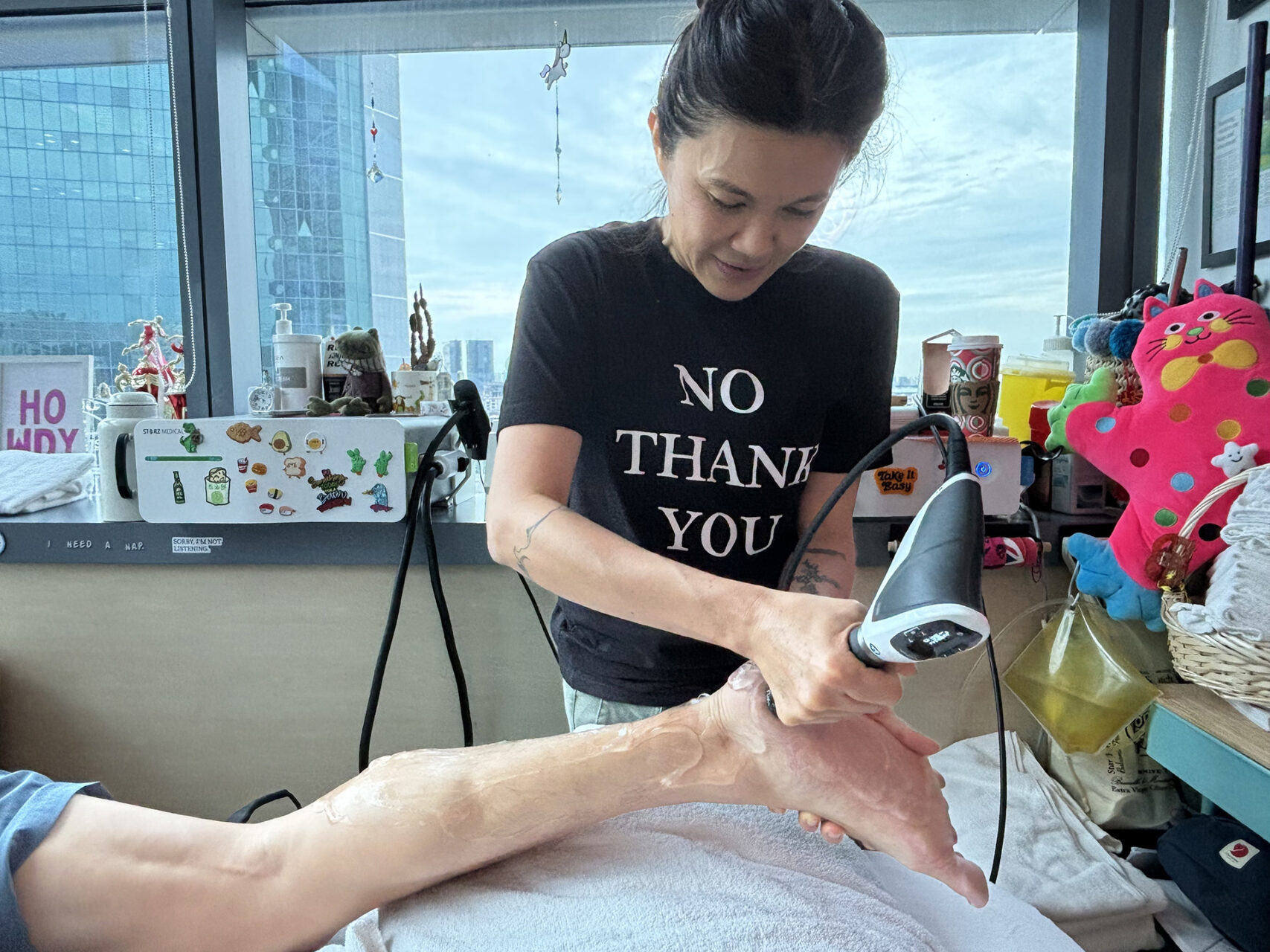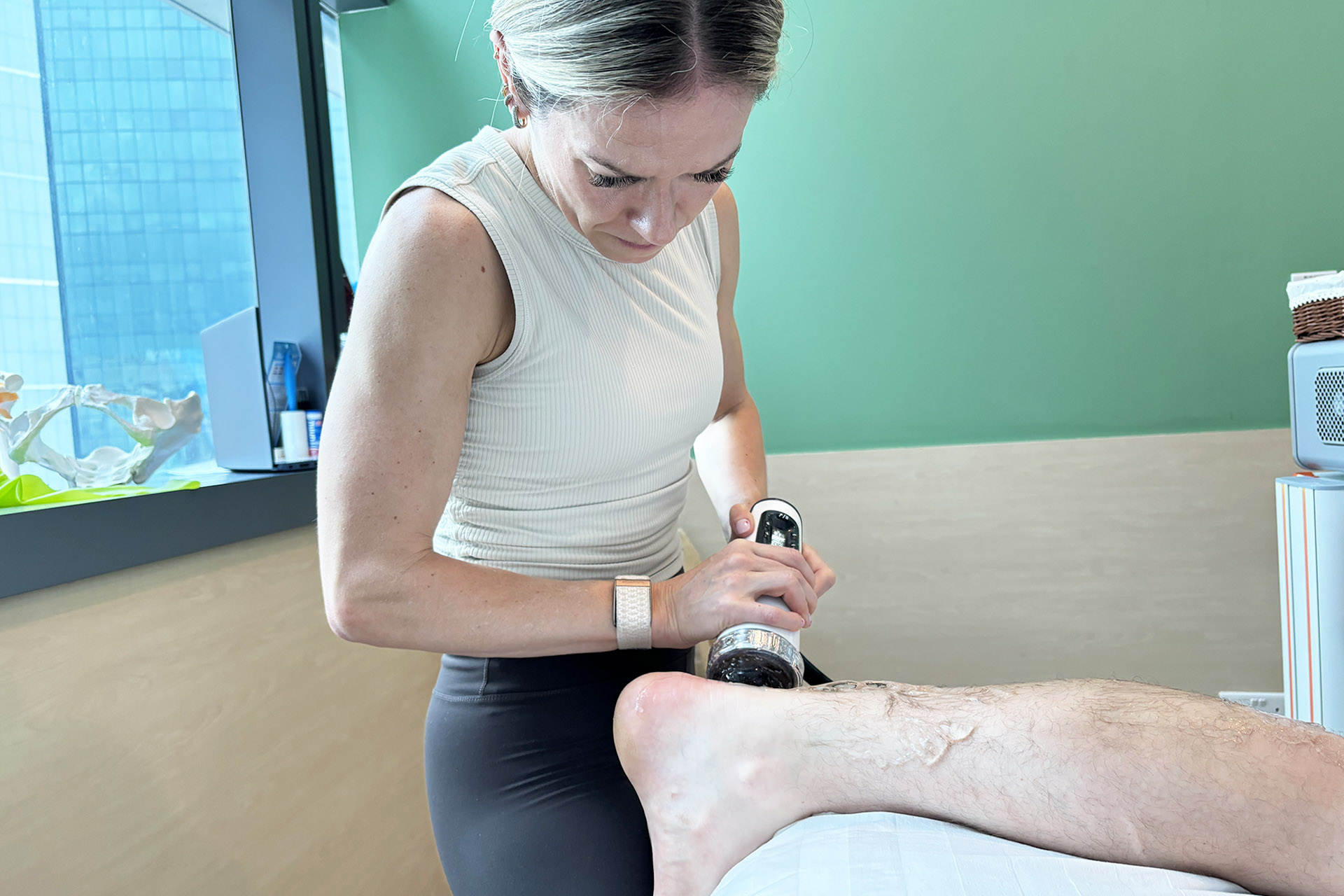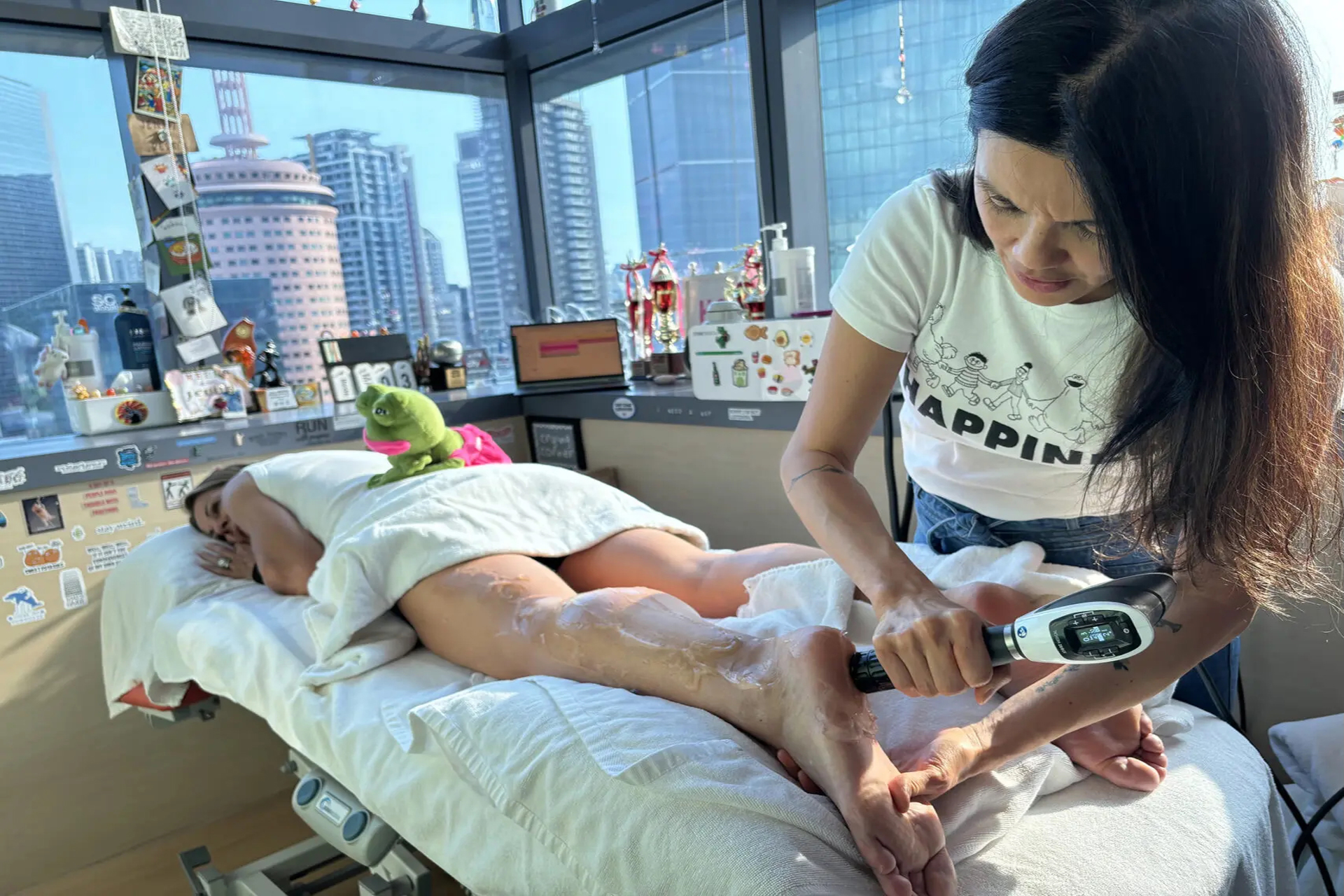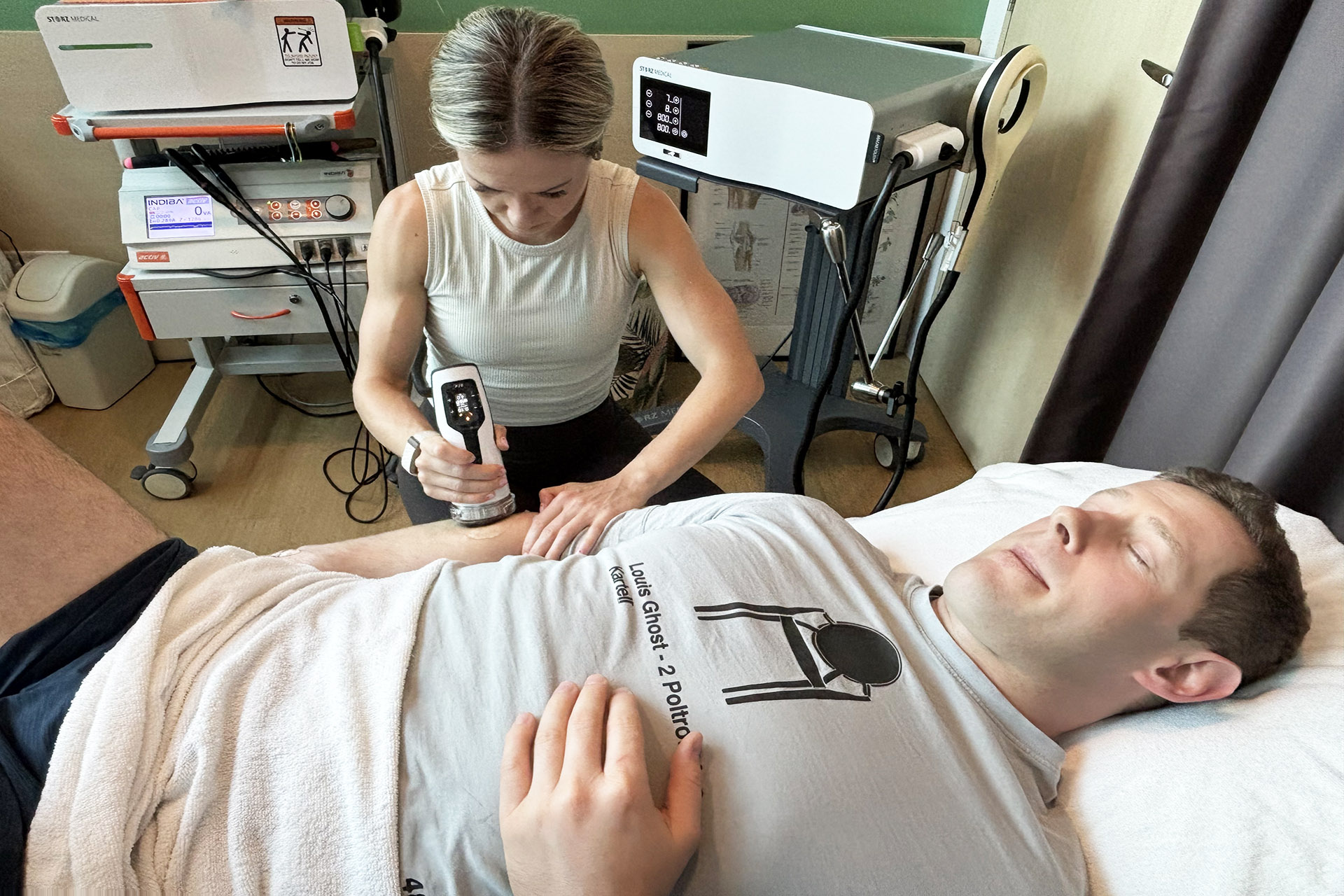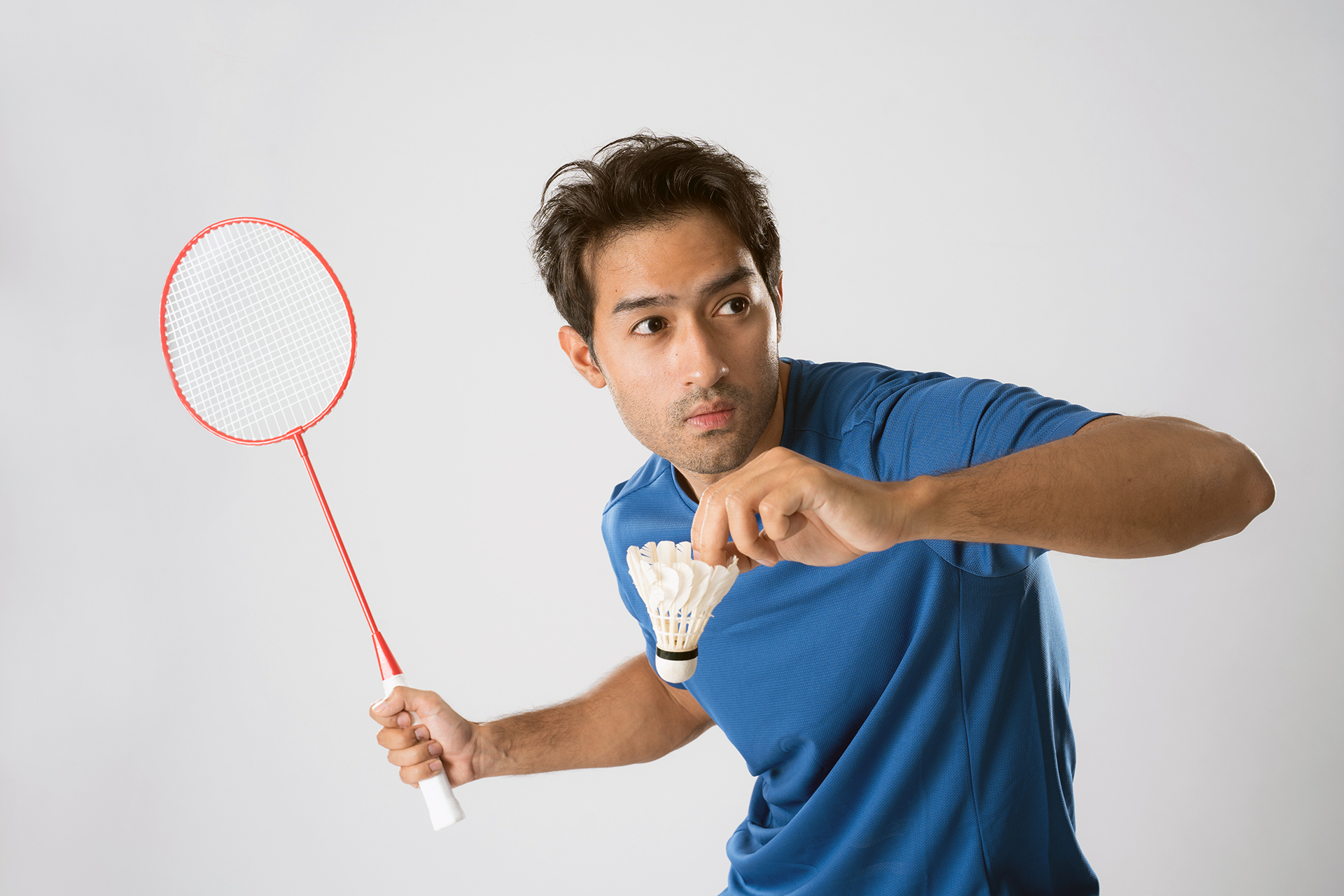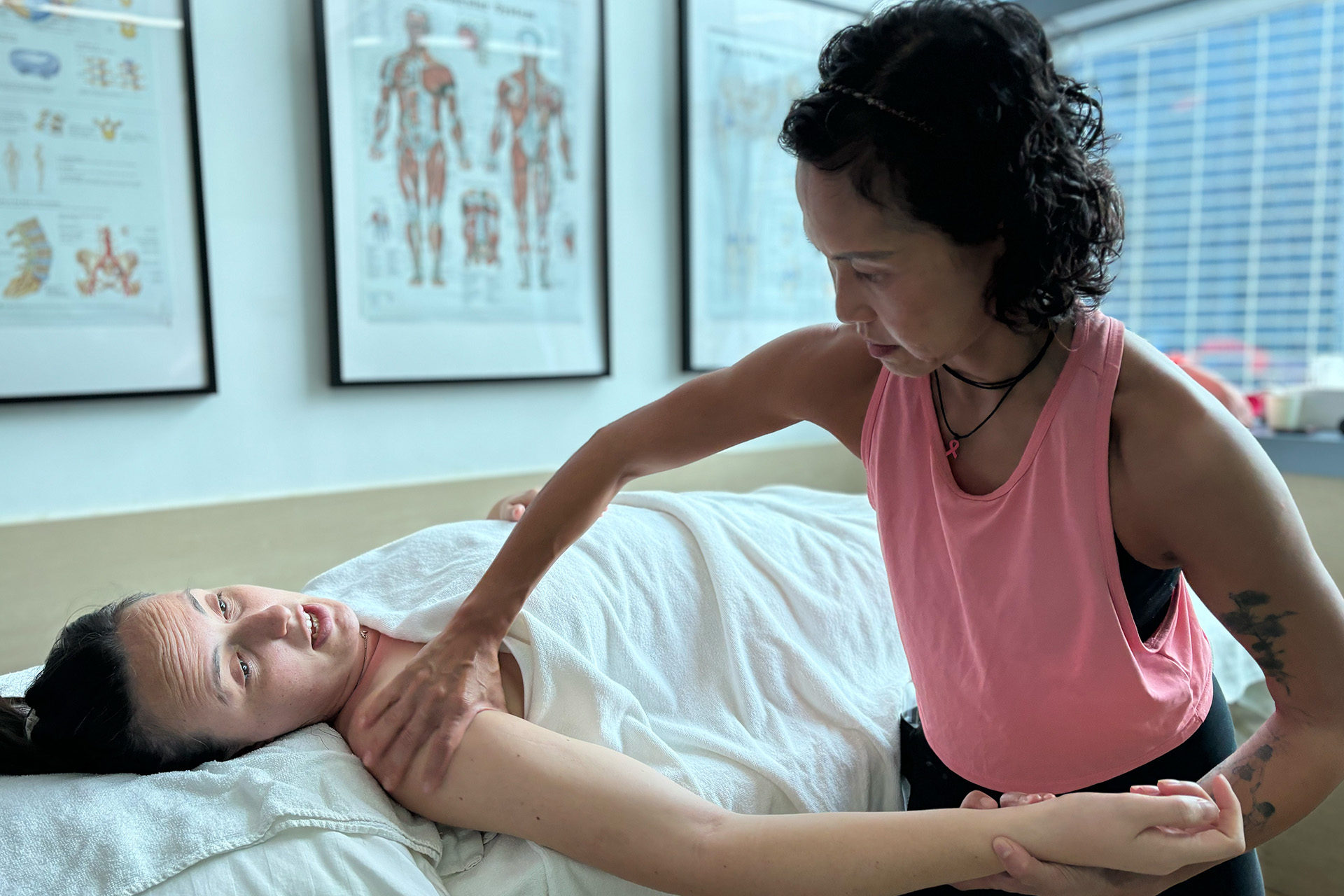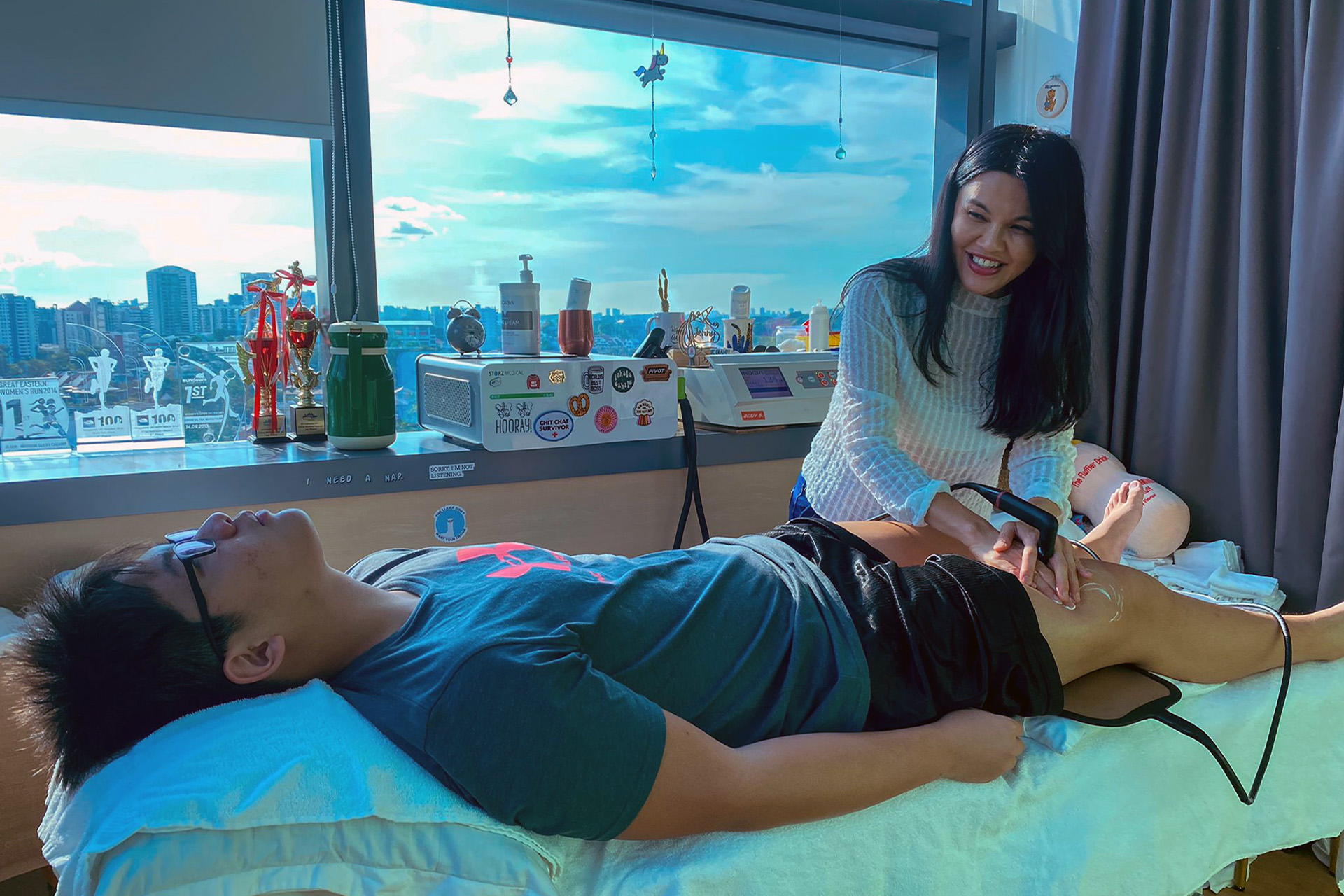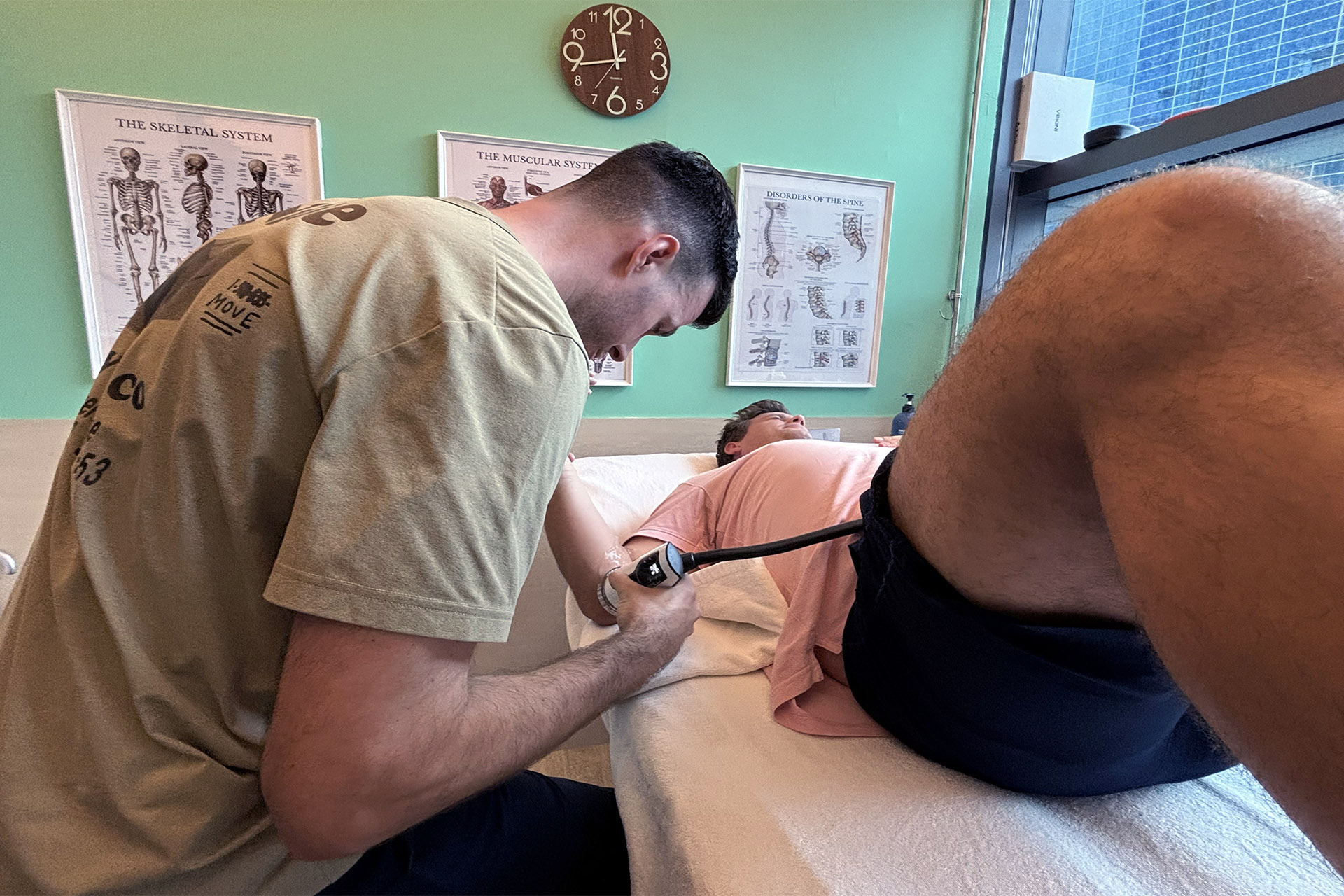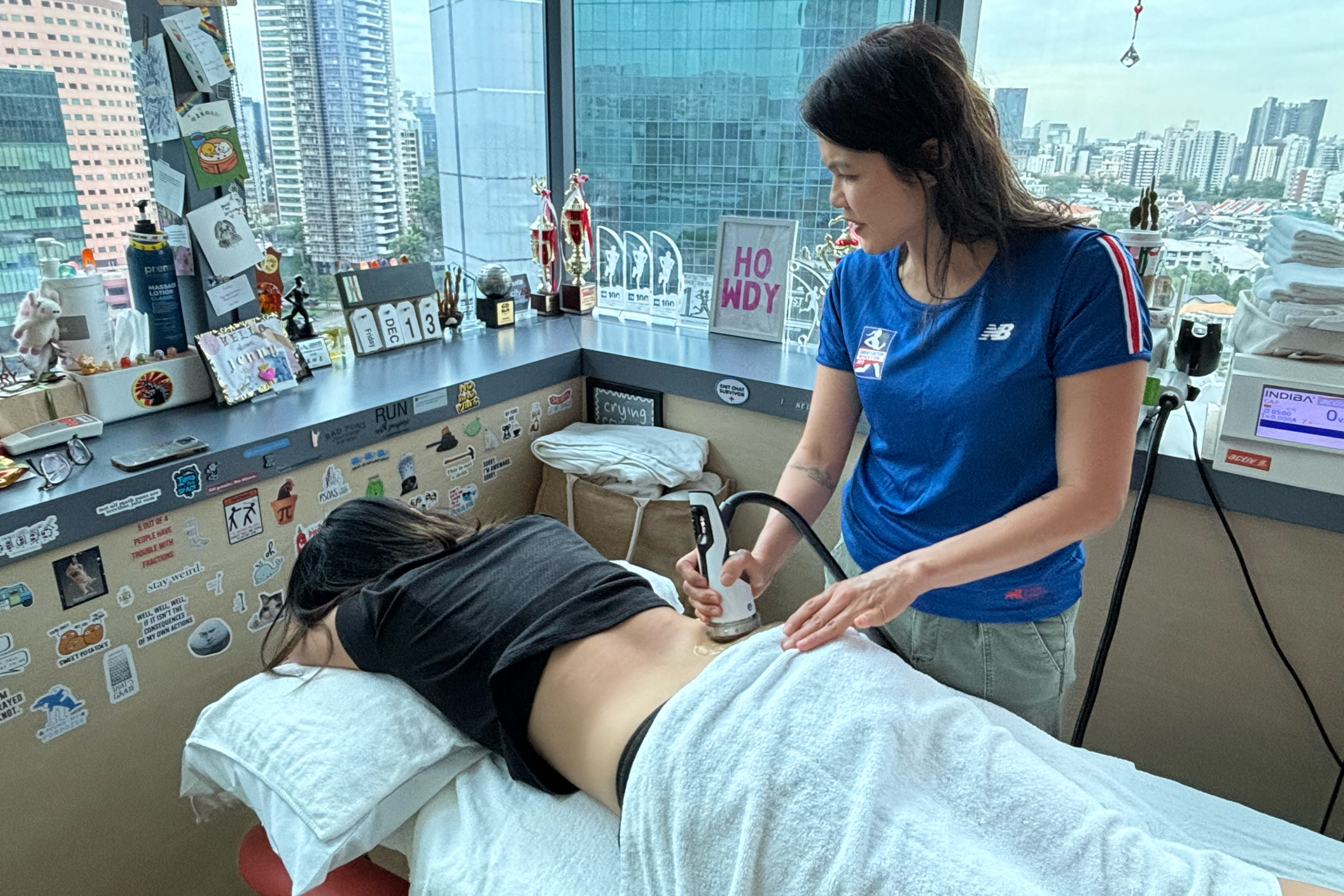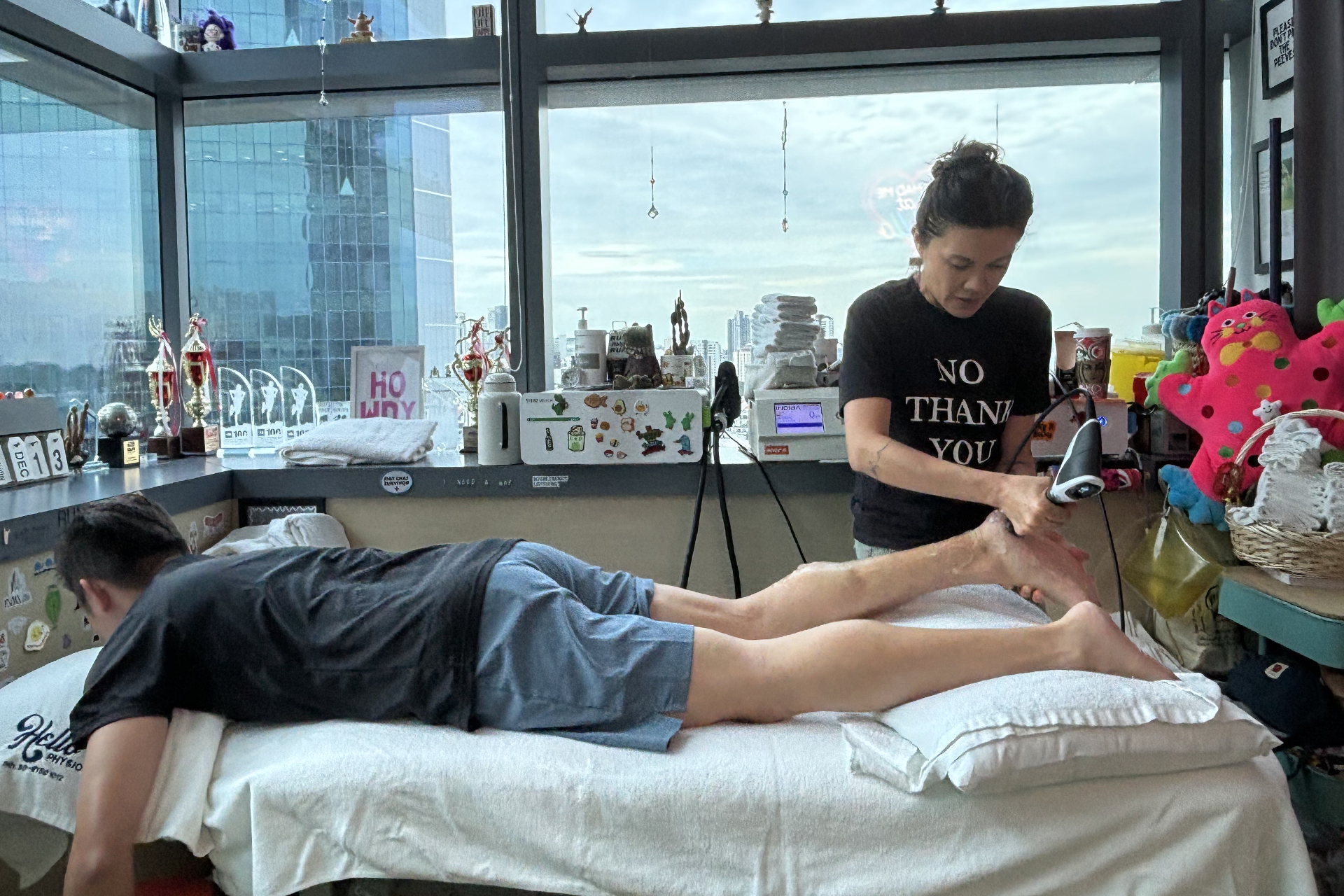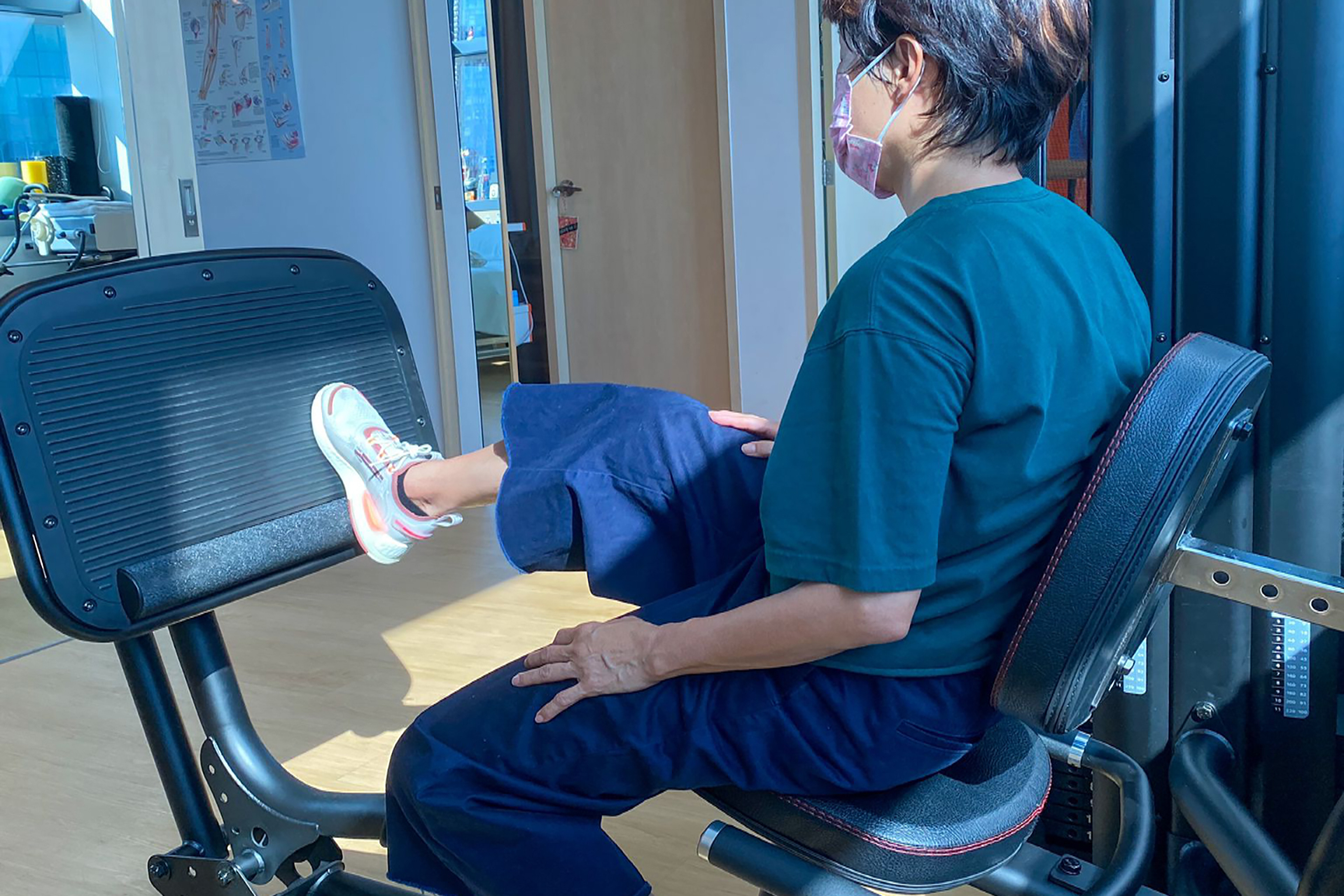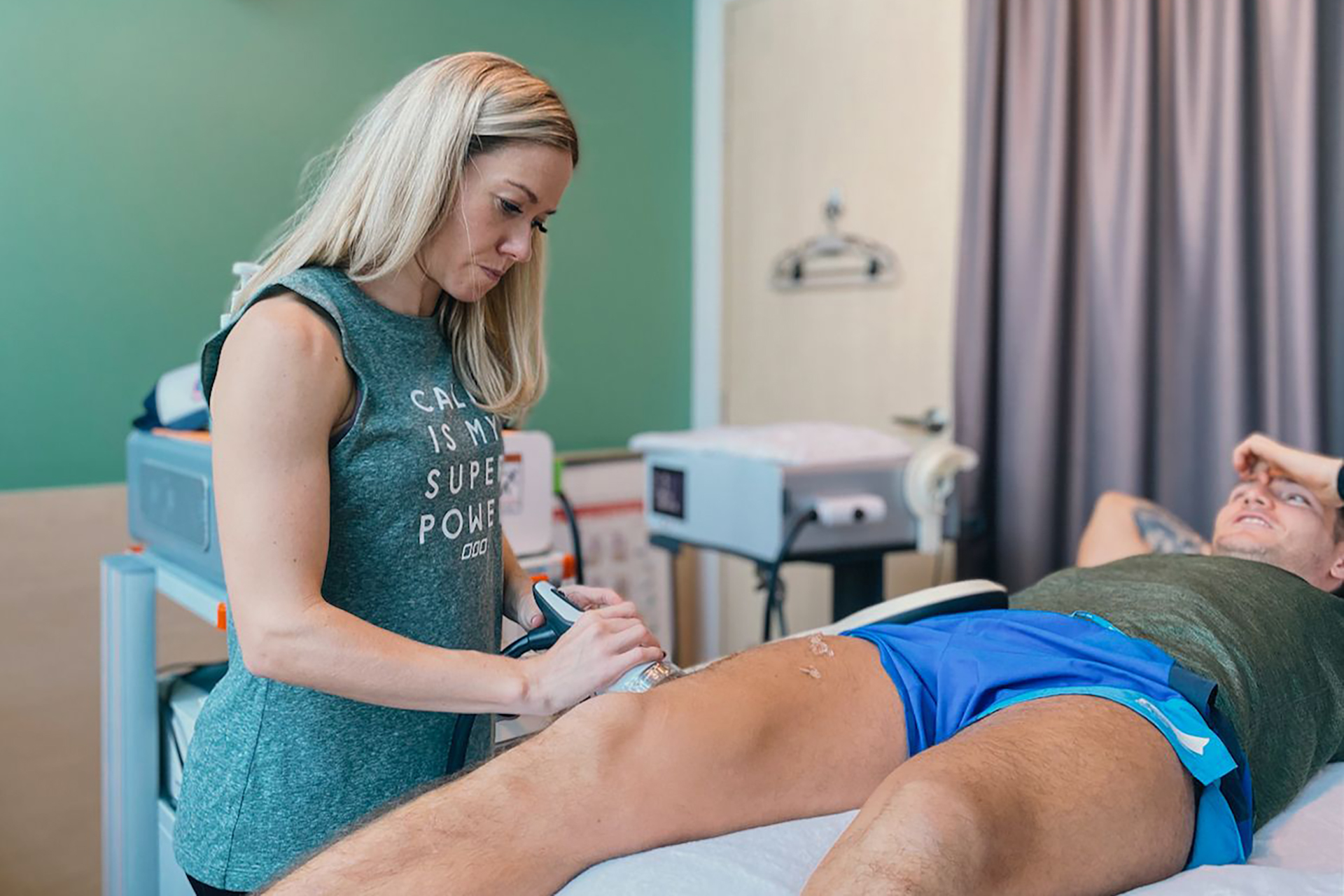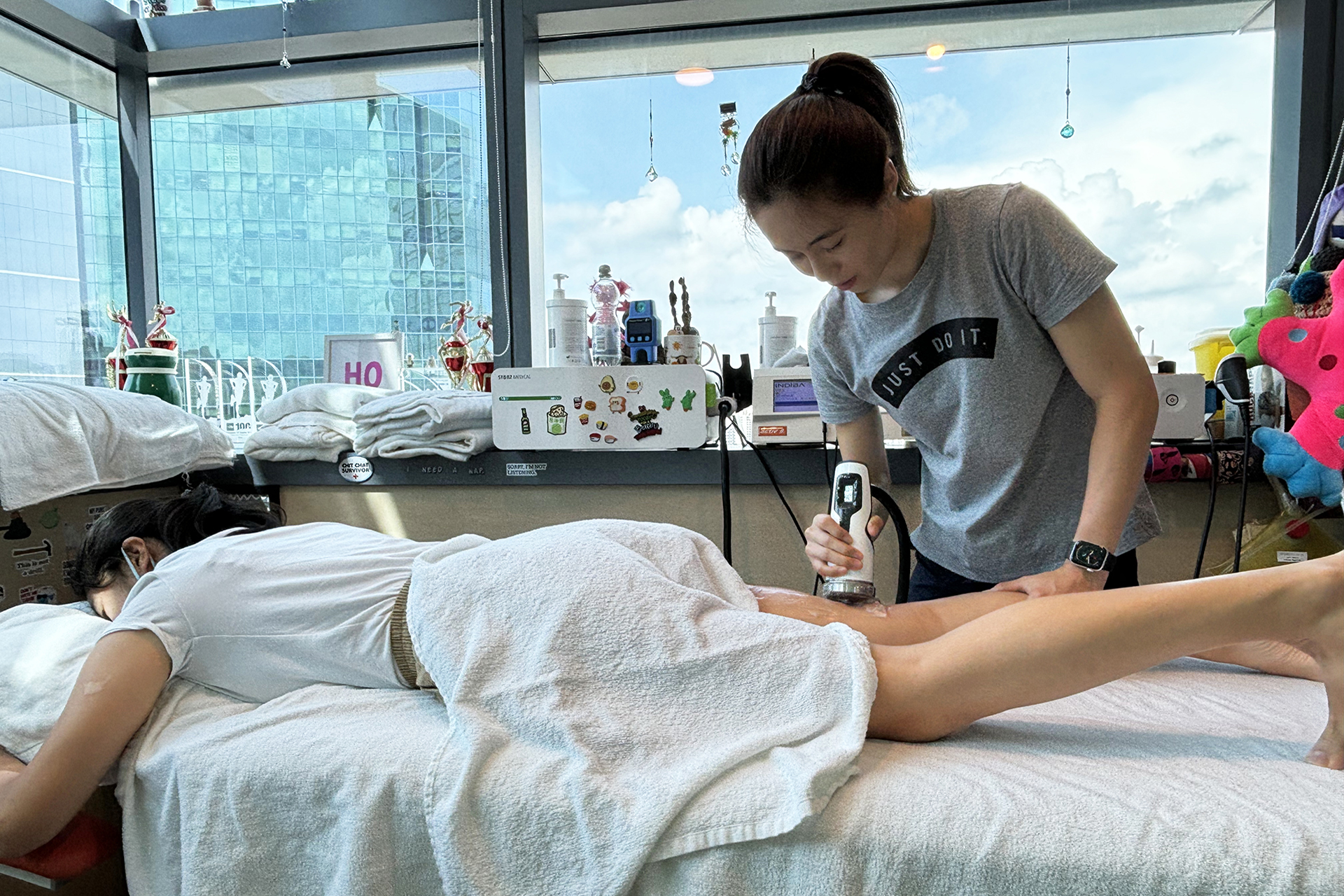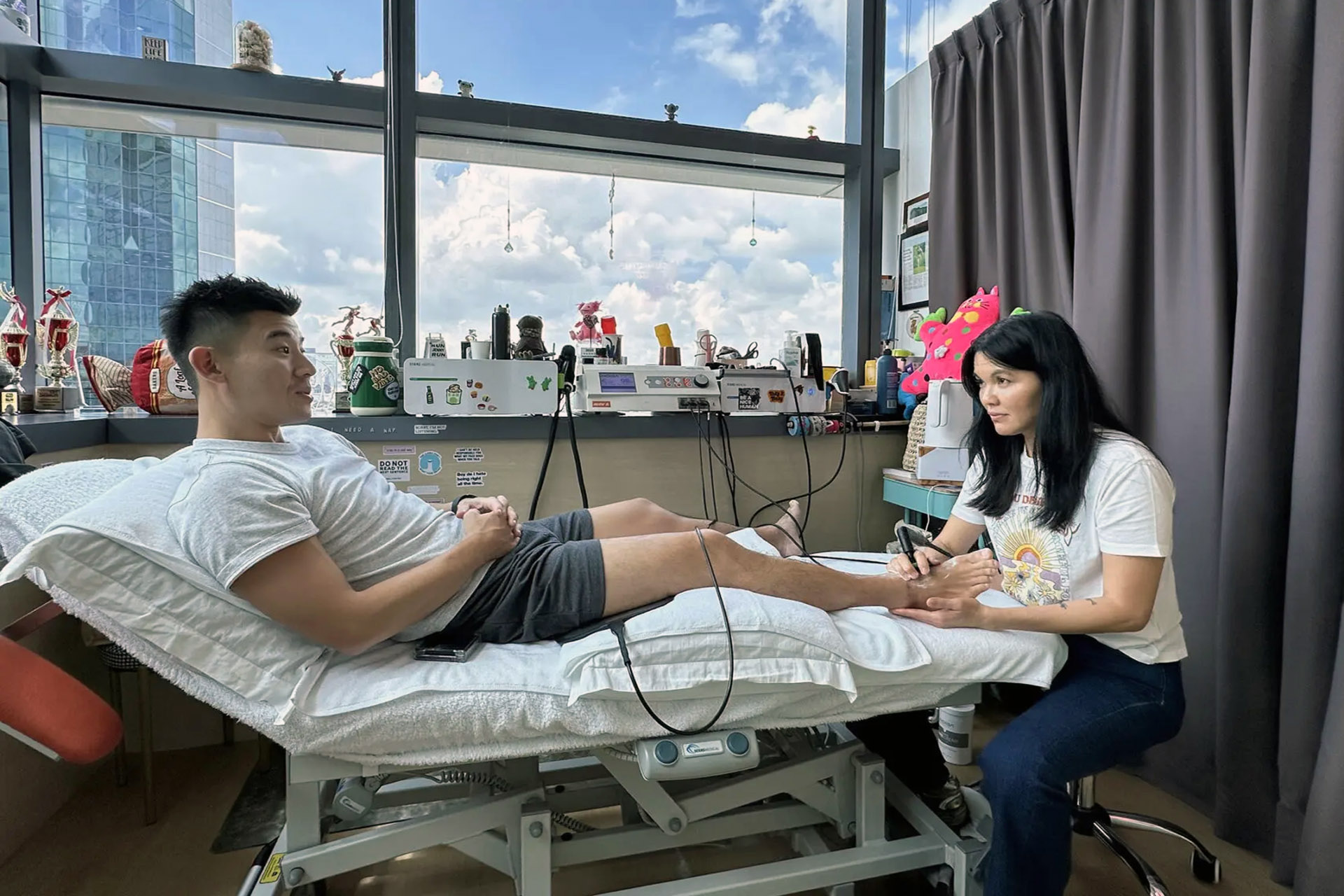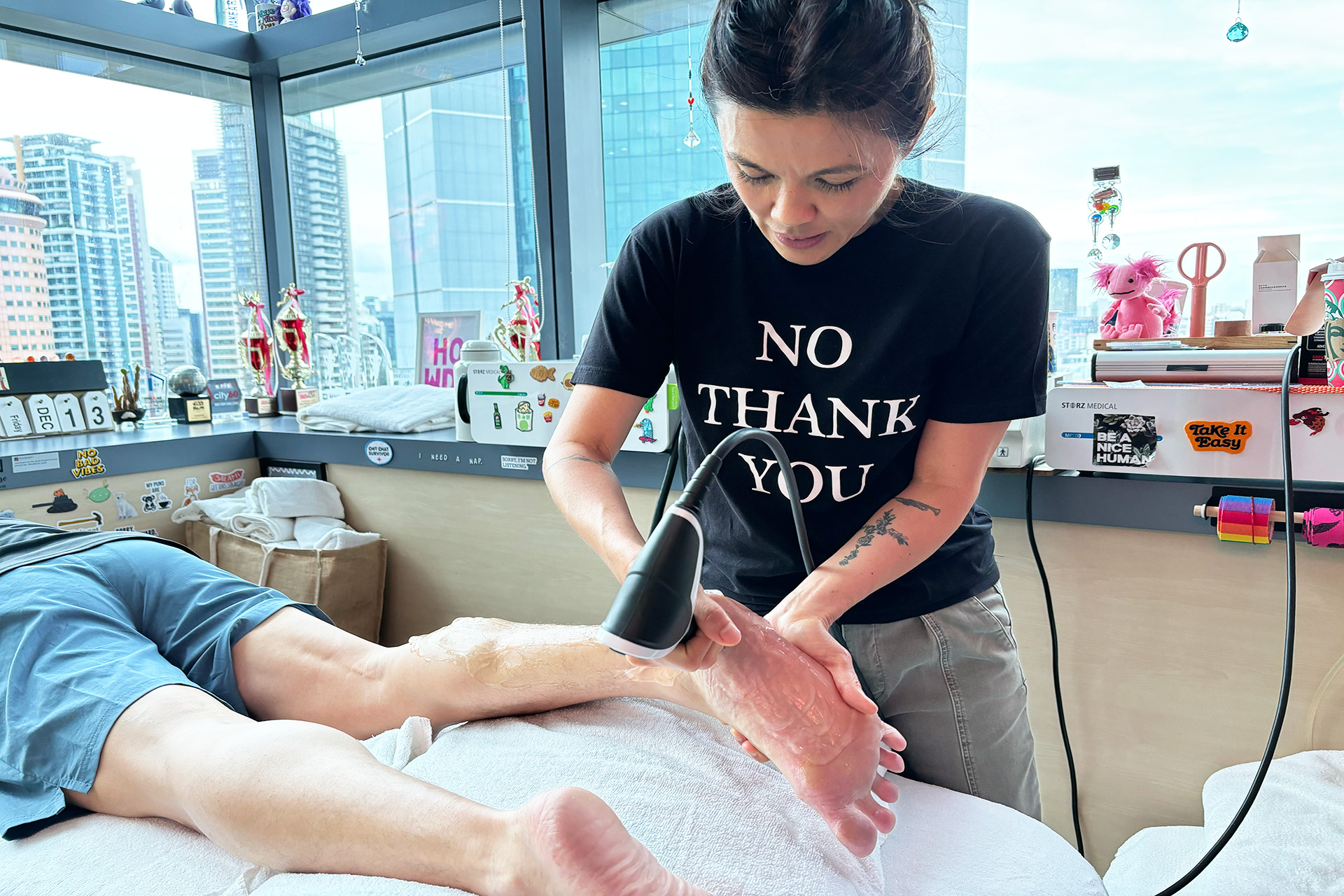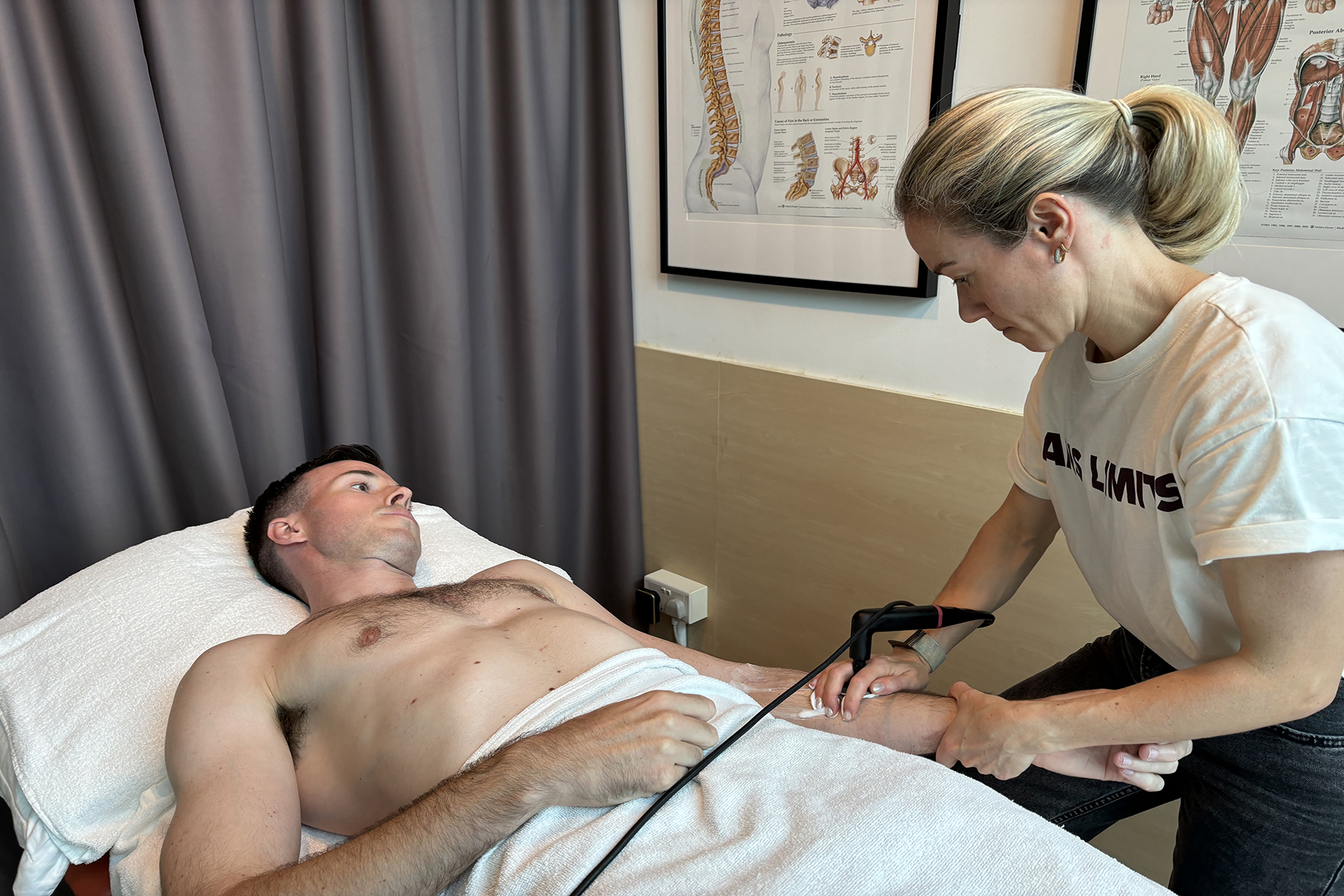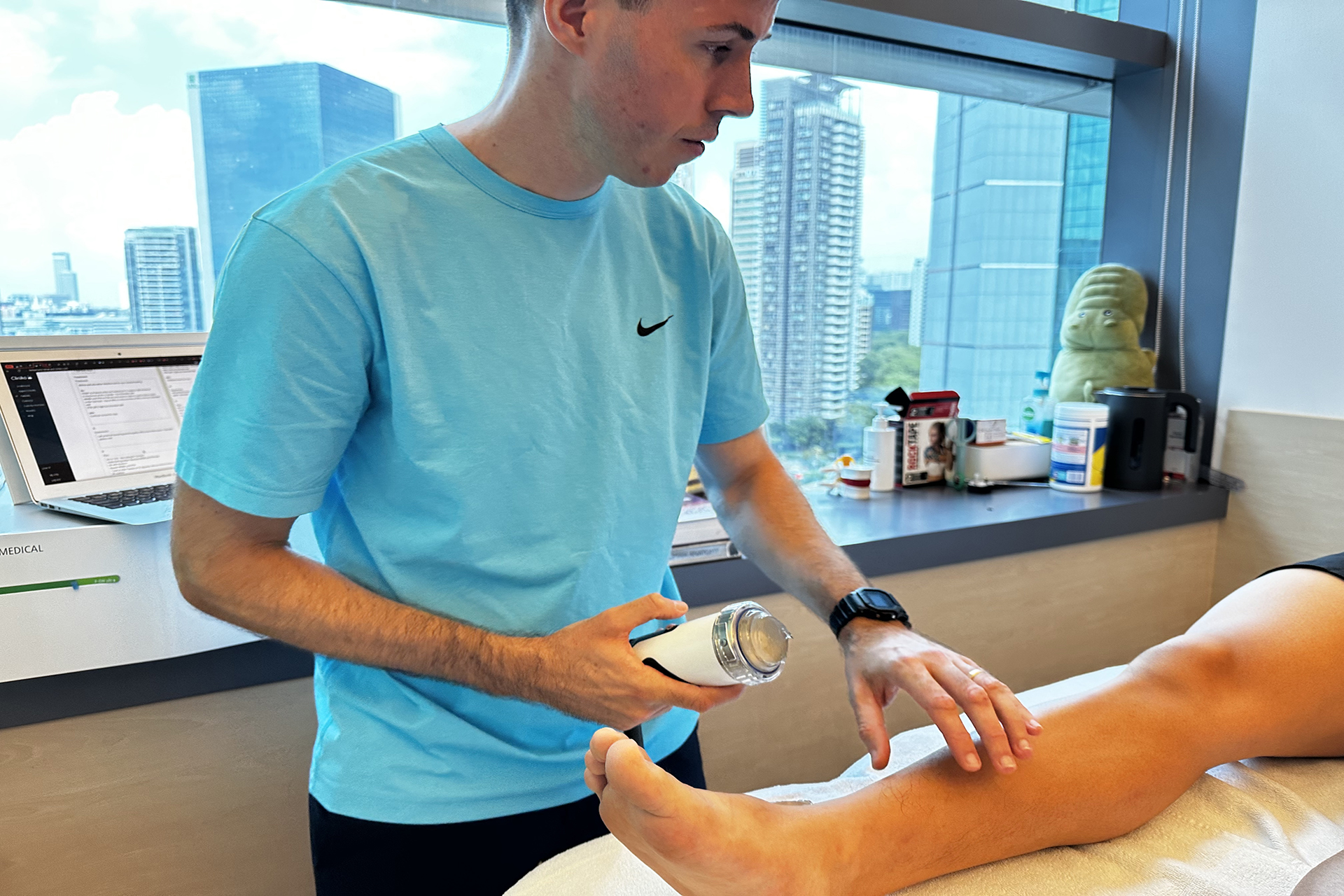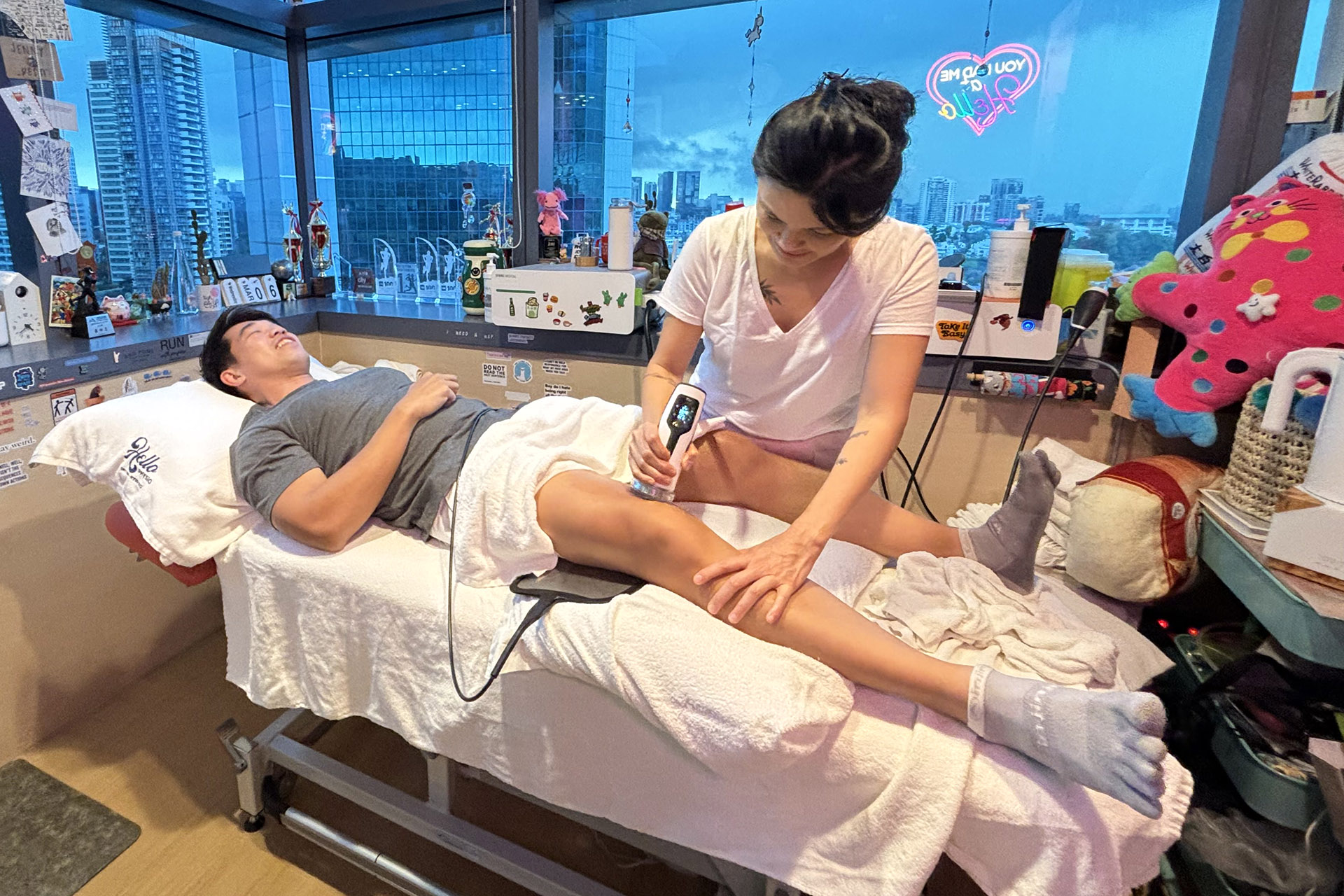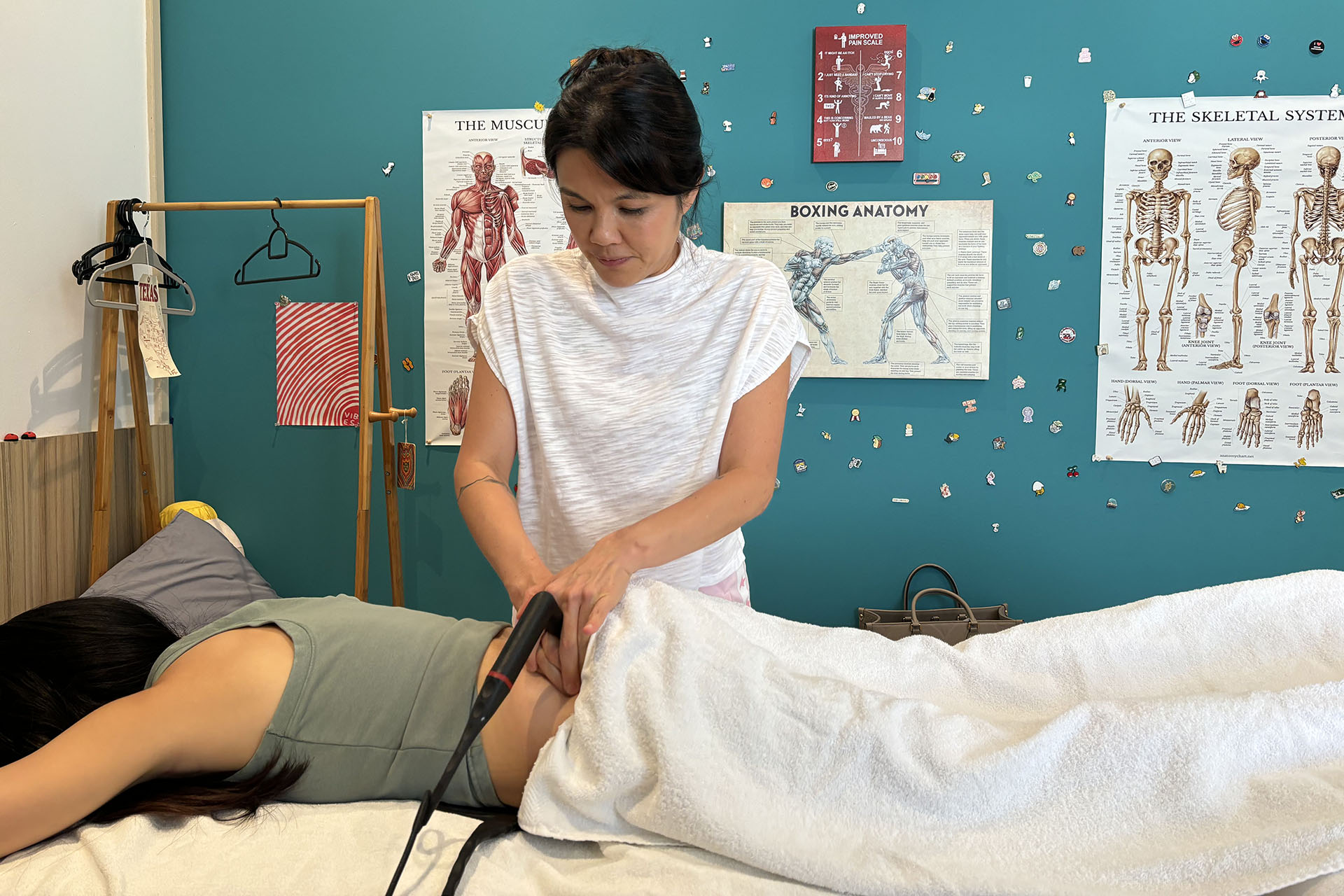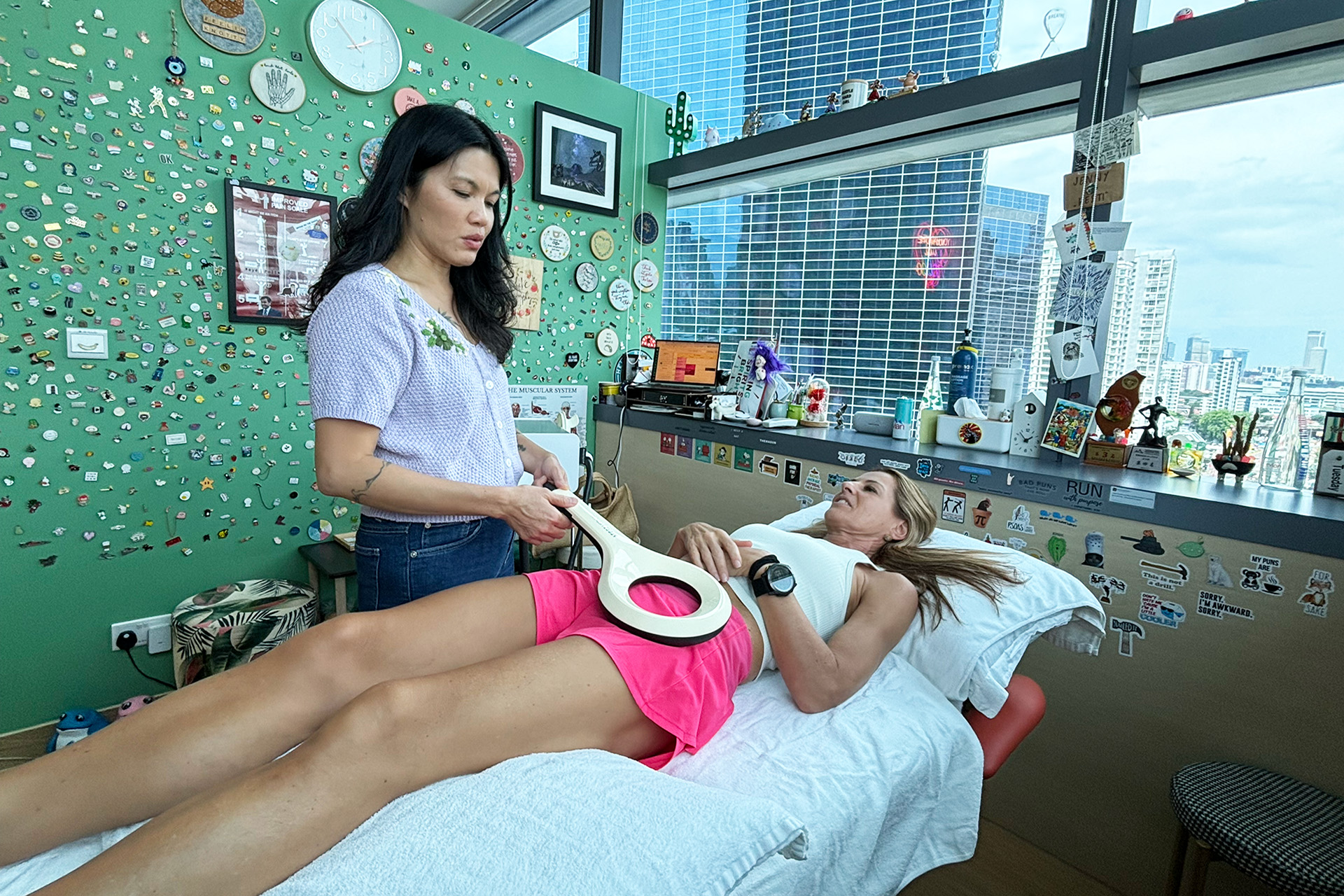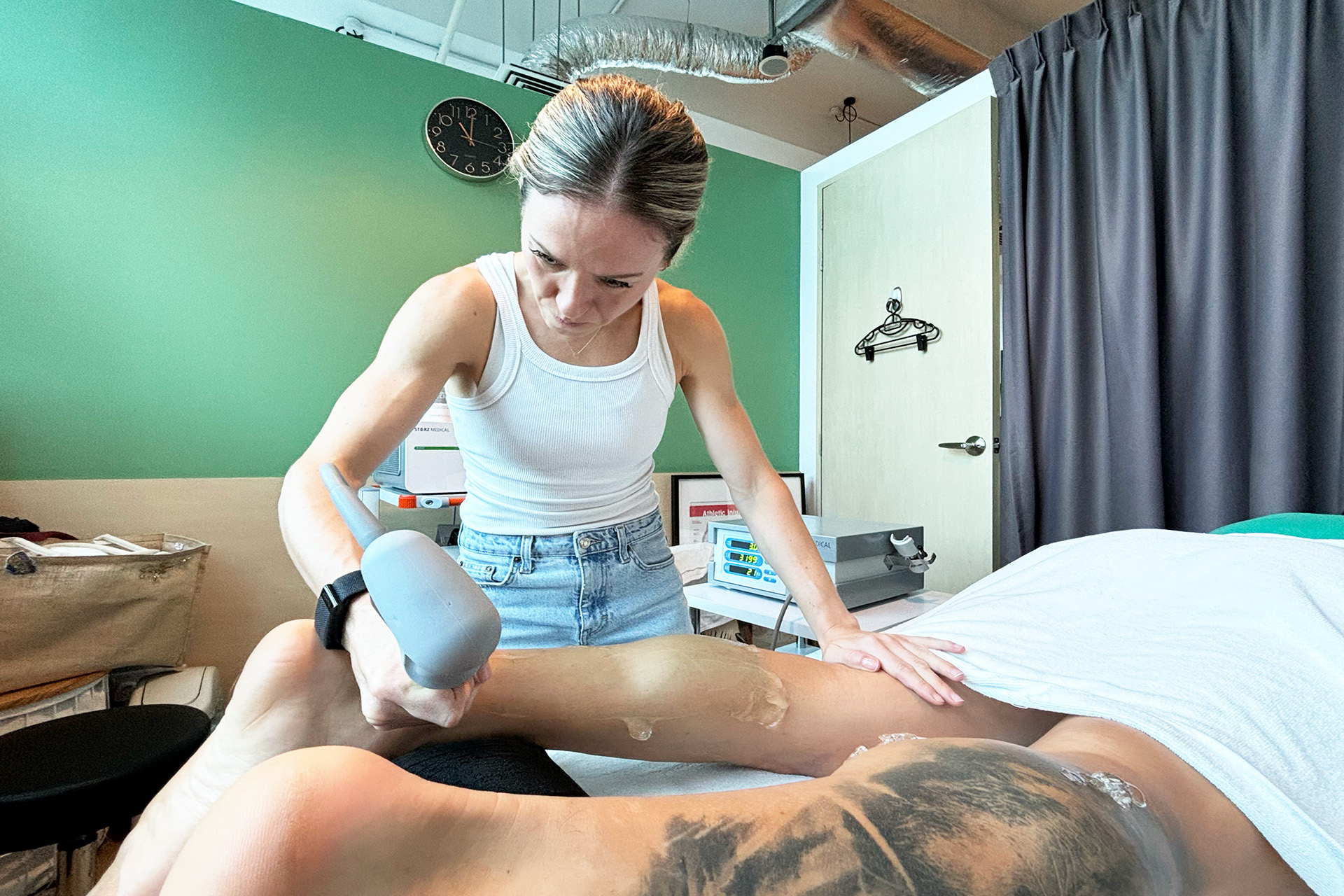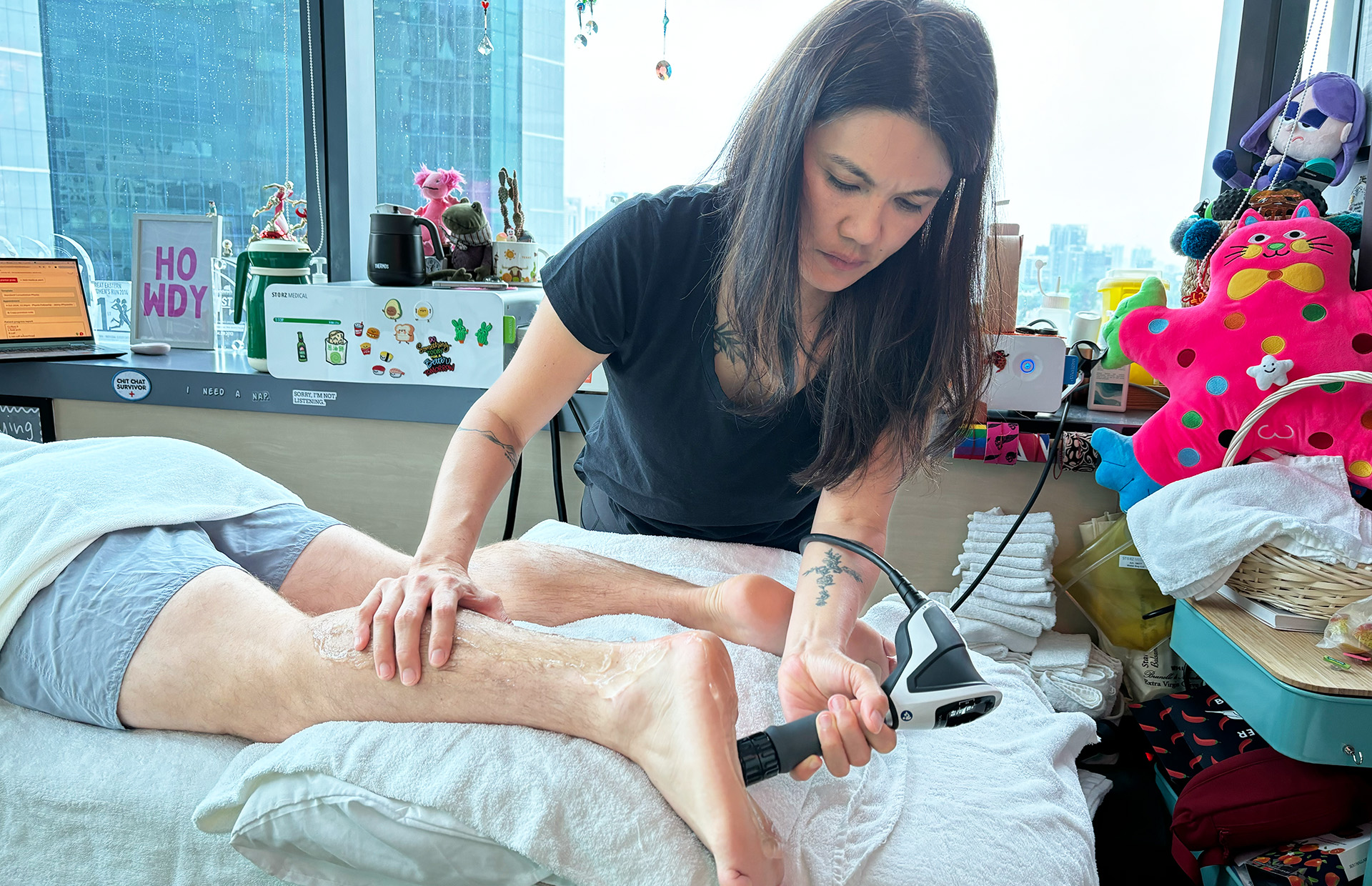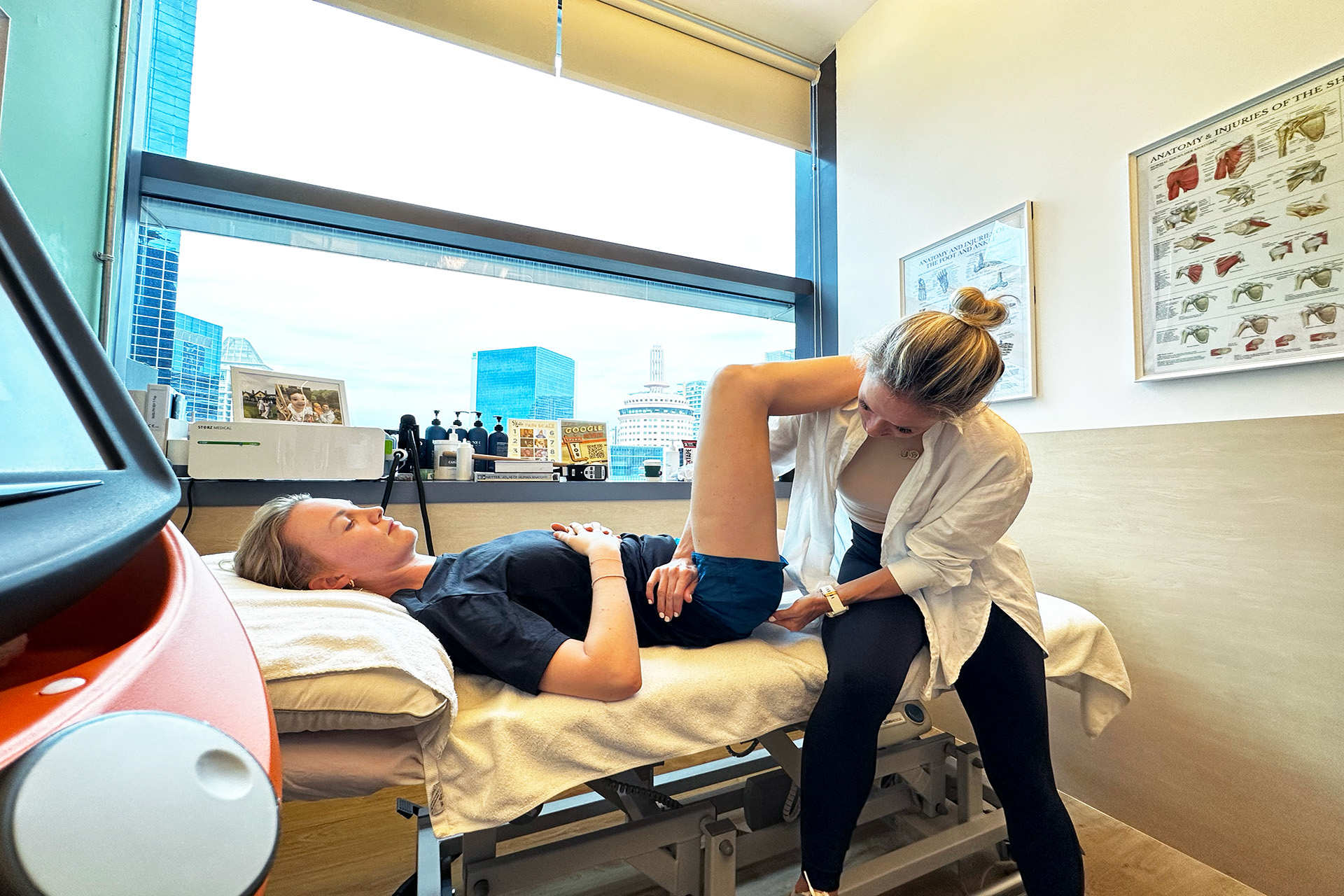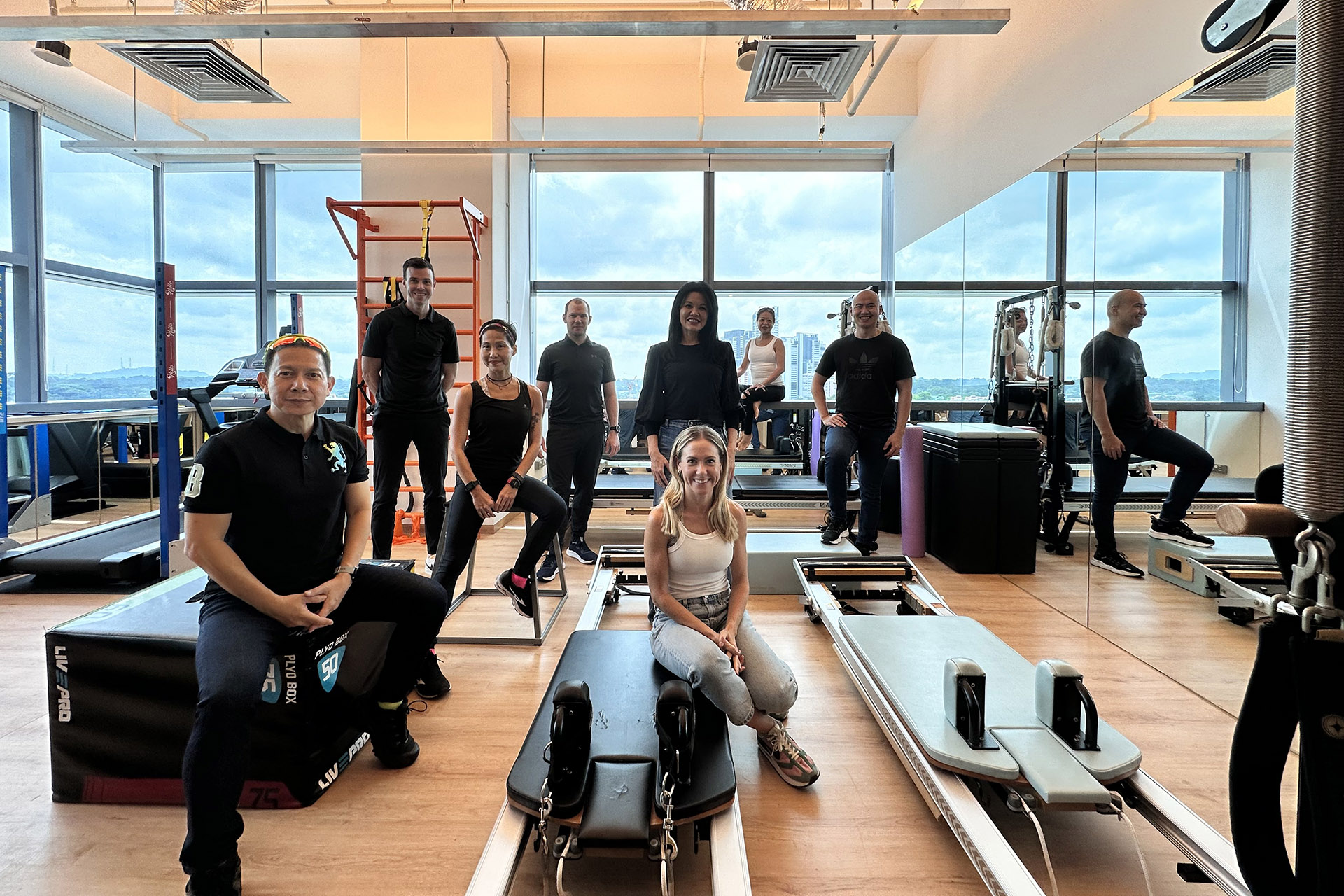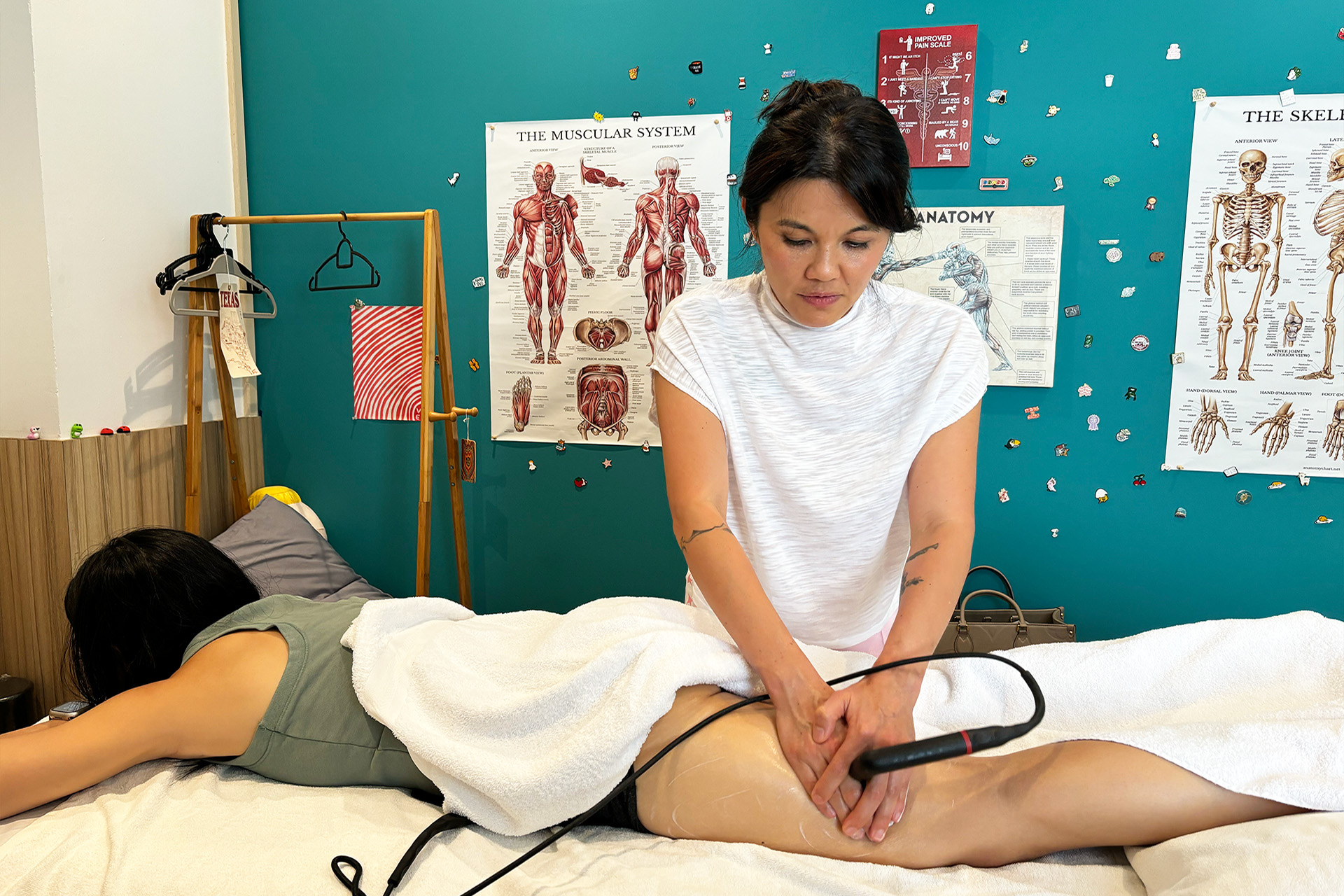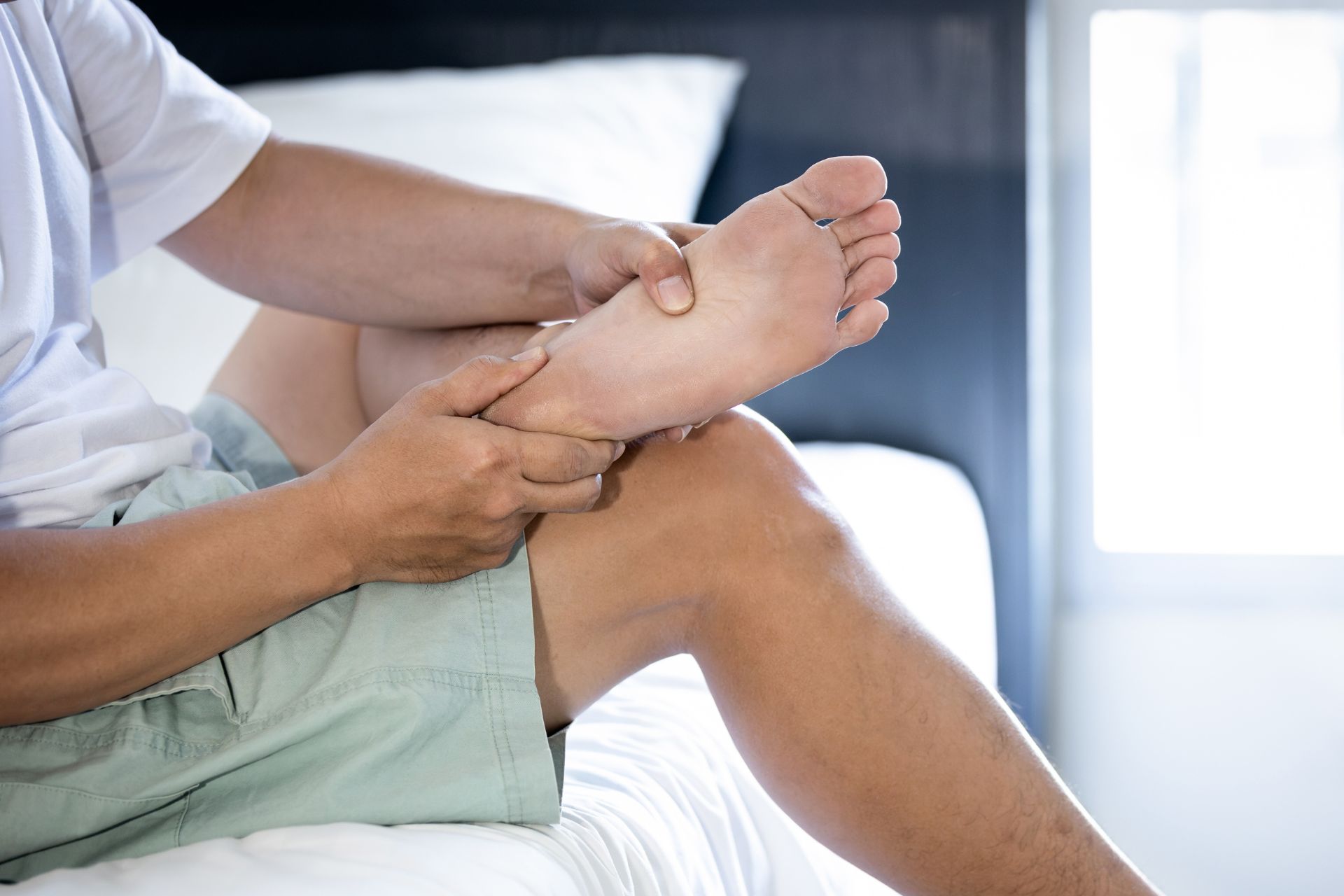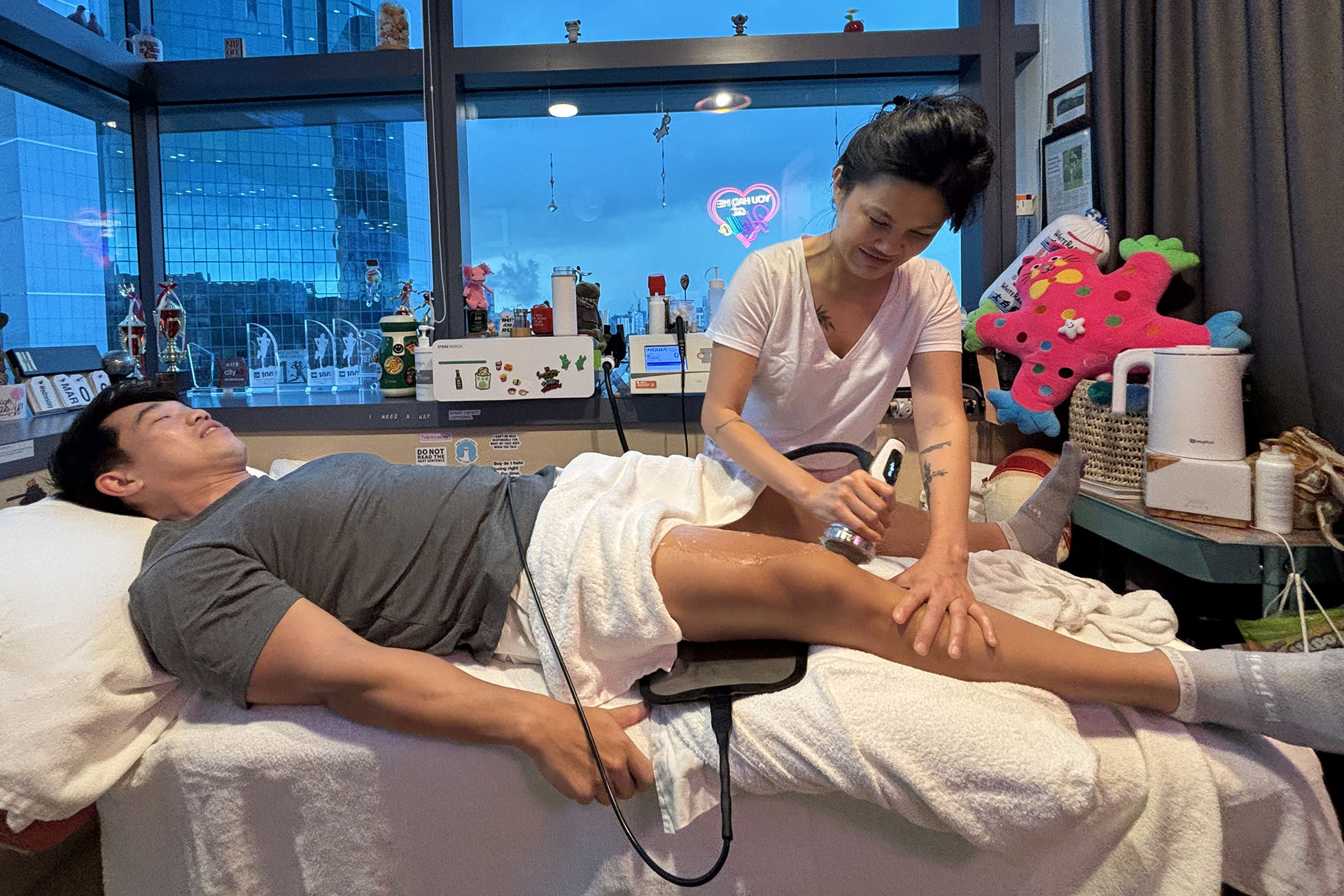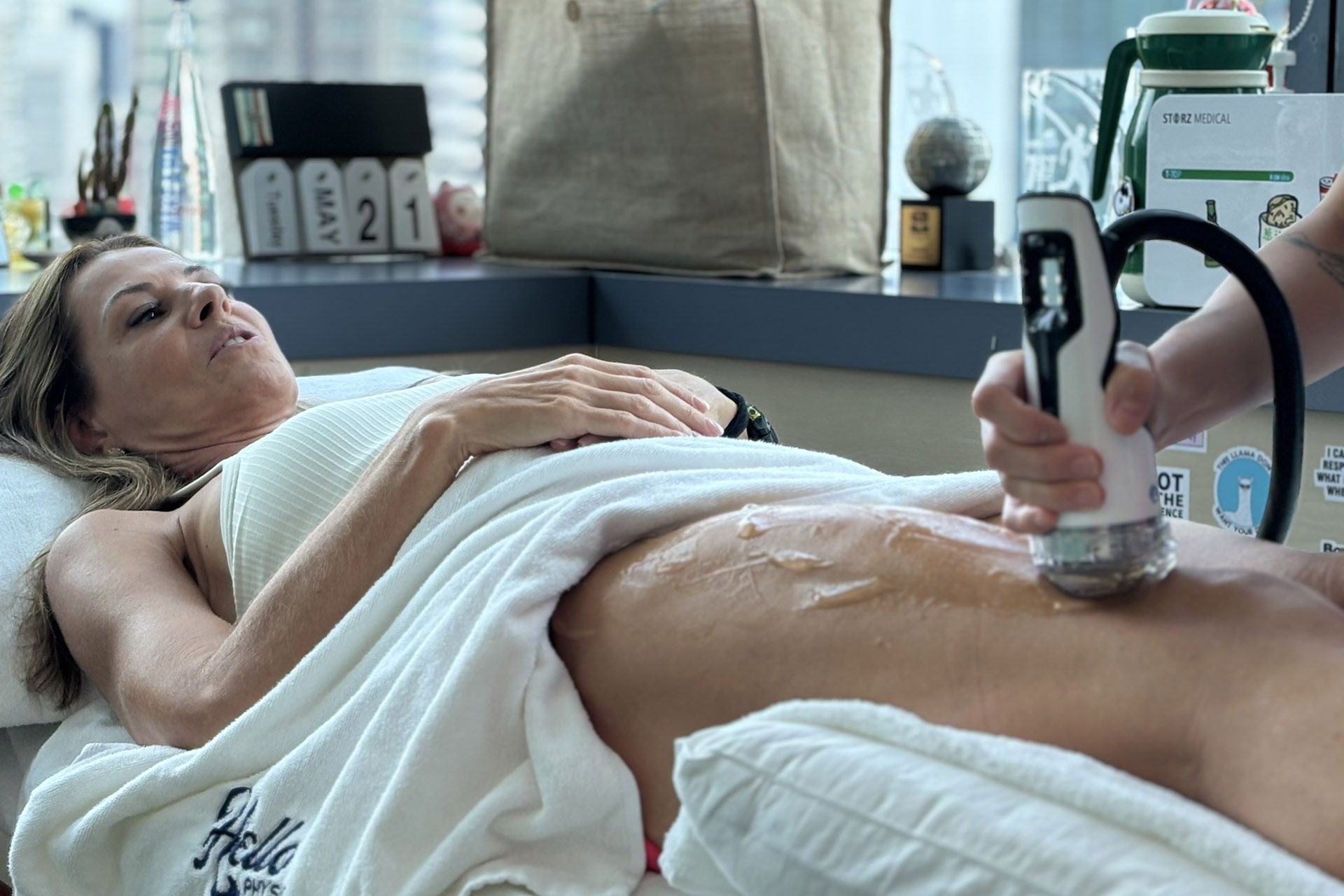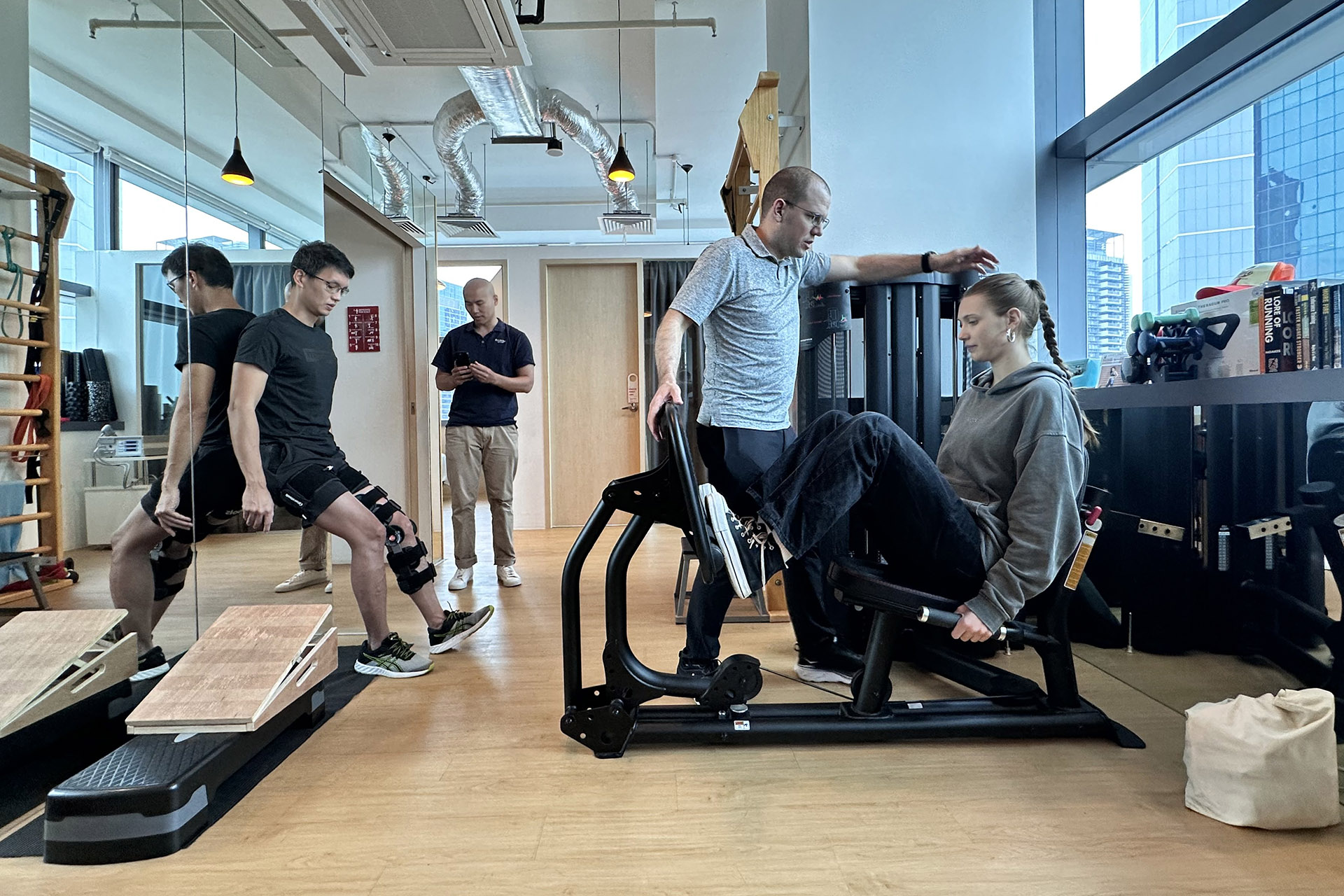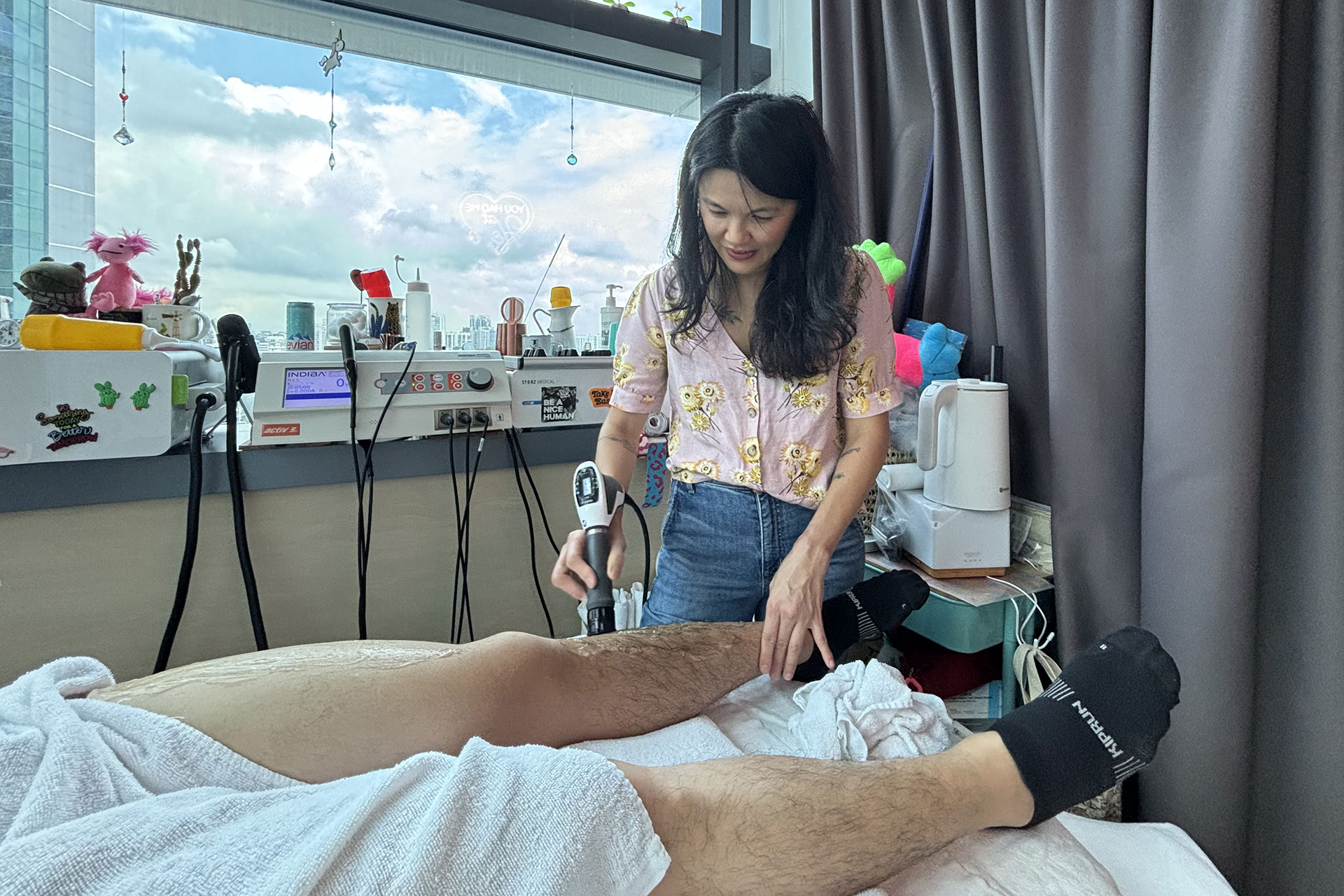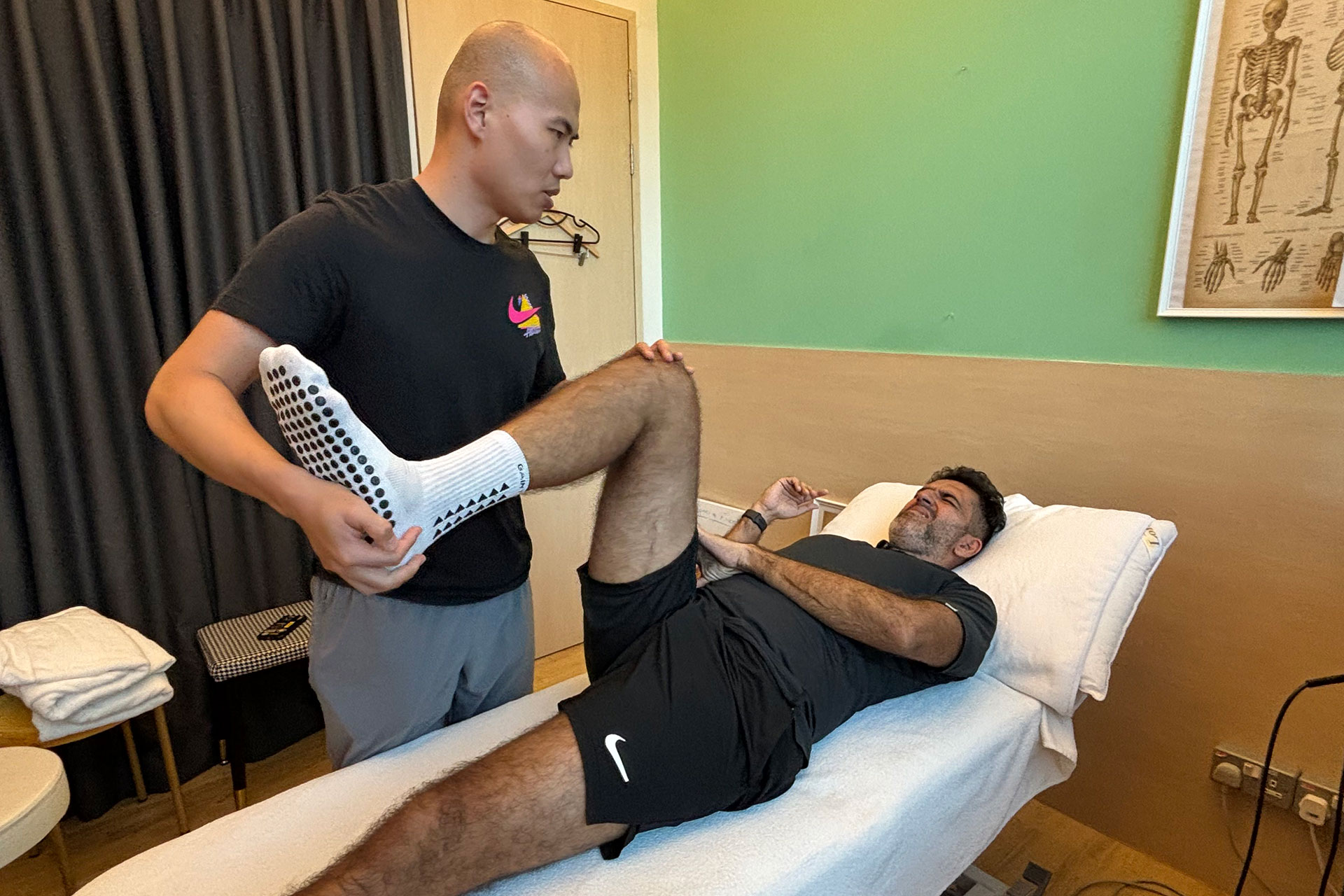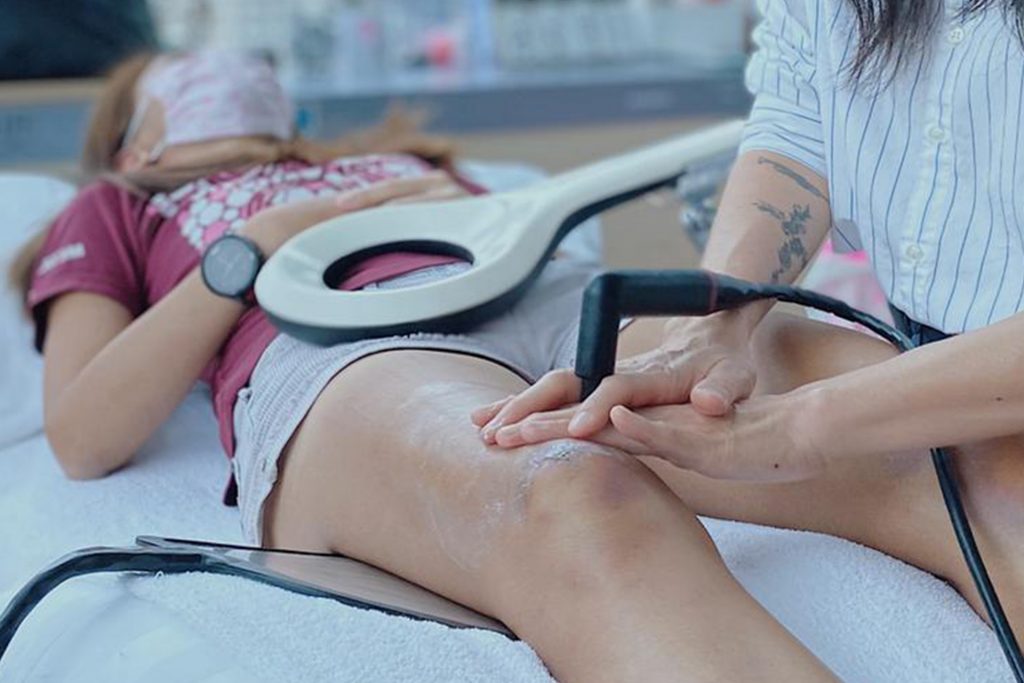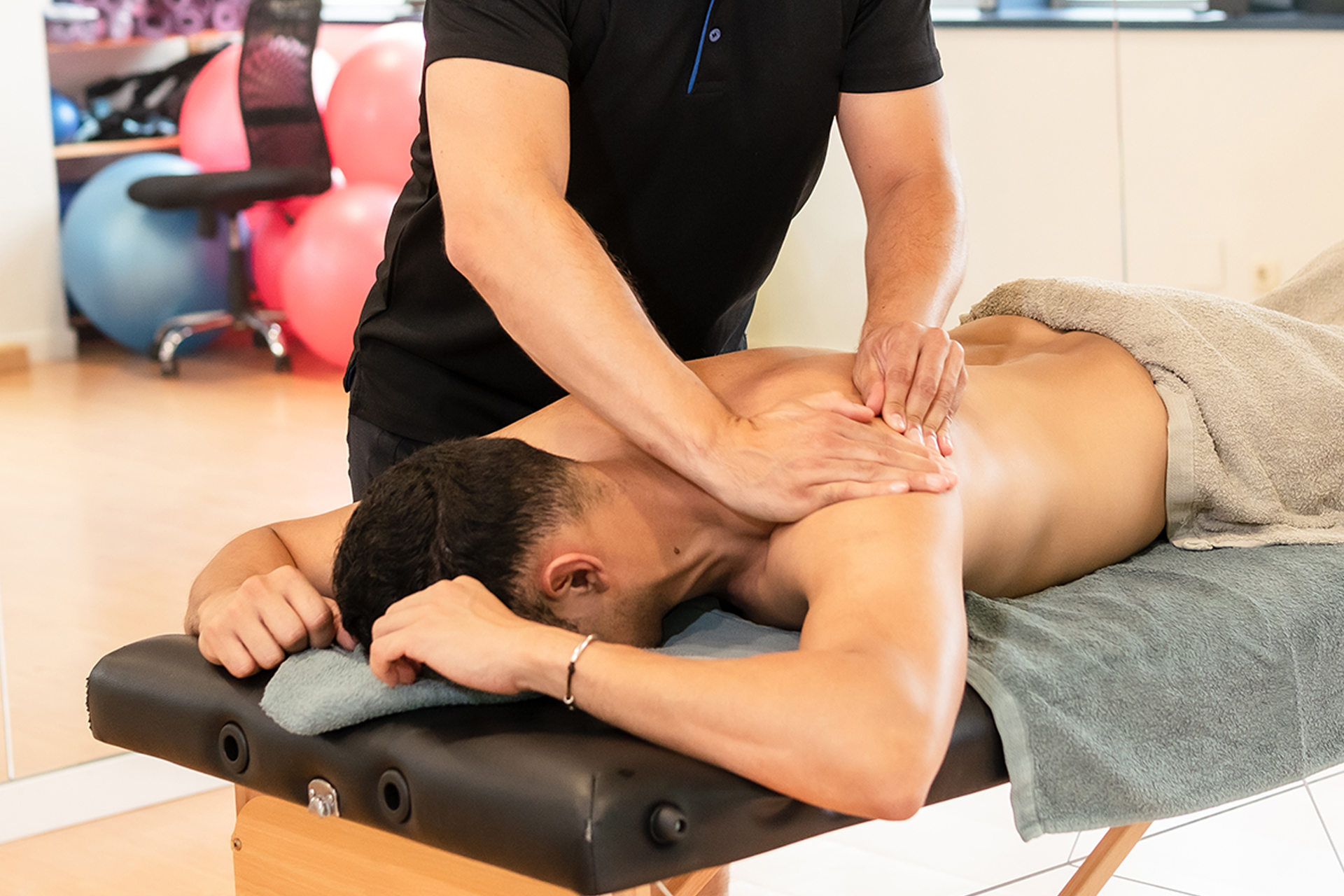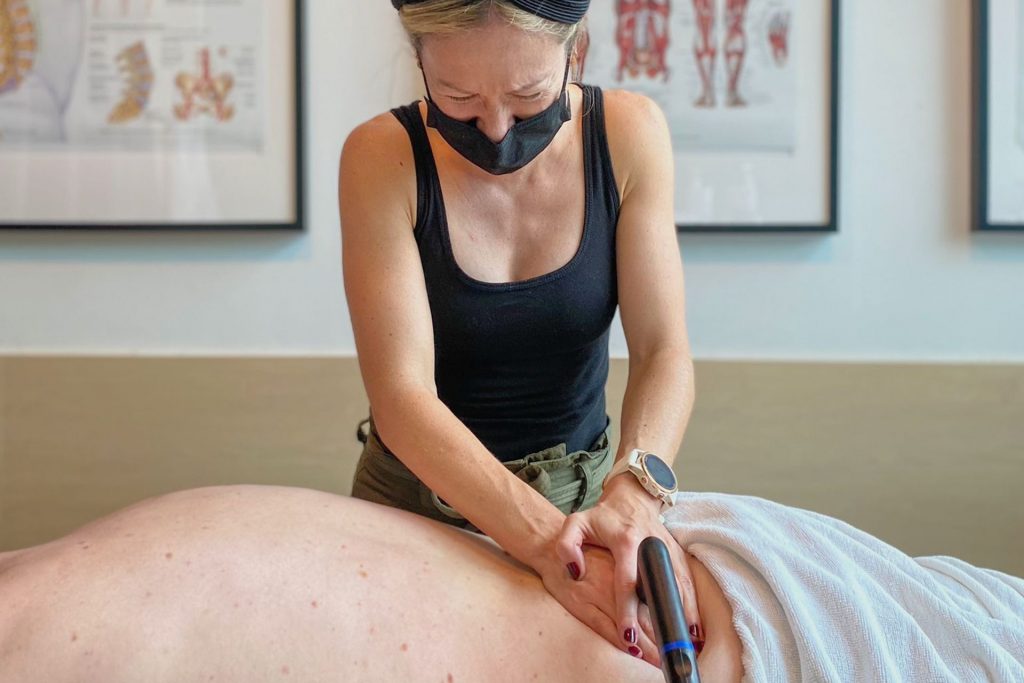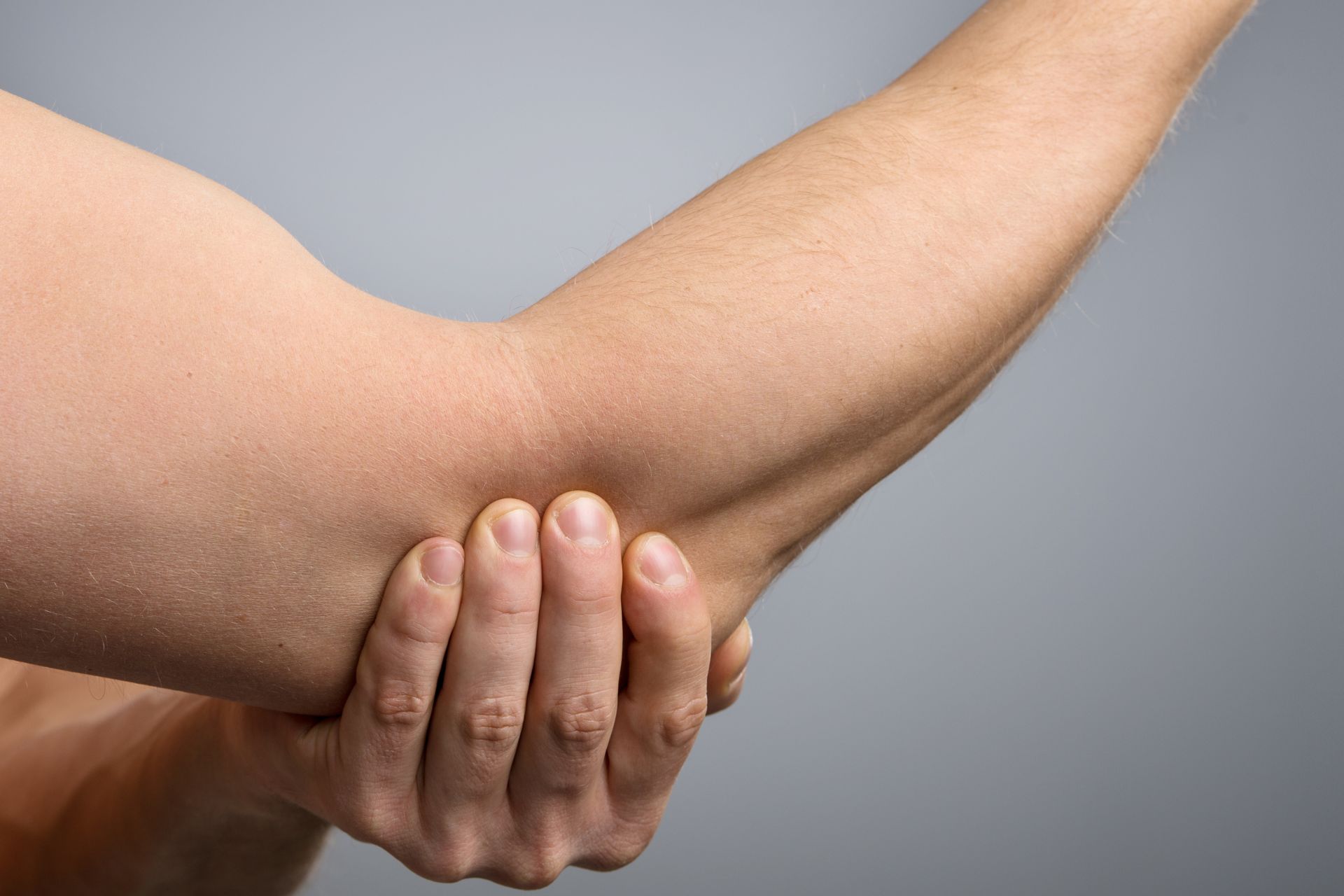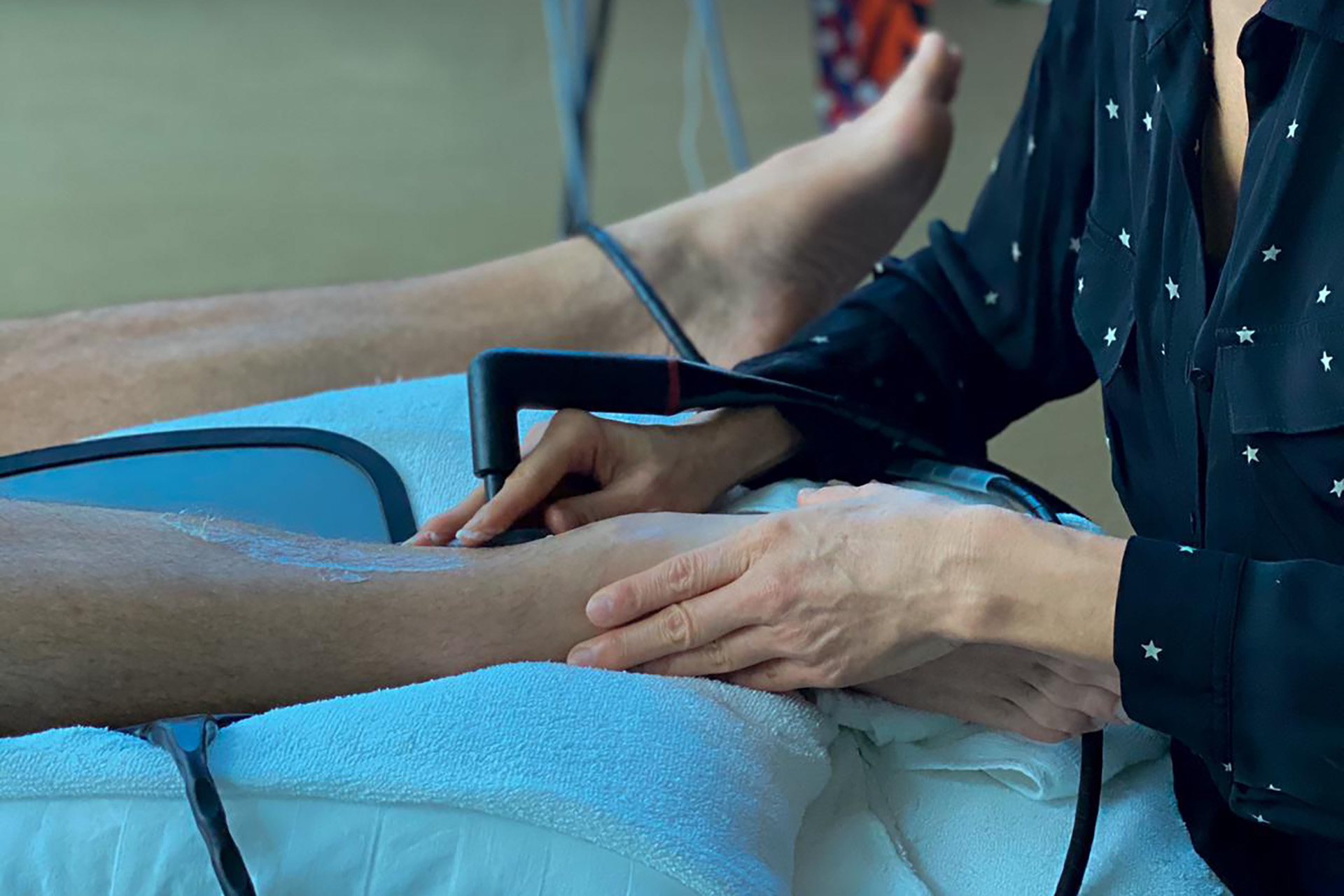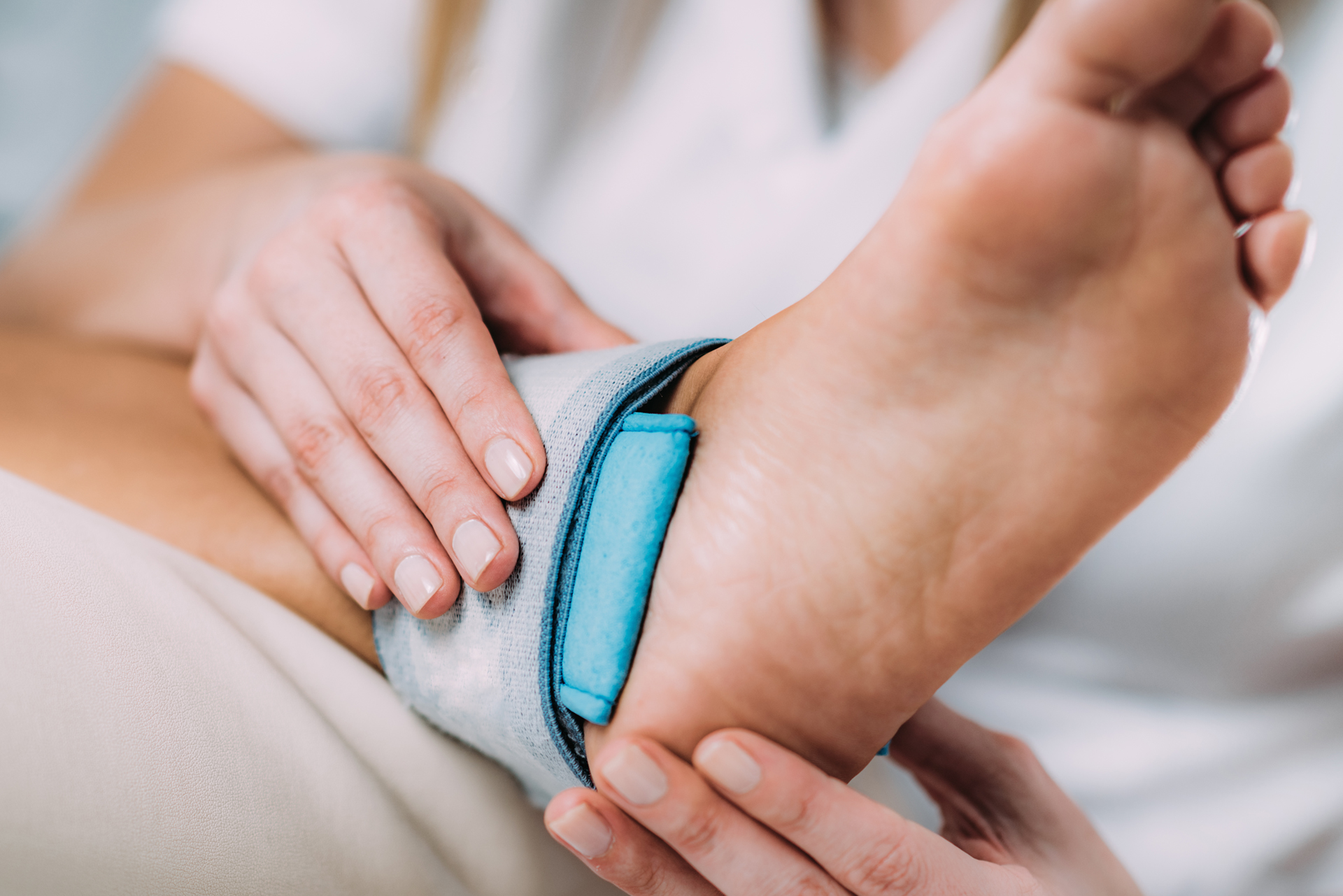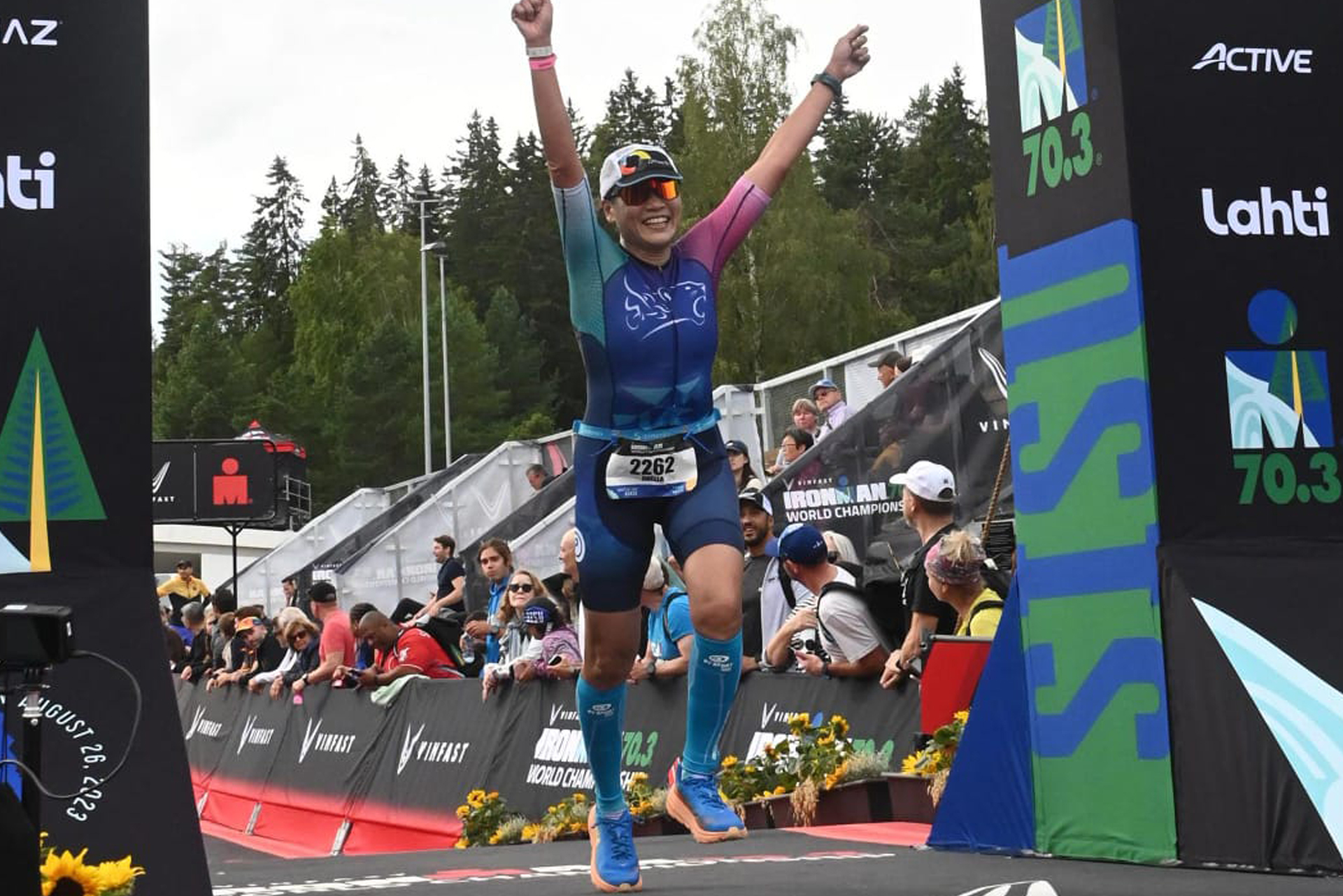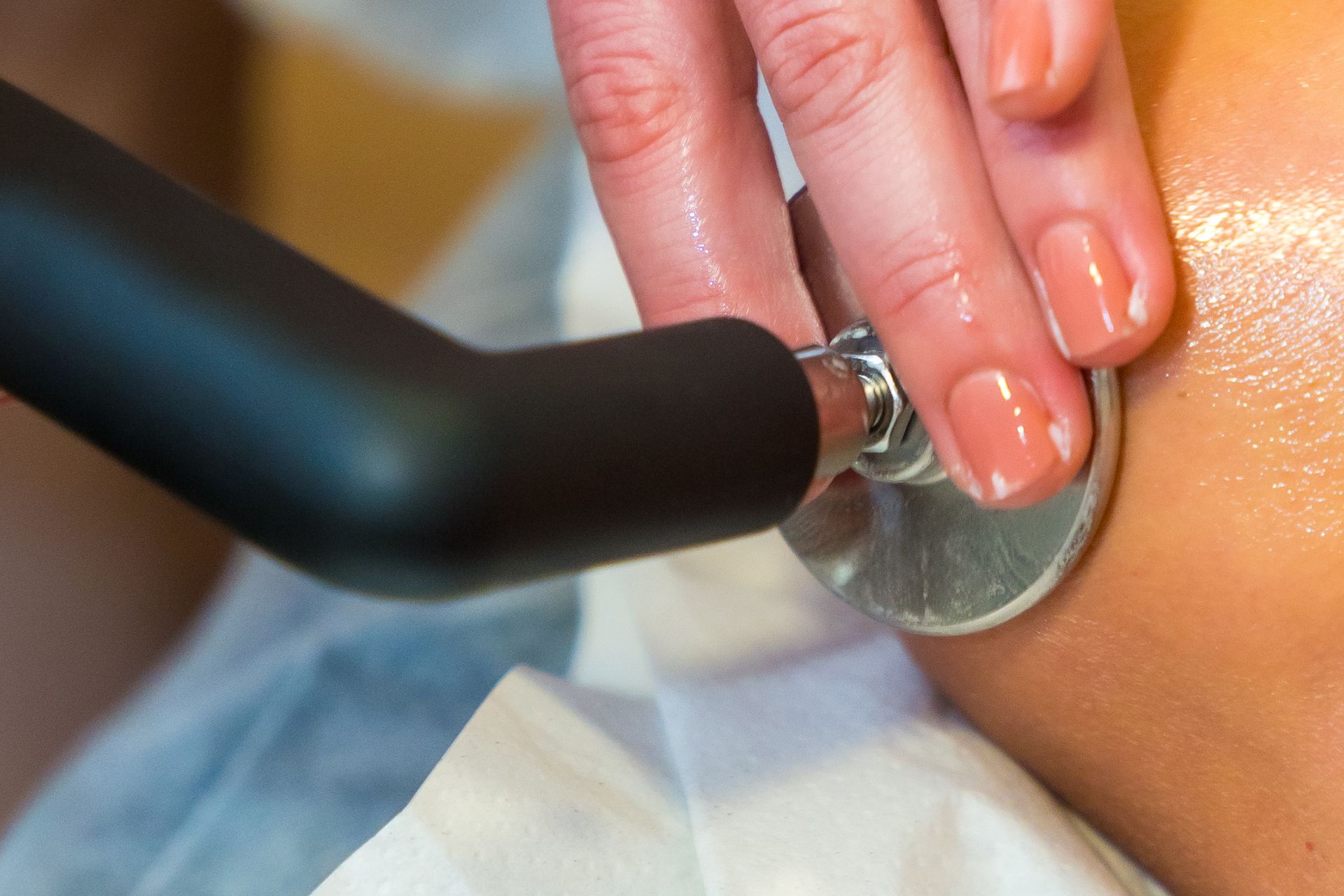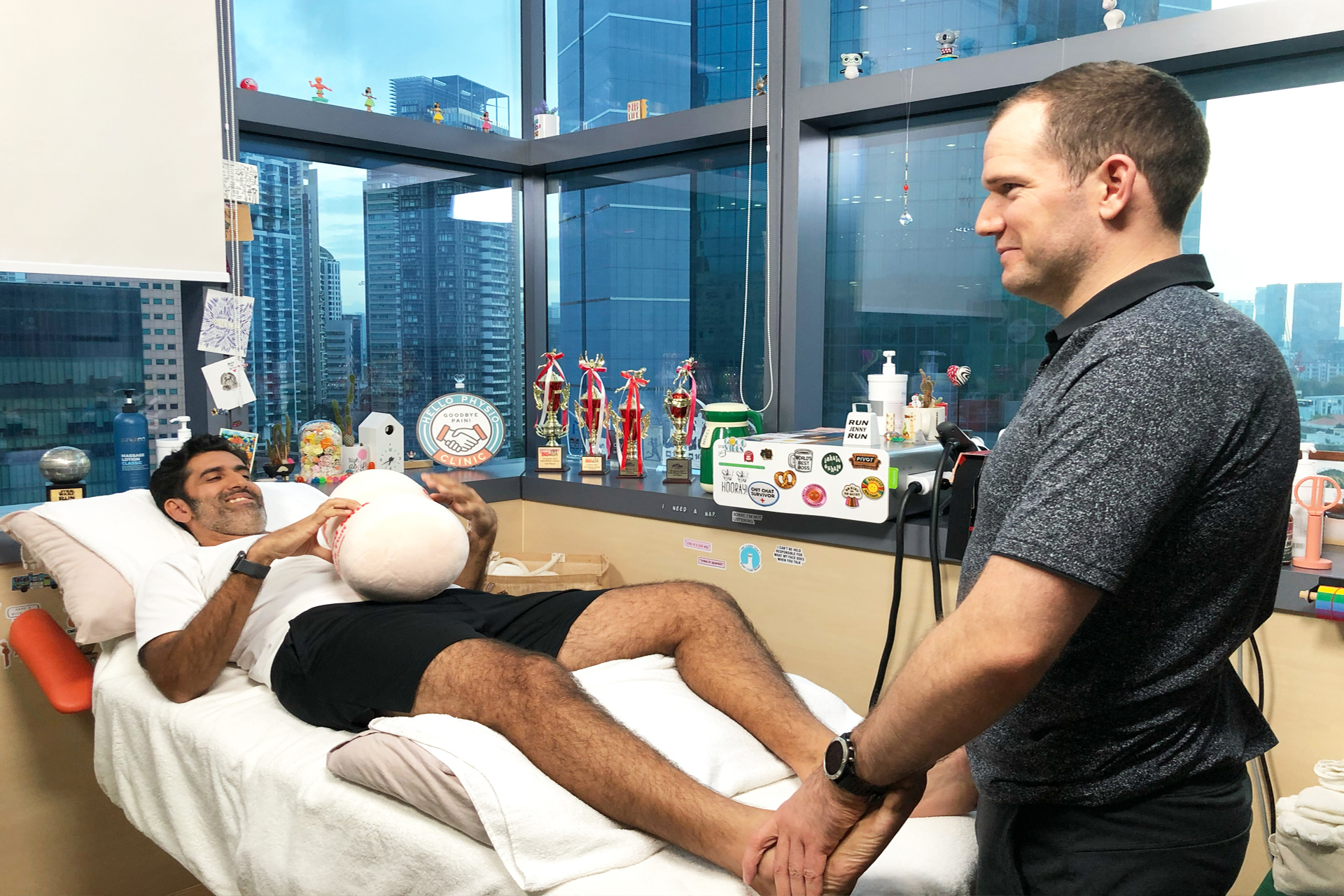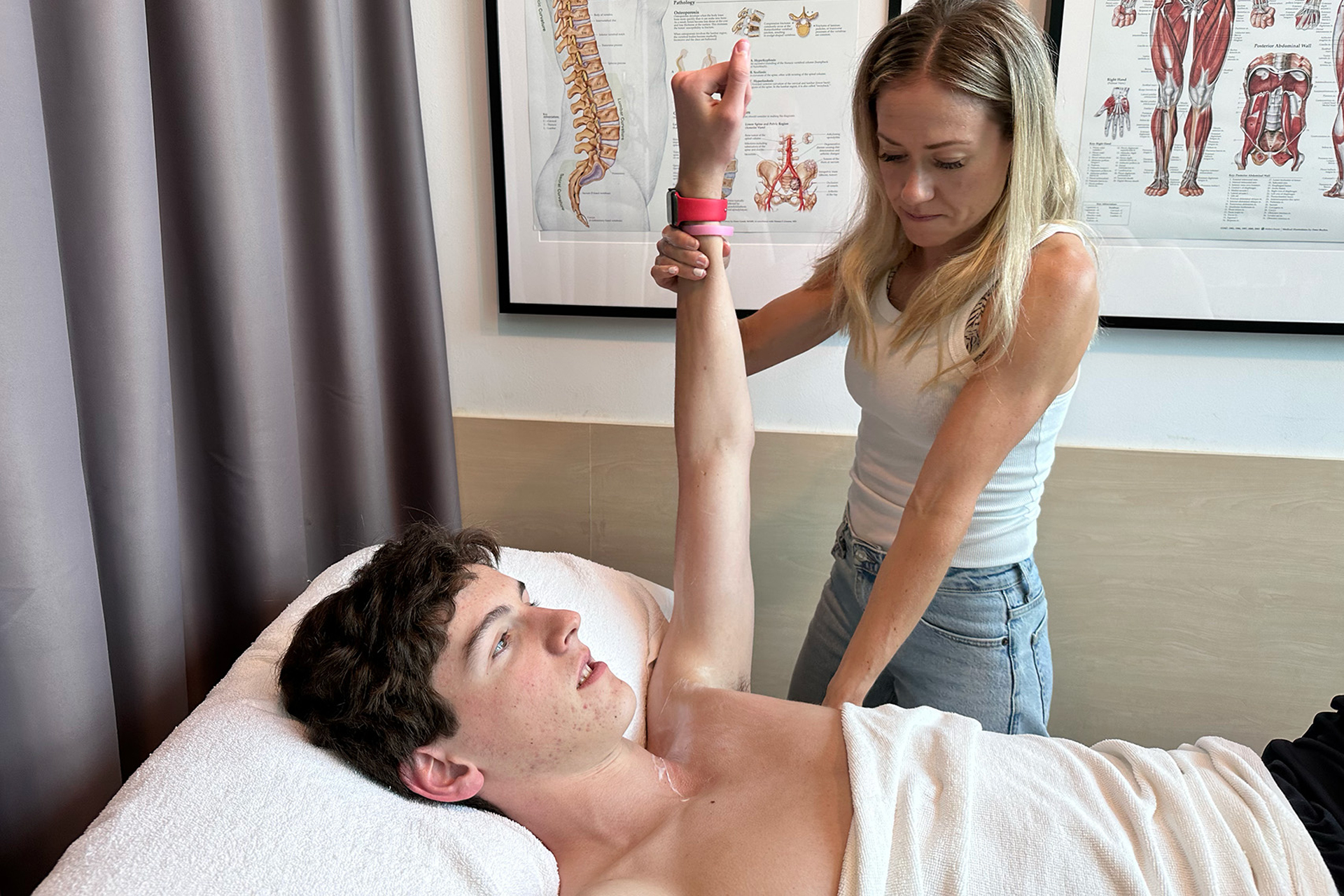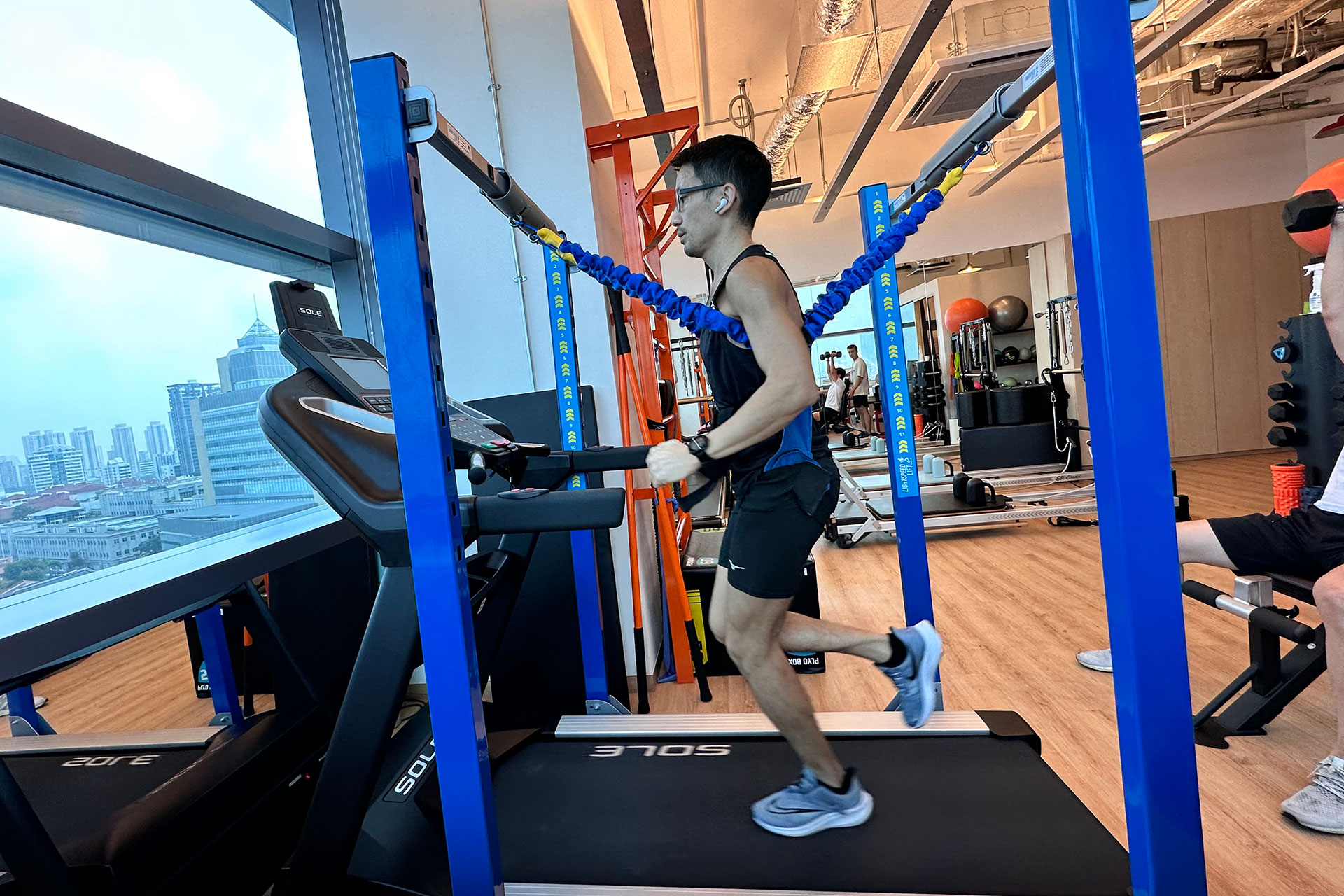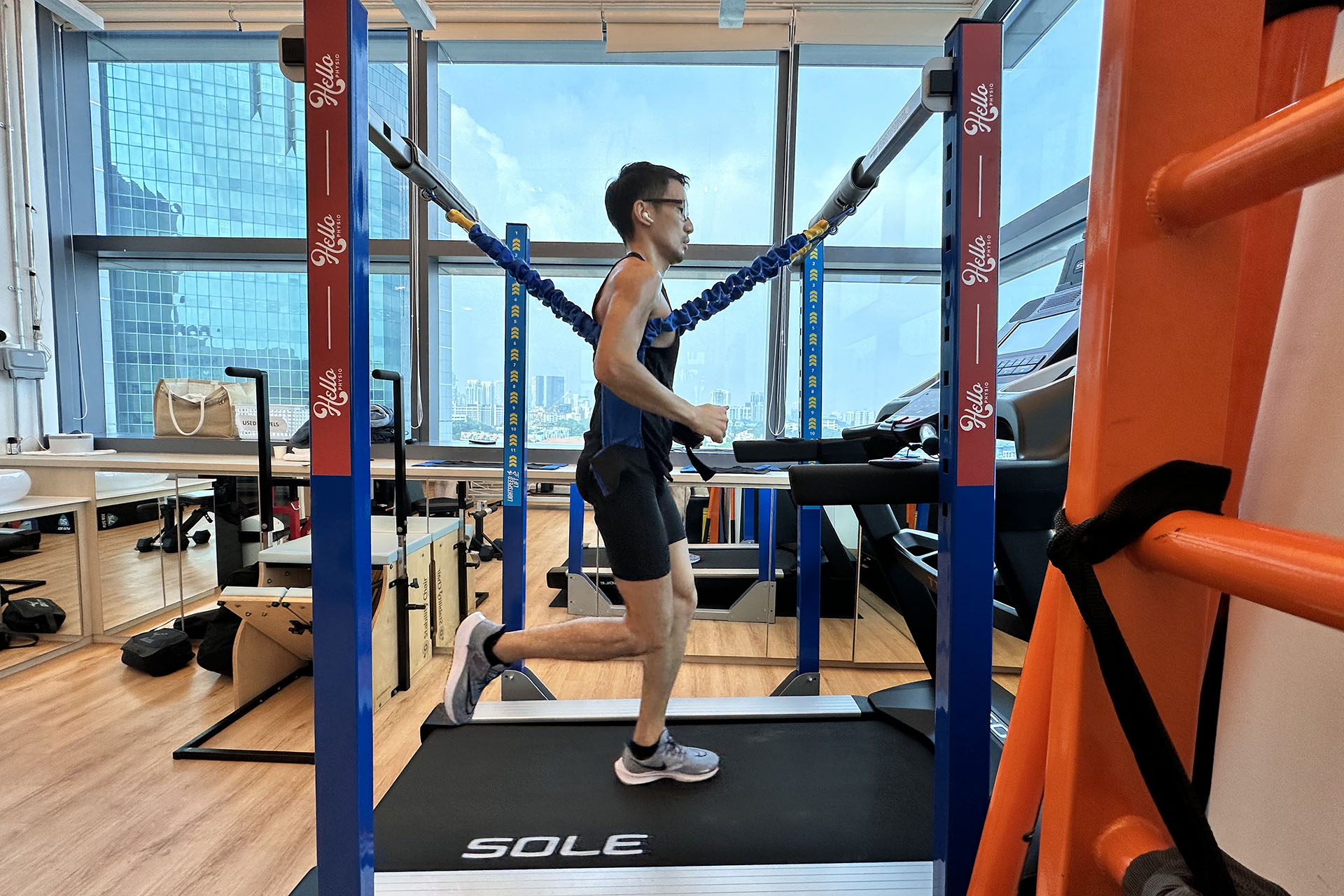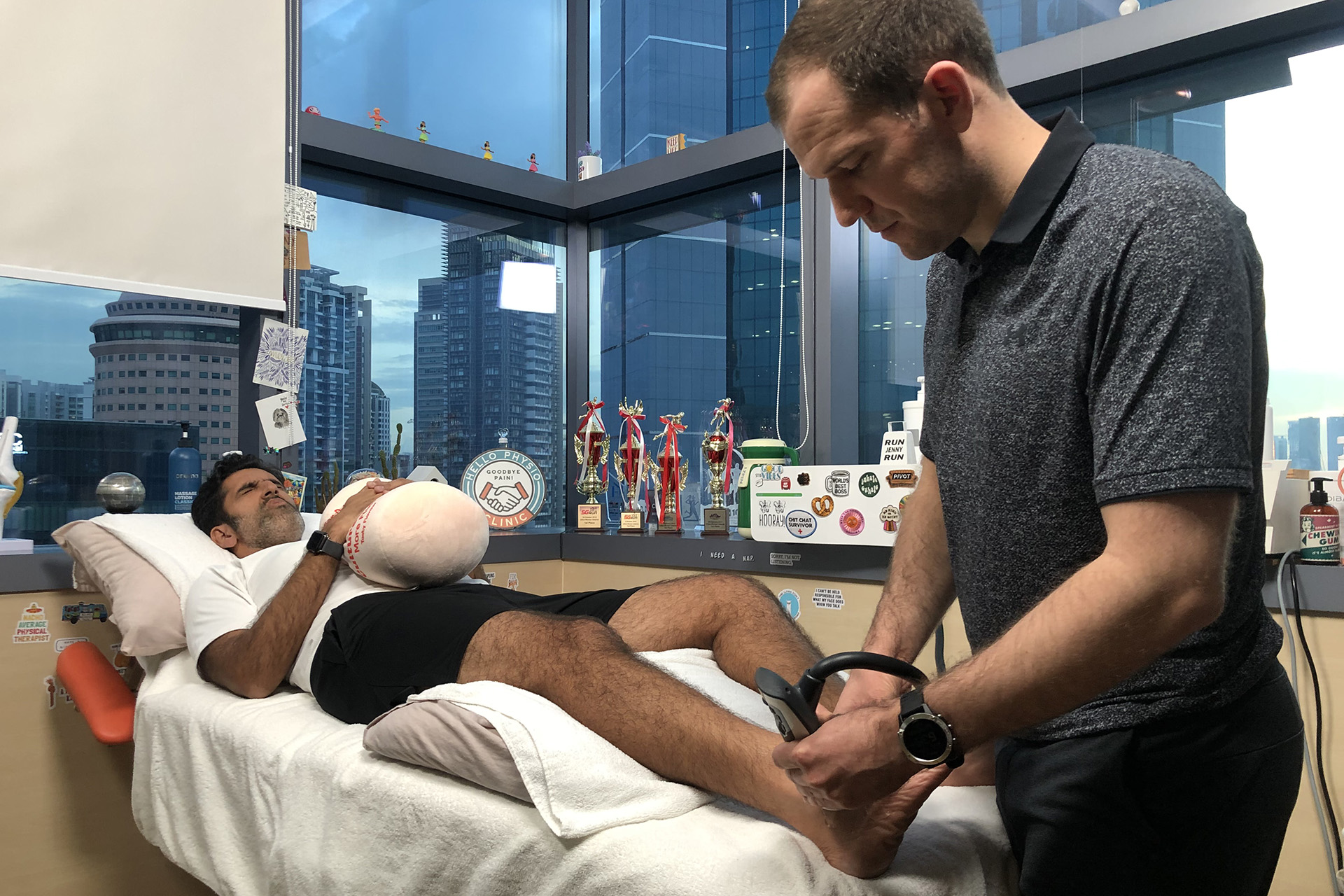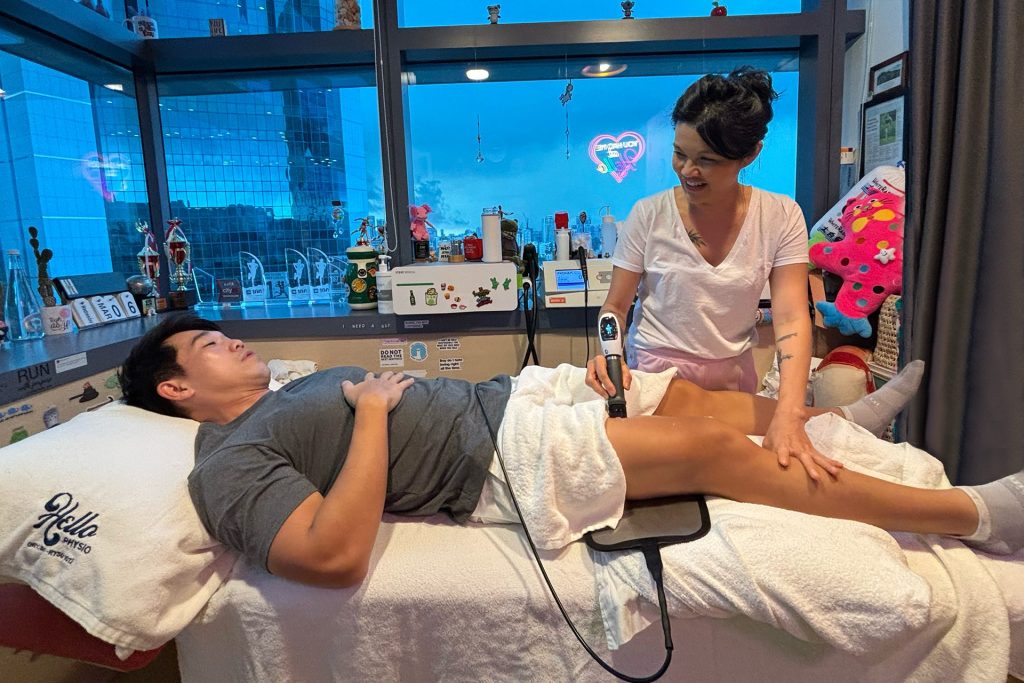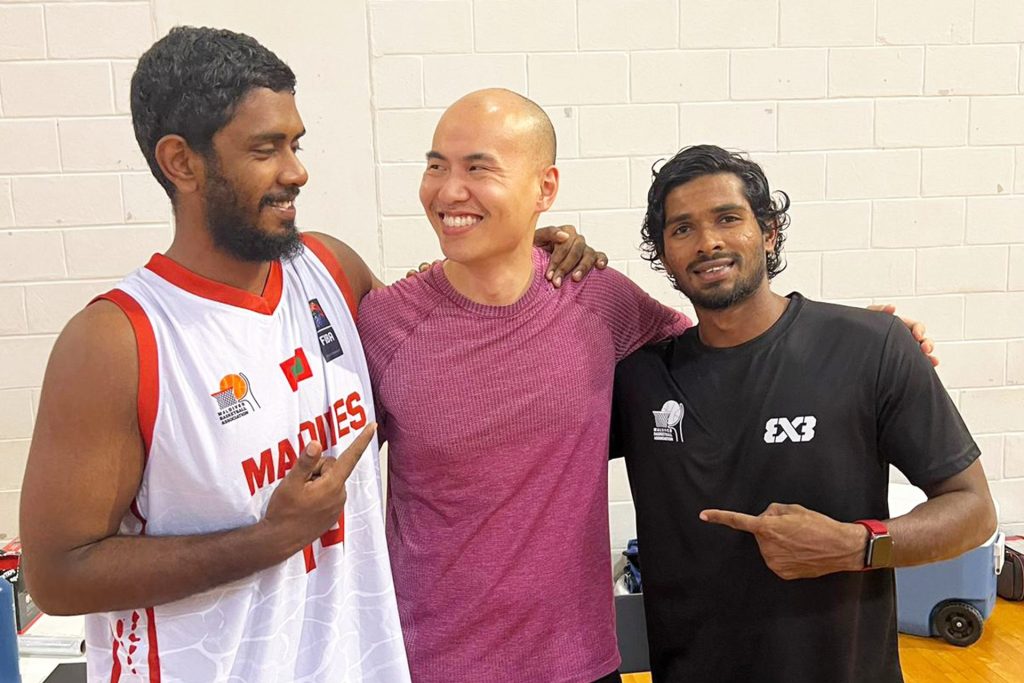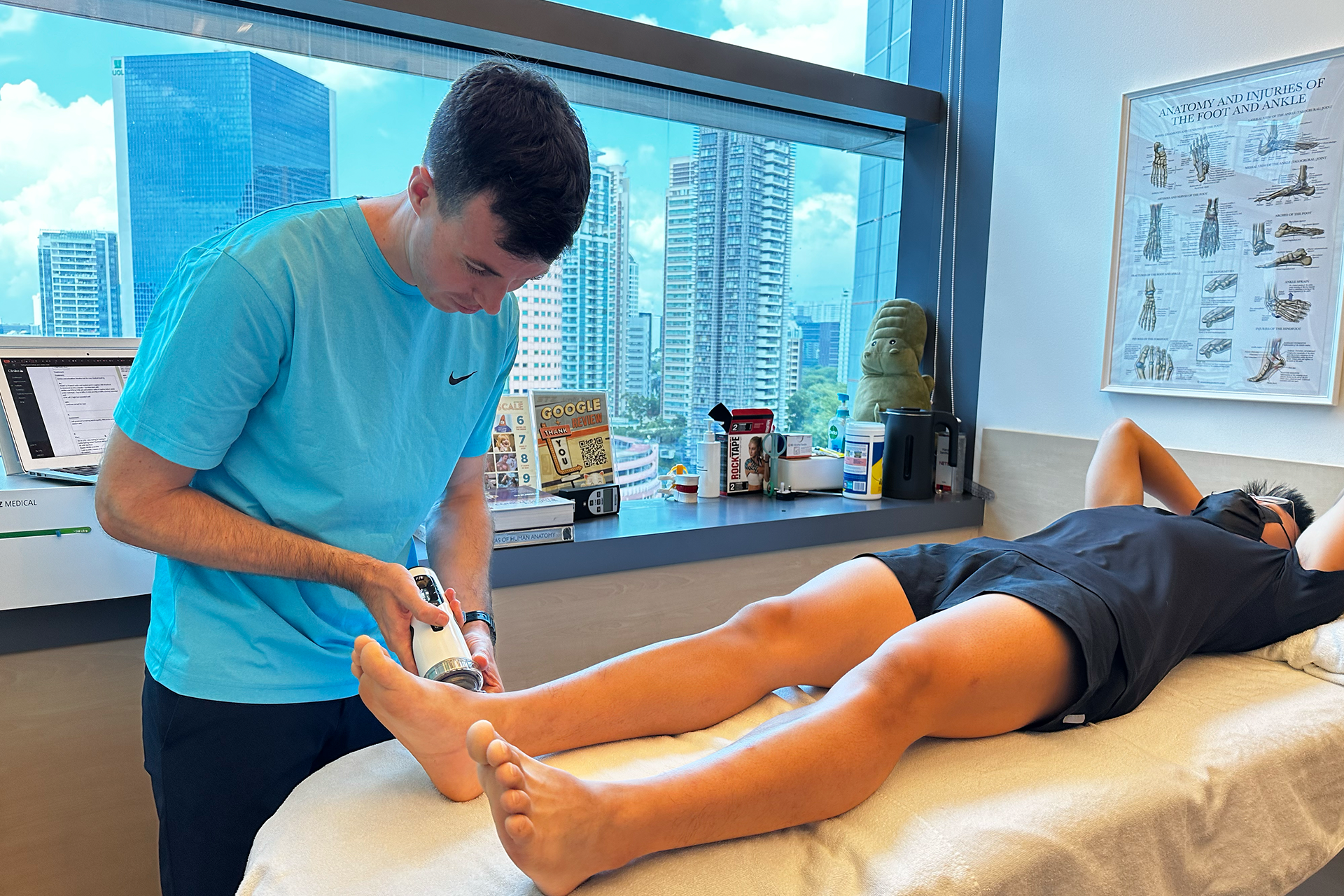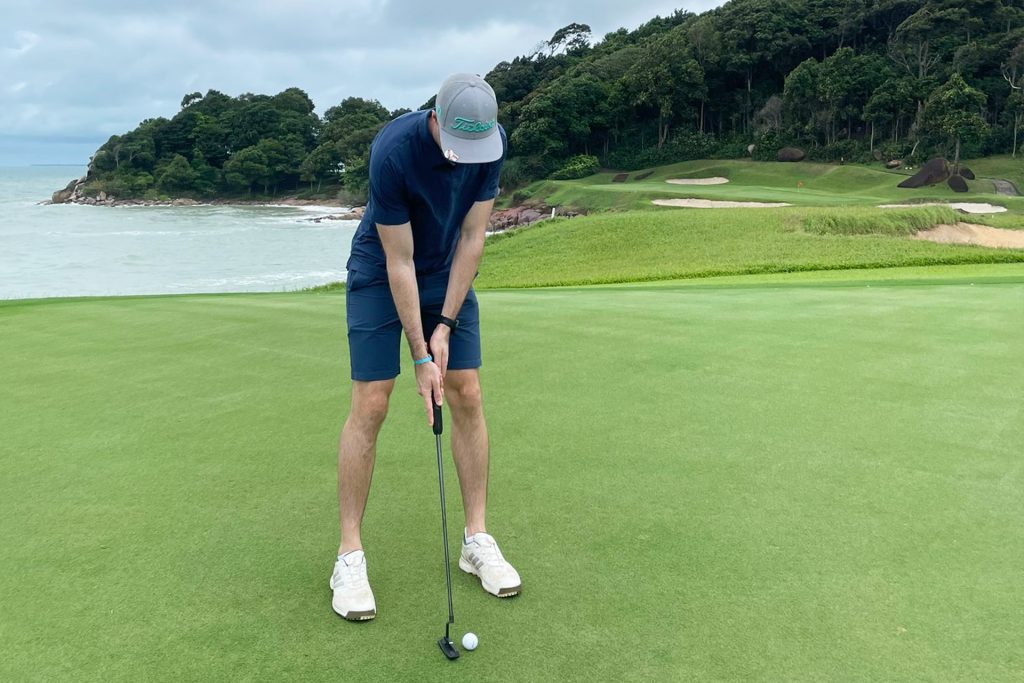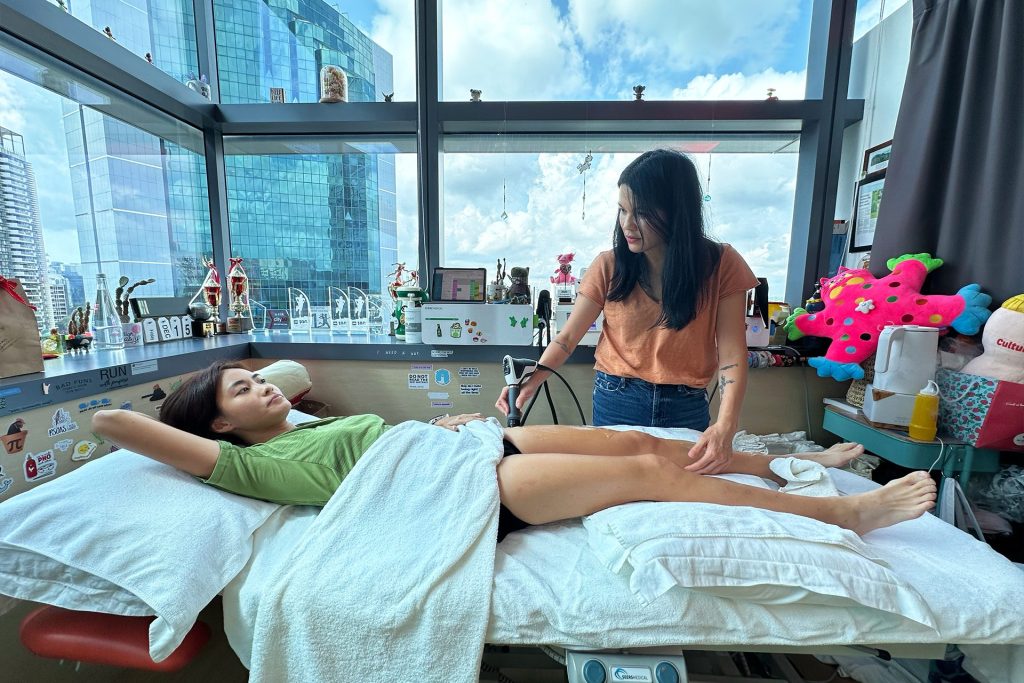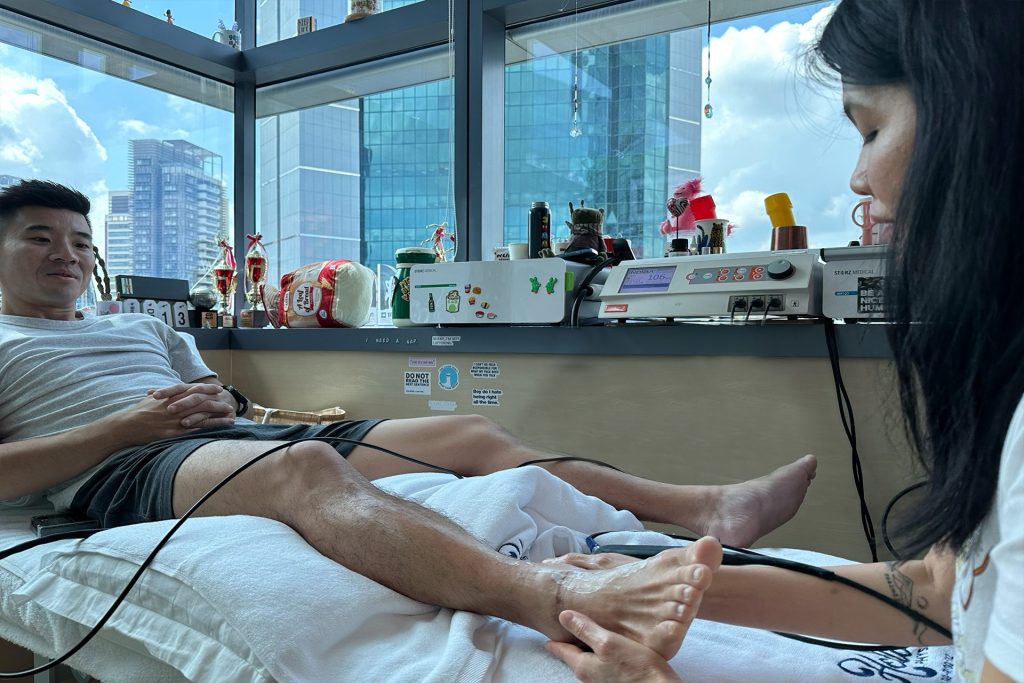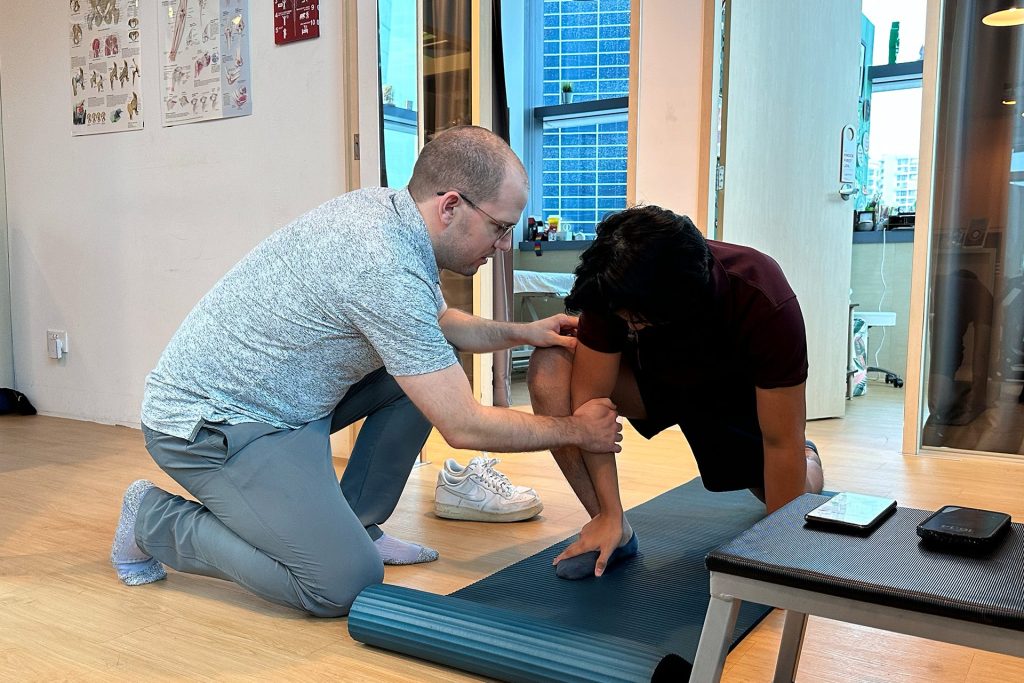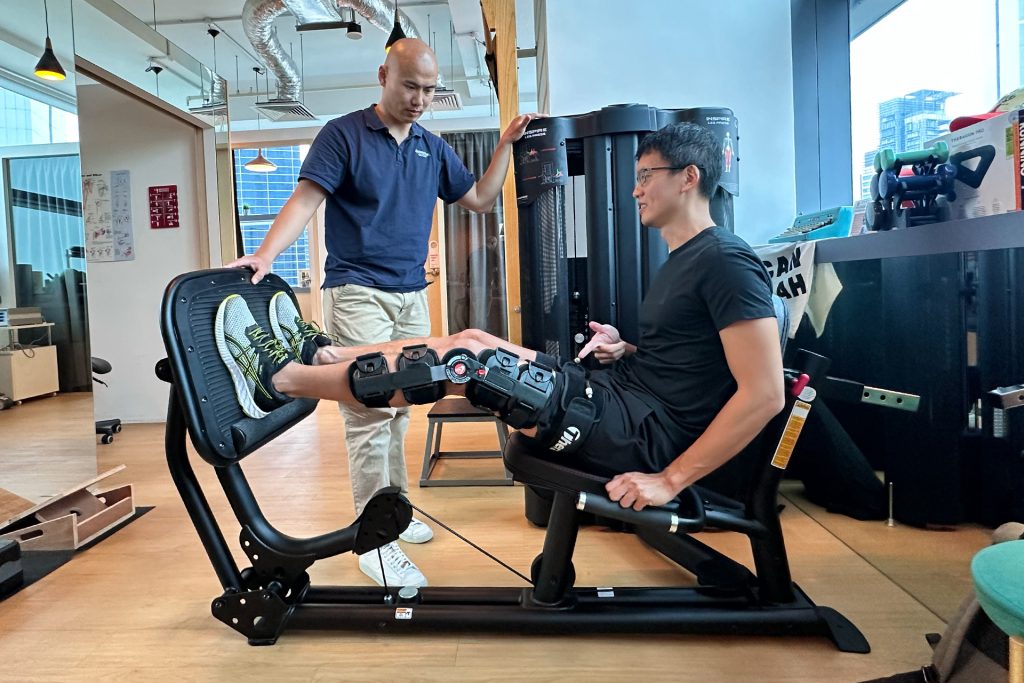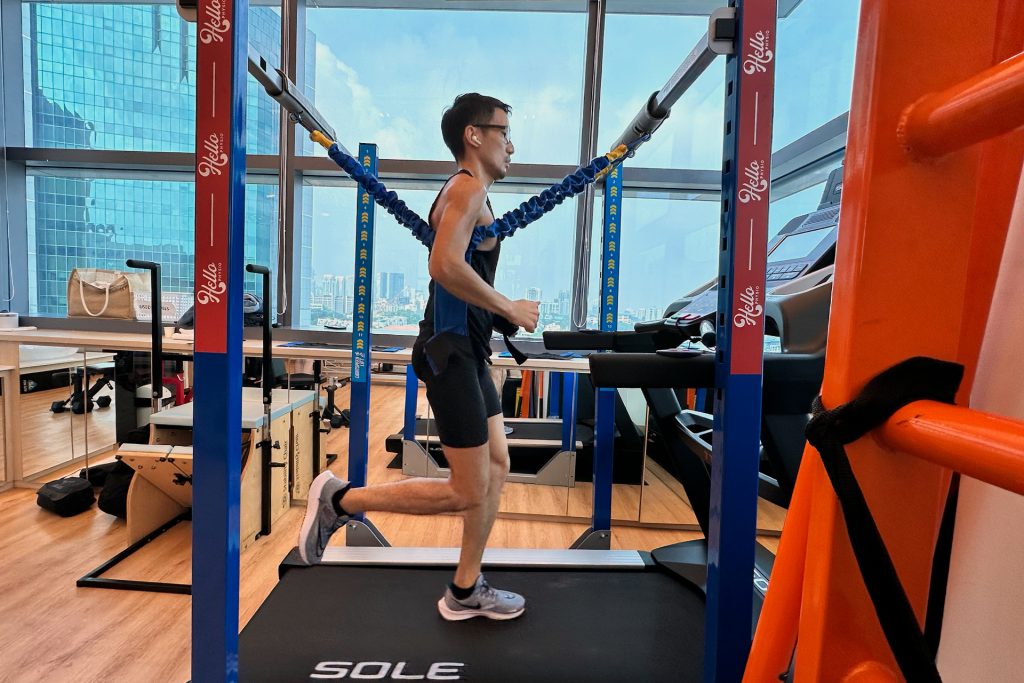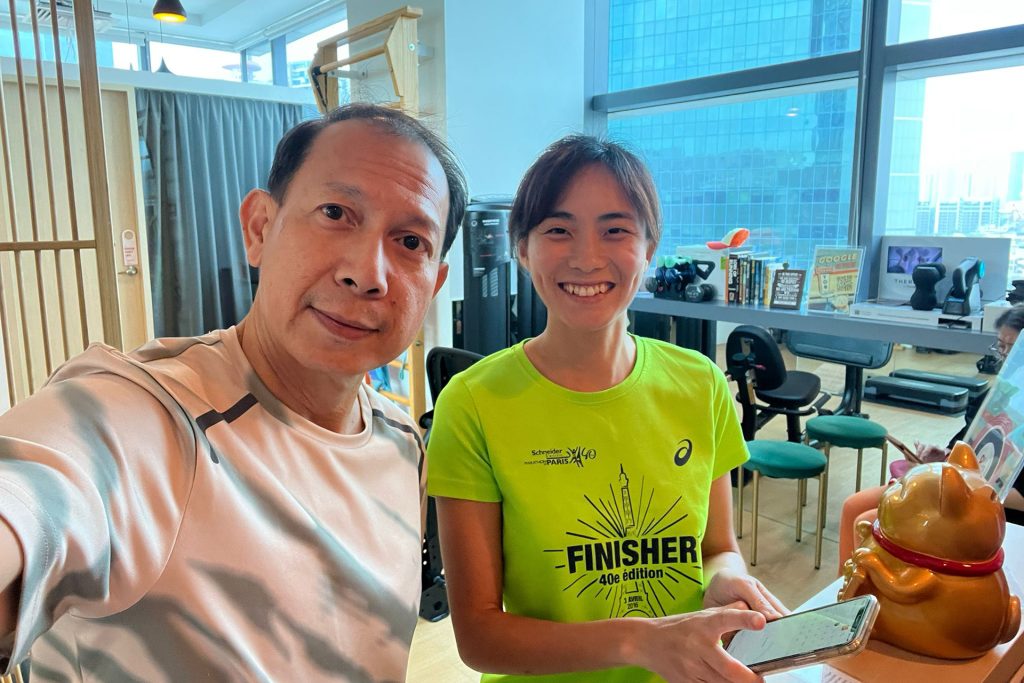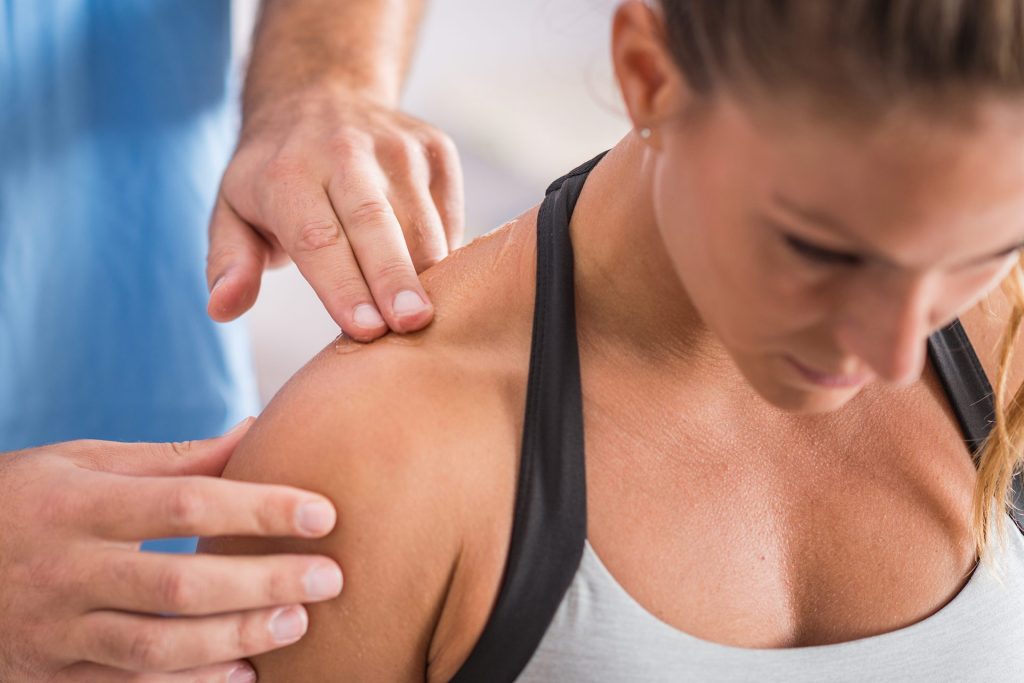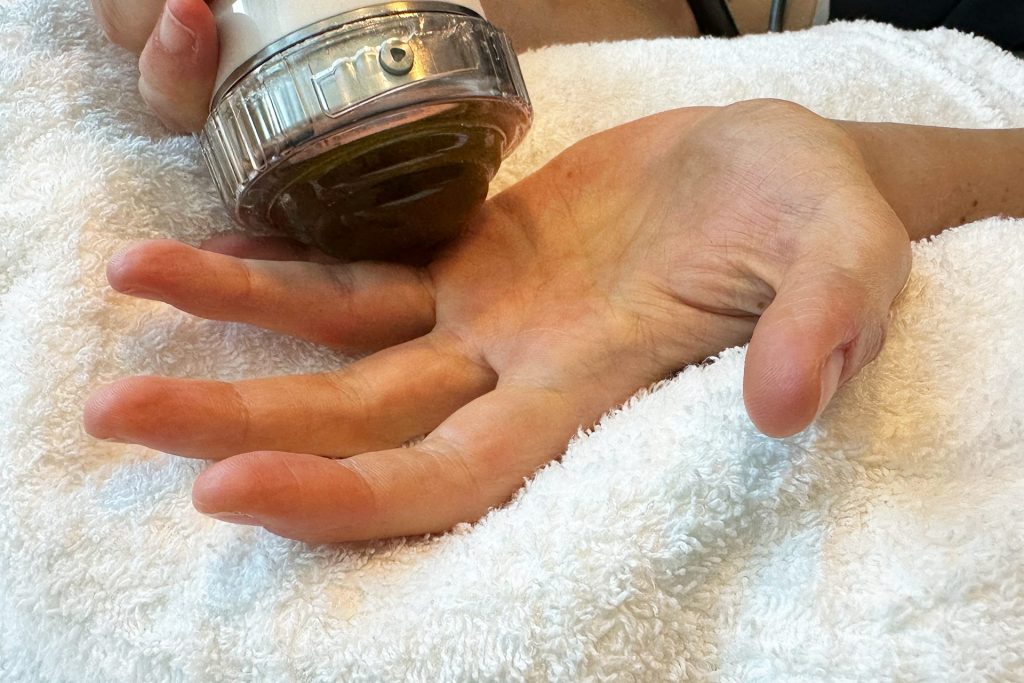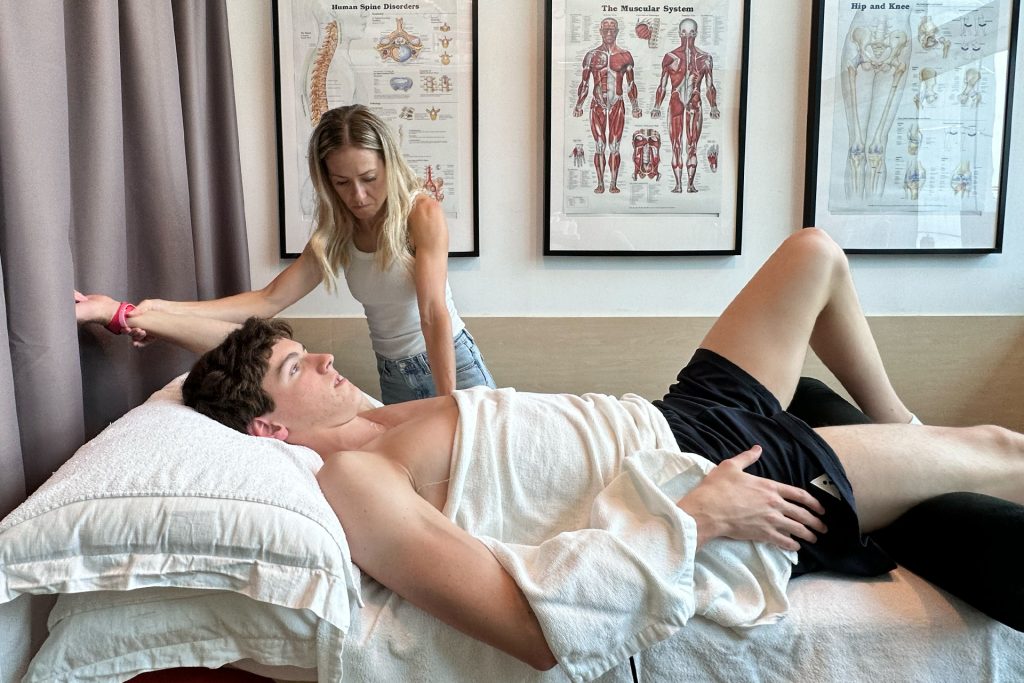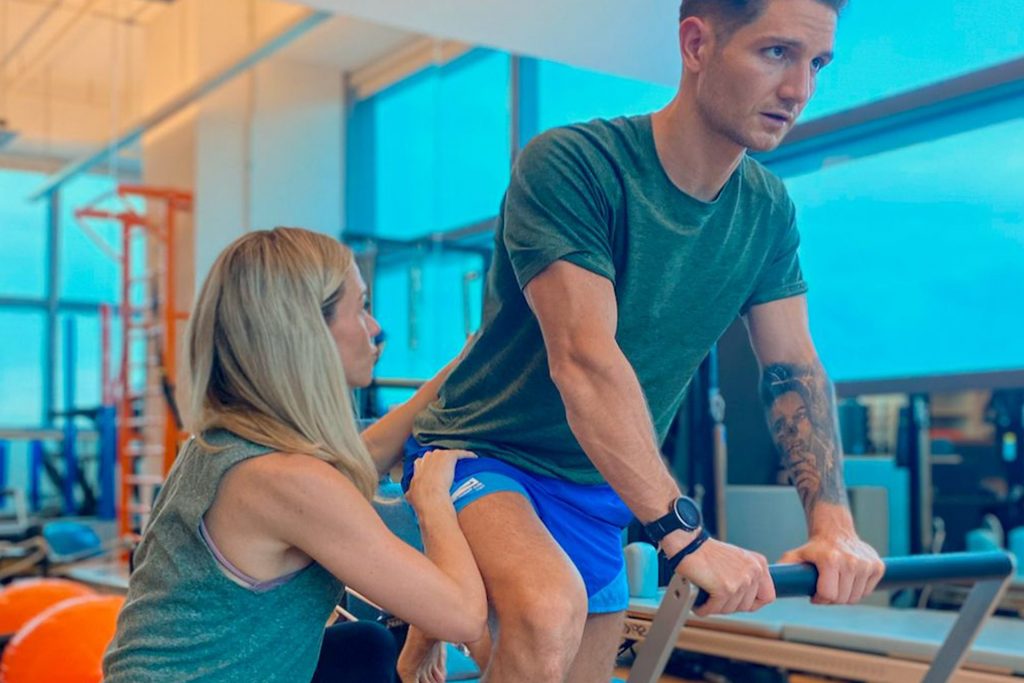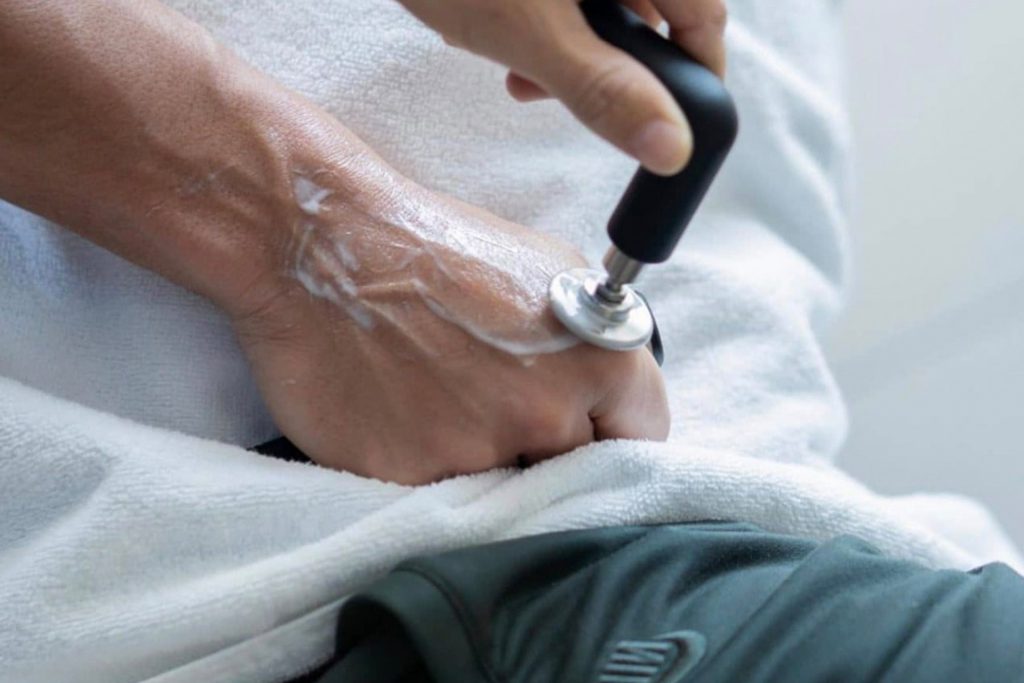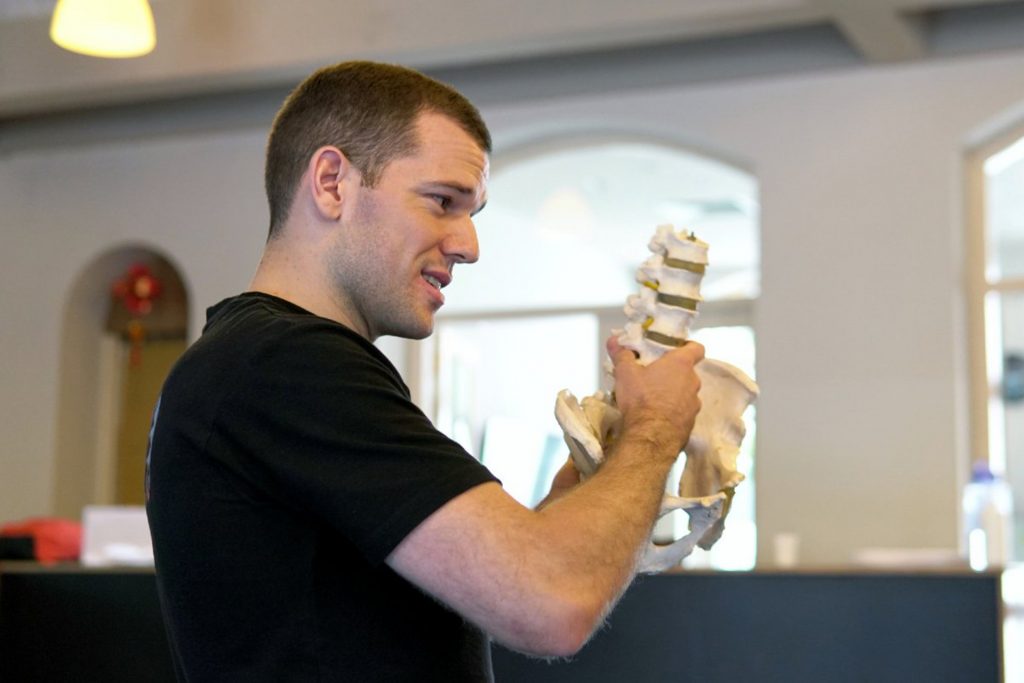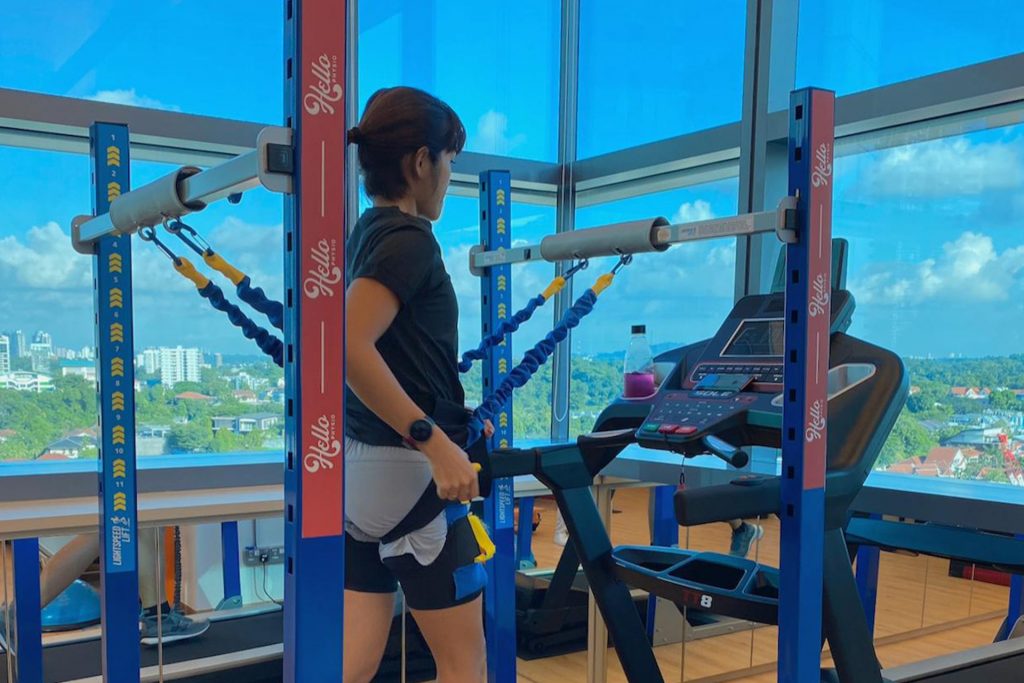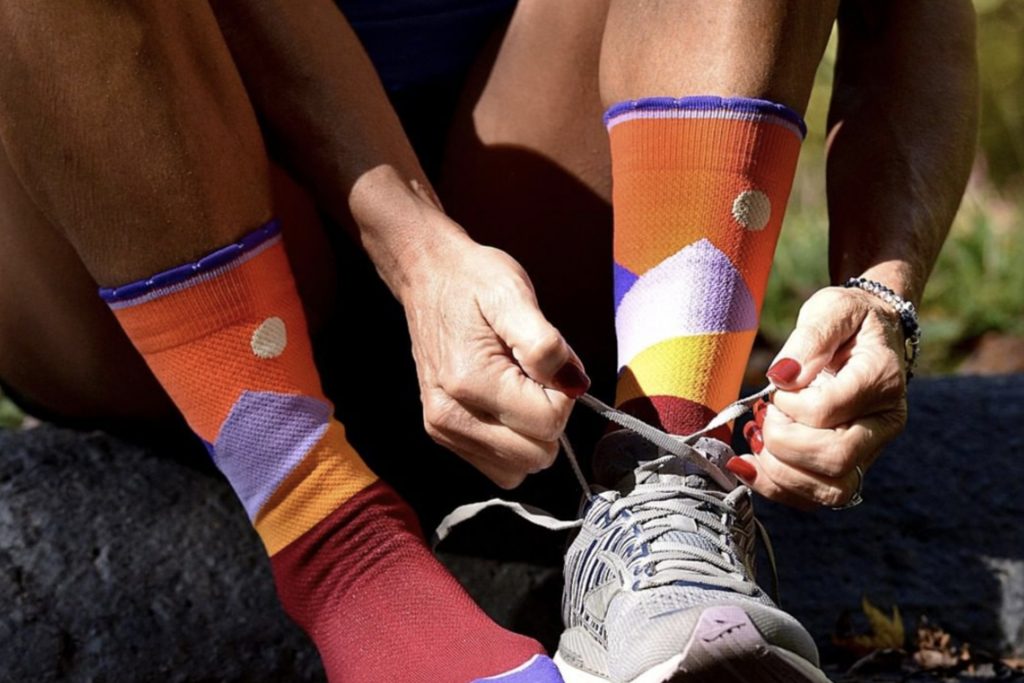|
Getting your Trinity Audio player ready...
|
Foot tendonitis is a common condition that can impact mobility, daily activities and your overall quality of life. It occurs when the tendons that connect muscles to bones in the foot and ankle become irritated, swollen or damaged, usually due to overuse, repetitive strain or injury. This can lead to pain, swelling and stiffness, and, if left untreated, the condition can progress to tendinosis, where degenerative changes in the tendon tissue make recovery more complex.
Athletes, runners and those involved in high-impact sports are at the greatest risk, as are individuals with biomechanical imbalances, such as flat feet or high arches, those in occupations that require prolonged standing, and older adults who experience a natural decline in tendon elasticity. Recognising early signs and understanding the role of each tendon in foot and ankle function is key to seeking effective foot tendonitis treatment and preventing long-term damage.
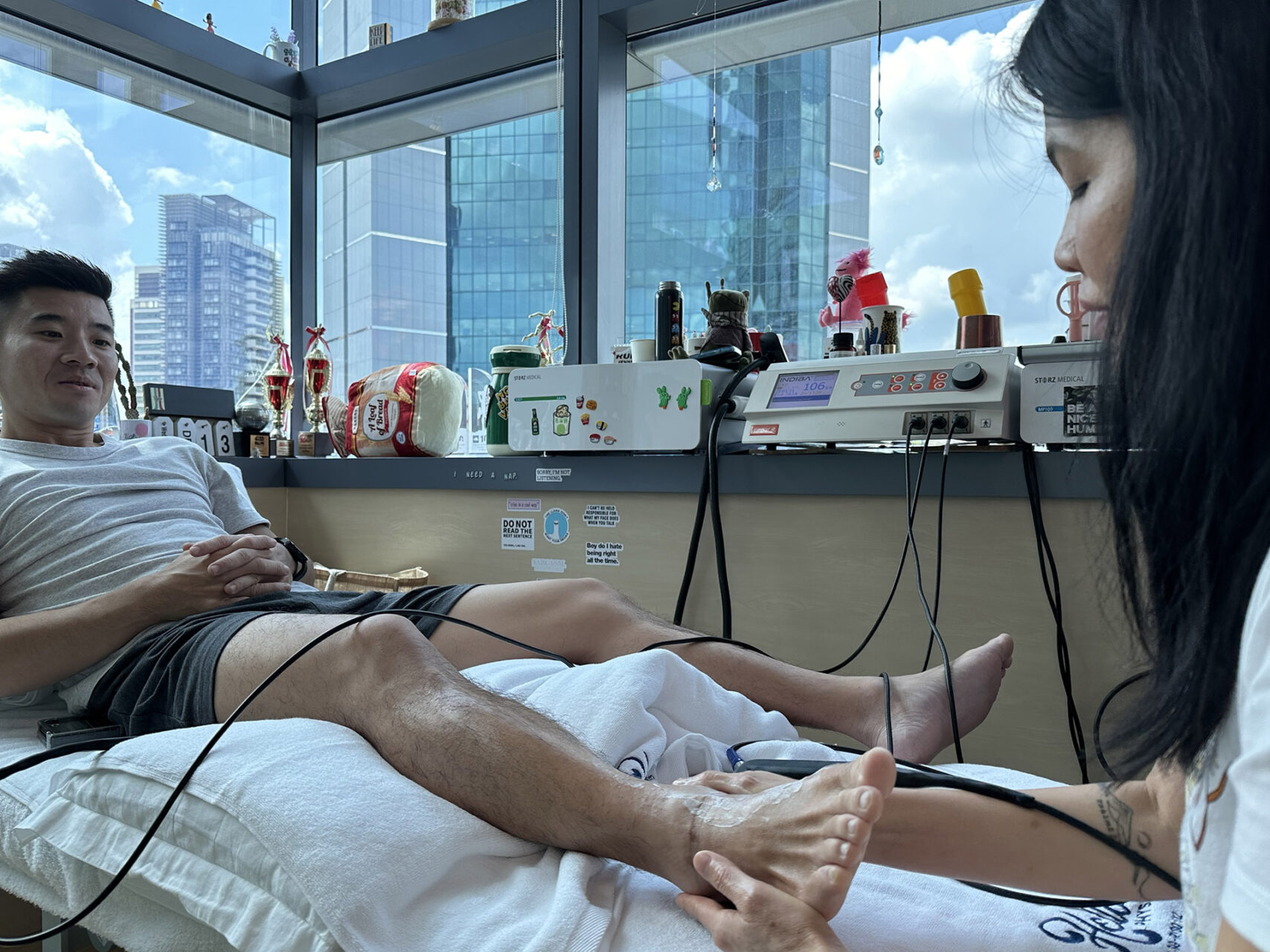
Types of Foot Tendonitis and Advanced Treatment Approaches
The foot and ankle are supported by a network of tendons that work together to provide movement and stability. Each of these tendons can become inflamed, leading to different symptoms and necessitating different treatment strategies. The Achilles tendon powers push-off during walking and running; the posterior tibial tendon supports the arch; the peroneal tendons stabilize the outer ankle; and the extensor tendons lift the toes and foot. Even the tibialis anterior tendon, vital for dorsiflexion, can become inflamed with repetitive use.
Achilles Tendonitis
Achilles tendonitis typically presents as pain and stiffness at the back of your heel, often worsening during the first steps of the morning, or after periods of rest. This tendon is the strongest in the body. It helps us run, jump, walk and do other activities that require us to rise up on our toes. The condition commonly affects runners and athletes who suddenly increase their training intensity or duration.
For Achilles tendonitis, Shockwave Therapy has emerged as a highly effective treatment modality. INDIBA® Activ therapy complements Shockwave Therapy by promoting cellular regeneration and reducing inflammation at the cellular level. When combined with targeted Dry Needling to address calf muscle tightness, this multimodal approach creates optimal healing conditions while addressing the underlying biomechanical contributors.
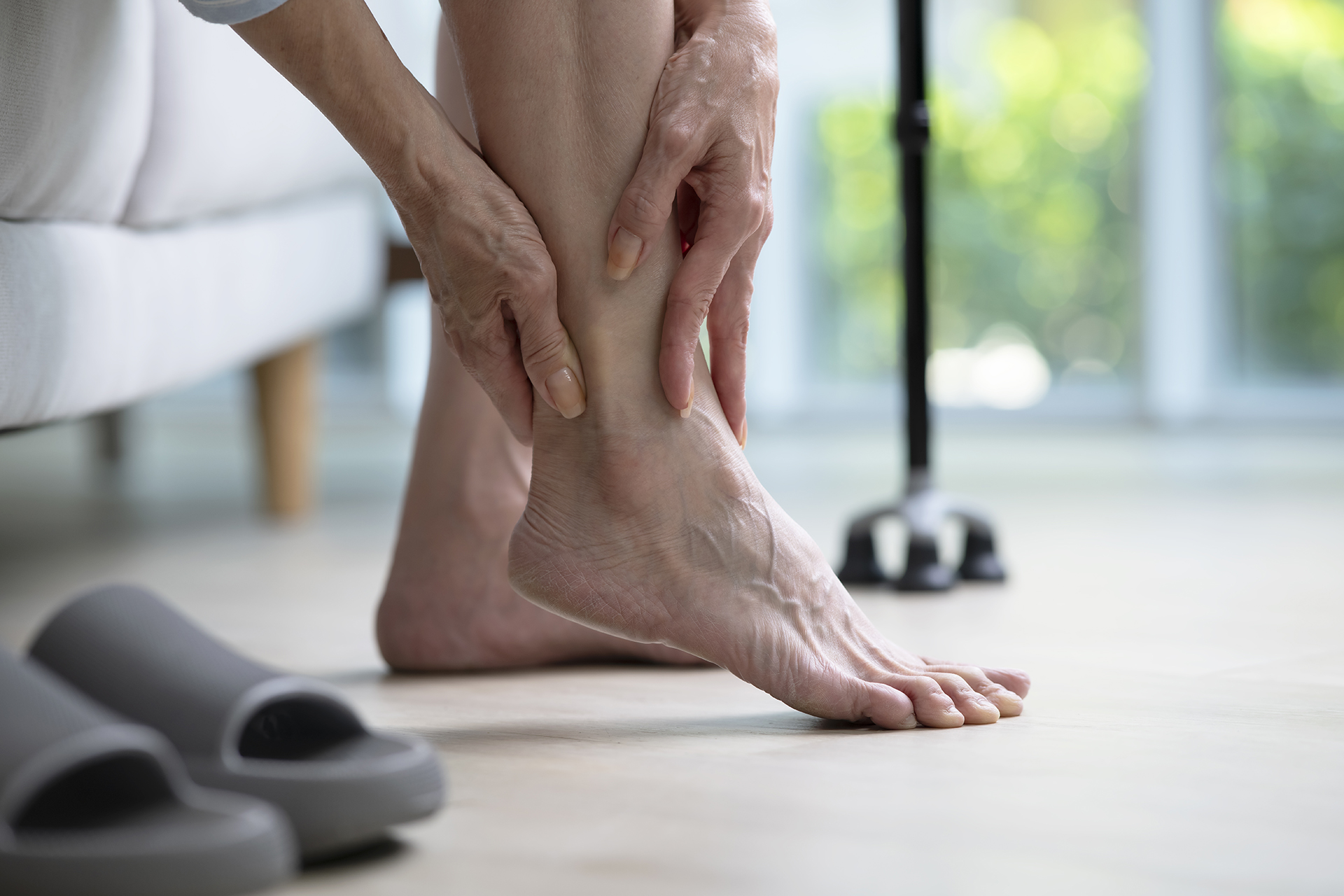
Posterior Tibial Tendonitis
Posterior tibial tendonitis commonly affects individuals with flat feet or those who participate in activities that involve increased weight-bearing. The condition causes pain on the inner side of the ankle and arch, often accompanied by gradual flattening of the arch. It is concerning because it can progress to posterior tibial tendon dysfunction, which can lead to permanent arch collapse.
Treatment for posterior tibial tendonitis combines manual therapy techniques with progressive exercises to strengthen the posterior tibial muscle to restore foot alignment. EMTT (Electromagnetic Transduction Therapy) is particularly beneficial for this condition as it penetrates deep tissue layers to stimulate cellular repair mechanisms. Shockwave Therapy also helps to remodel damaged tendon fibers, and custom orthotics provide support during the healing process.
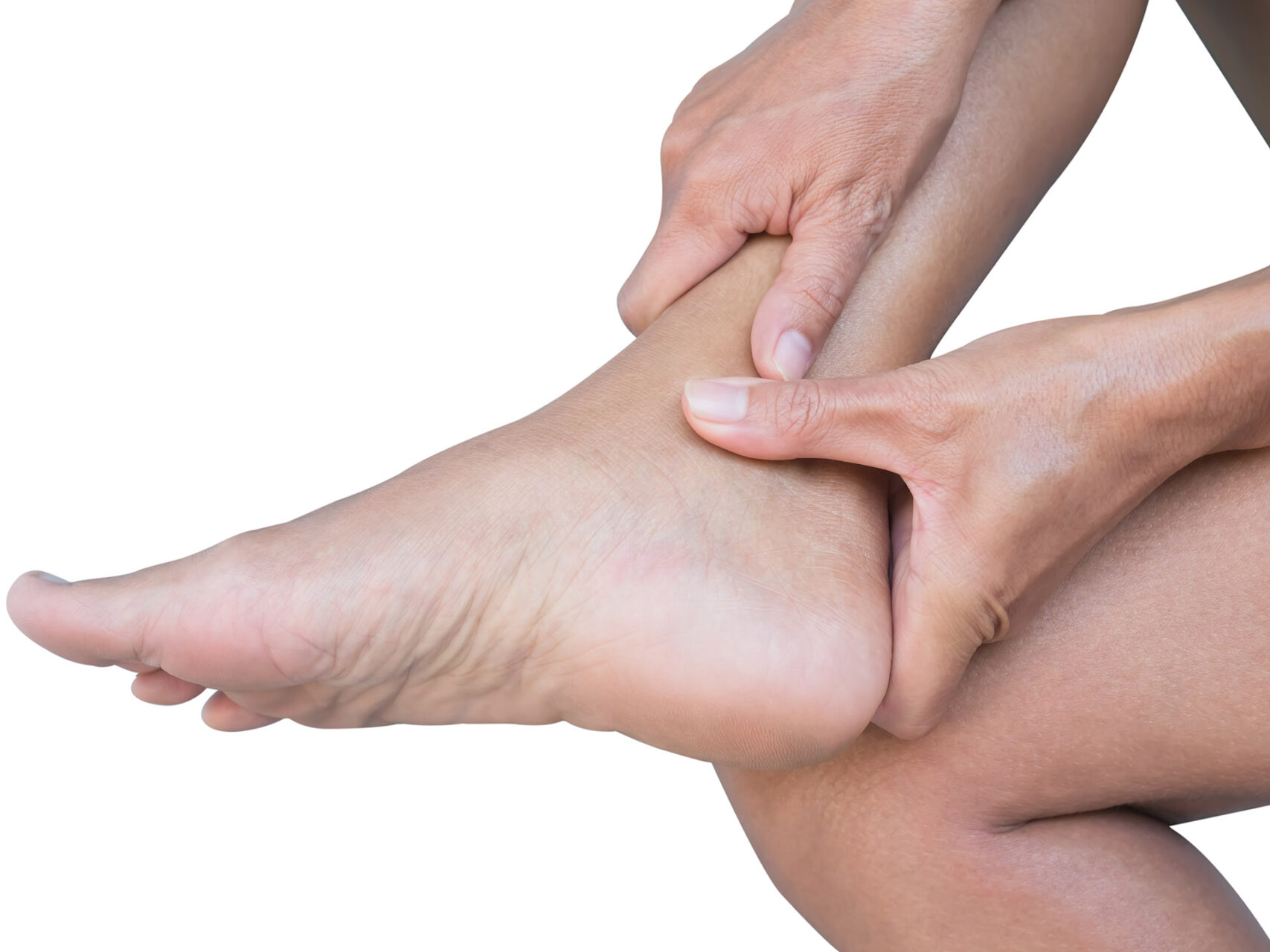
Peroneal Tendonitis
Peroneal tendonitis is inflammation of one or both of the tendons that connect your lower leg to your foot. It’s usually due to overuse, but can also result from a sudden injury, such as an ankle sprain. Pain is typically located on the outer side of the ankle and may be accompanied by swelling and sensations of instability.
The treatment protocol focuses on restoring ankle stability through progressive exercises while addressing any underlying ankle instability. Dry Needling targets the peroneal muscles to reduce tension and improve tendon gliding. INDIBA therapy accelerates foot tendonitis healing time by increasing blood flow and cellular metabolism in the affected tissues. When combined with proprioceptive training and gradual return to activity, patients usually experience significant improvement in pain and function.
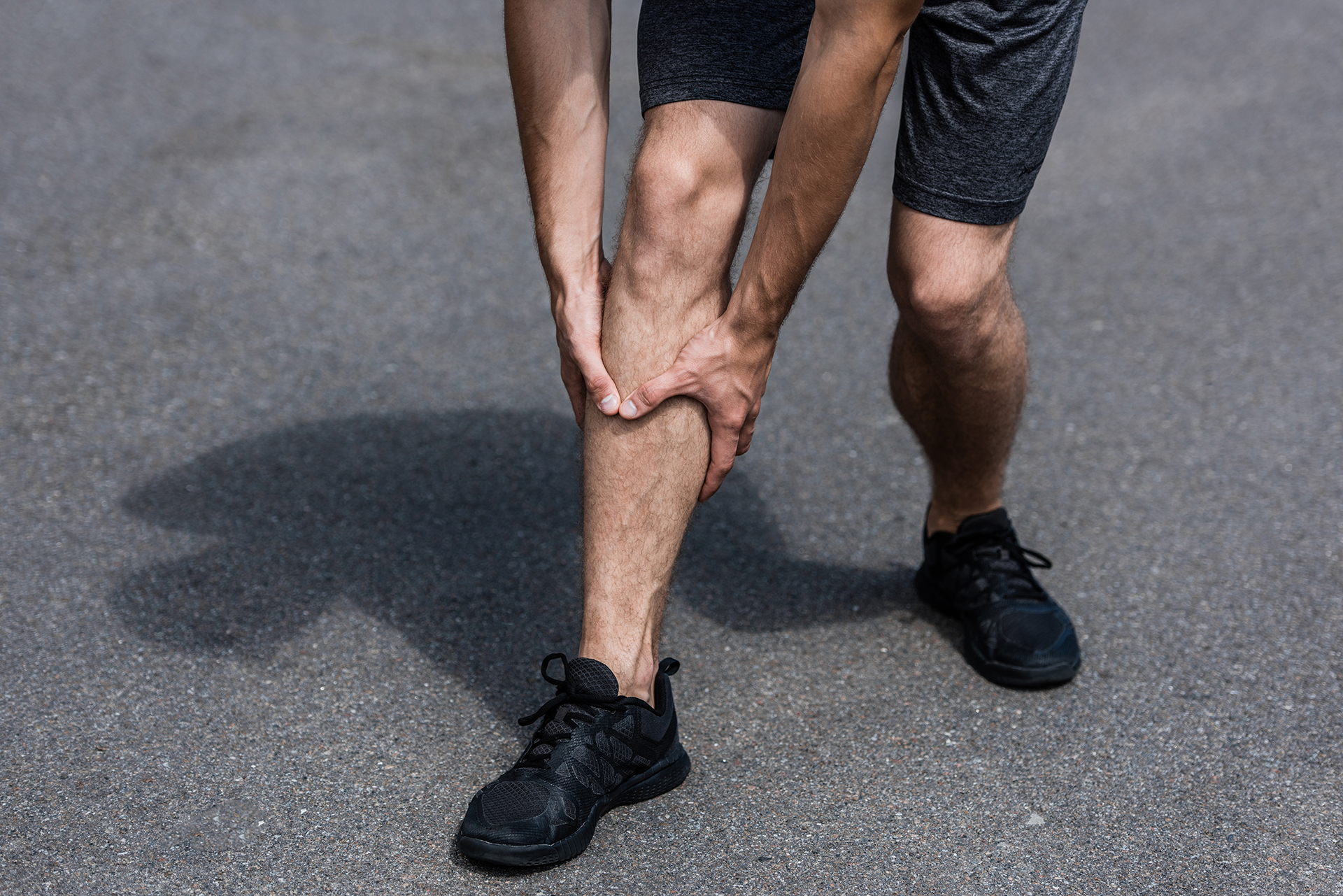
Extensor Tendonitis
Extensor tendonitis causes pain across the top of the foot and is often caused by tight shoes, excessive running on hills or prolonged standing. Over time, normal wear and tear builds up on your extensor tendons, causing irritation. That irritation makes your tendons swell. It sometimes registers as tendonitis on top of the foot due to the way symptoms manifest.
Treatment addresses contributing factors such as poor footwear while implementing targeted stretching and strengthening programs. Shockwave Therapy is effective for chronic cases, and INDIBA therapy helps with acute tendon inflammation in the foot. Manual therapy techniques improve joint mobility in the midfoot, and Dry Needling addresses compensatory muscle tension patterns that develop due to altered movement mechanics.
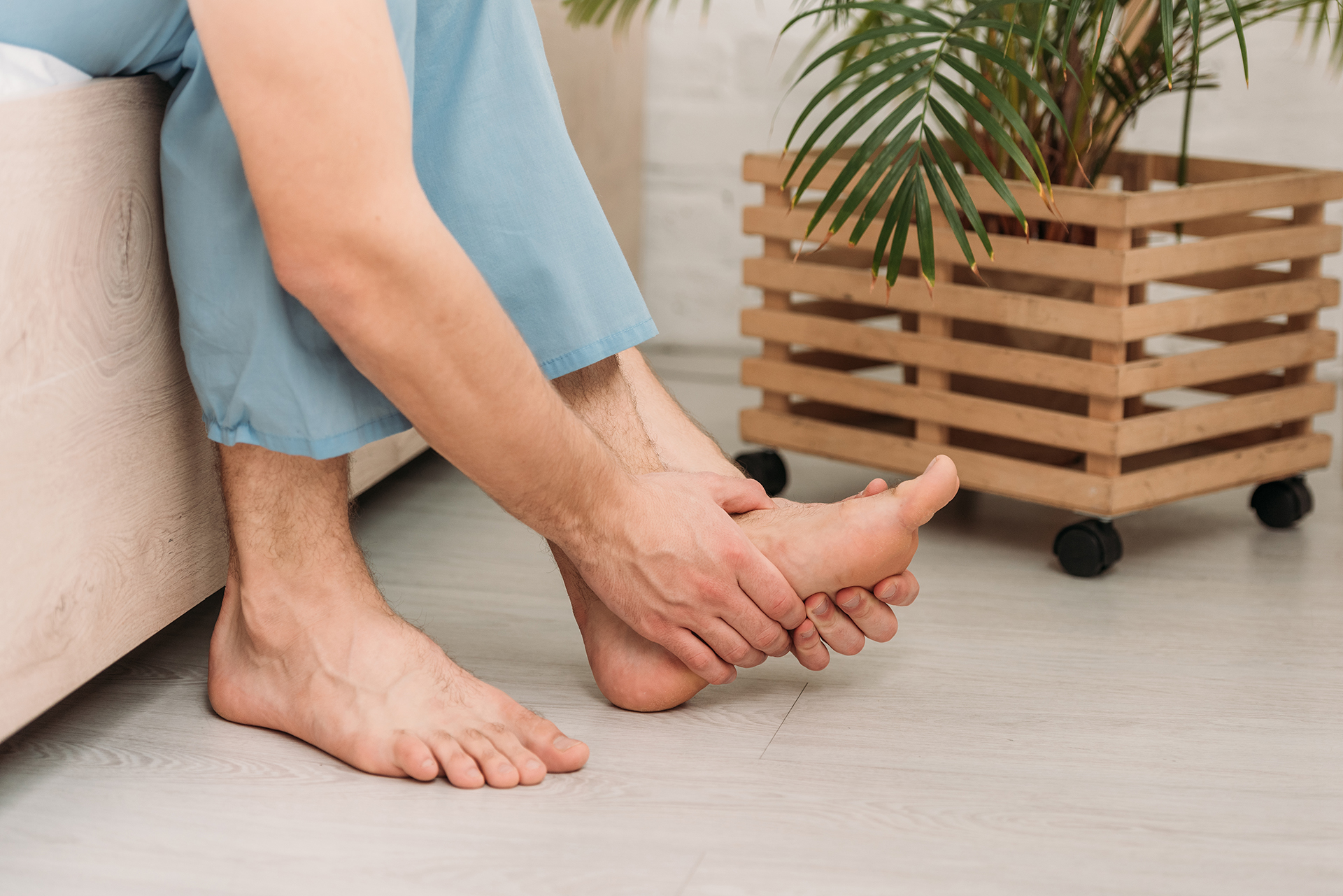
Causes and Risk Factors
Tendonitis of the foot often develops from overuse, repetitive strain or sudden increases in activity. Contributing factors include poor footwear, inadequate arch support, and biomechanical imbalances such as flat feet or high arches. Tight calf muscles can add stress to tendons, while systemic conditions such as arthritis or diabetes may increase vulnerability. Prolonged standing, high-impact sports and age-related changes in tendons also increase the risk.
Biomechanical imbalances, such as flat feet, high arches, or leg length discrepancies, alter the normal force distribution through the foot and ankle complex. Having flat feet can increase the risk of tendon irritation and extensor tendonitis, as the lack of arch support may lead to excessive strain on the tendons. These structural variations create compensatory movement patterns that overload specific tendons while underutilizing others.
Tight calf muscles reduce the range of motion in ankle dorsiflexion, forcing the tendons to work harder during everyday activities. This tightness often develops gradually and goes unnoticed until symptoms appear. Systemic factors, such as rheumatoid arthritis, diabetes, and other inflammatory conditions, increase tendon vulnerability and complicate the healing process for an inflamed tendon in the foot.
Poor footwear choice, including shoes lacking arch support, cushioning or those worn beyond their effective lifespan, creates biomechanical stress on foot tendons. Many people underestimate the importance of replacing athletic shoes regularly, usually every 300-500 miles for runners. Additionally, the “weekend warrior” phenomenon, where individuals dramatically increase activity levels without proper conditioning, contributes to tendon overload.
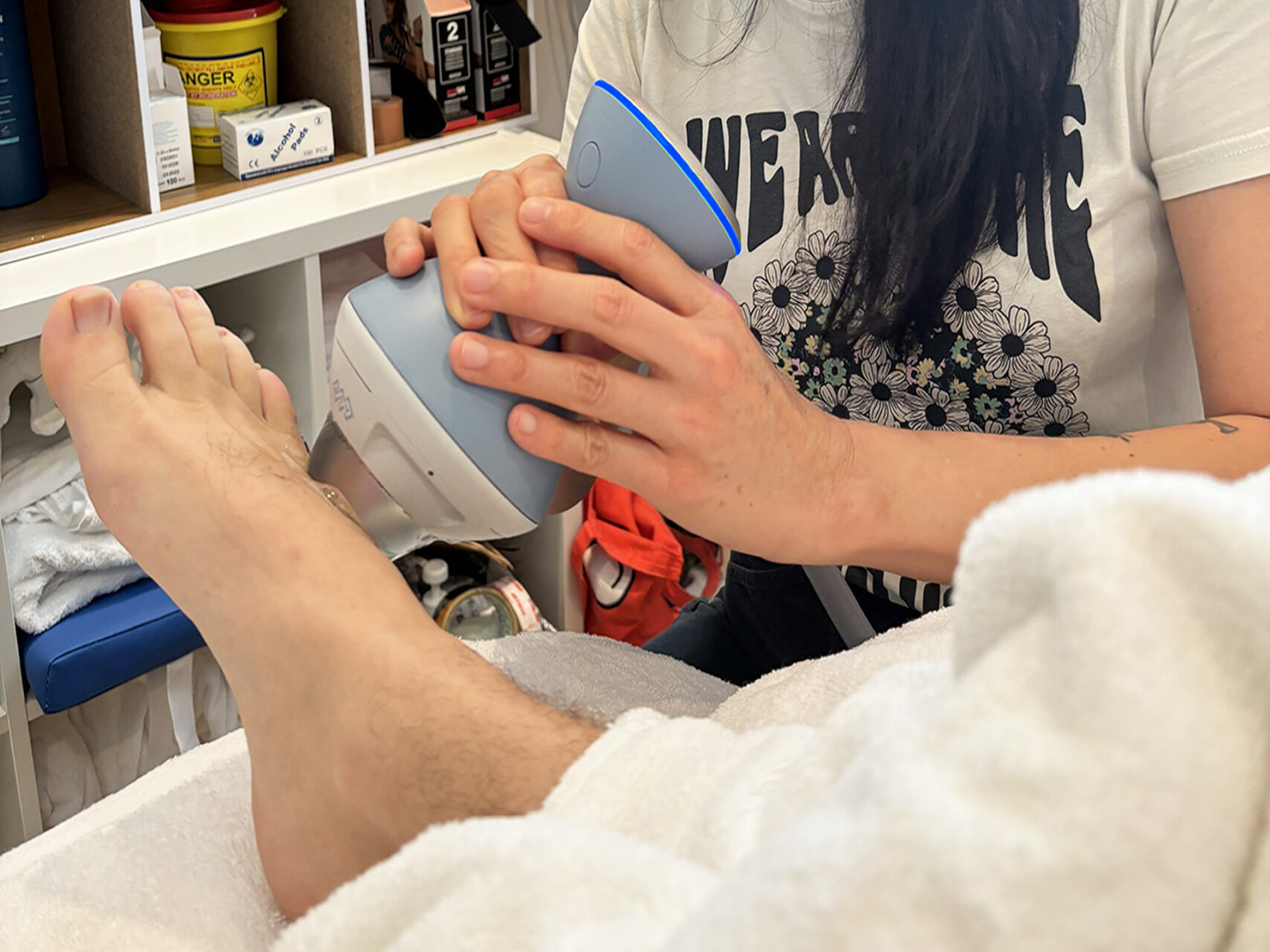
Symptoms and Diagnosis
Foot tendonitis symptoms start with localized pain, swelling and stiffness in the affected tendon area. Common symptoms of tendonitis include pain, swelling, tenderness and stiffness, which often worsen with activity. Initially, pain may only occur during activity or immediately after. As the condition progresses, it can persist even at rest. Morning stiffness, especially during the first few steps after waking, is a classic symptom of foot tendonitis, particularly if the pain gradually subsides with gentle movement.
Foot tendonitis pain intensifies with specific movements such as walking uphill, climbing stairs or pushing off during running. Foot pain is a common complaint and can significantly impact mobility and daily activities. Wearing unsupportive footwear usually exacerbates symptoms, while proper support provides noticeable relief.
To diagnose tendonitis, healthcare providers begin with a comprehensive clinical examination, which includes a patient history and a movement assessment. A physical exam is crucial in diagnosing tendonitis and involves palpating the painful area, assessing swelling and testing foot mobility to determine the severity and location of the inflammation. Palpation reveals areas of tenderness, swelling or thickening along the tendon pathway. Providers evaluate posture and gait patterns, and perform specific tests to isolate the affected tendon and determine the best course of action.
Advanced imaging, including ultrasounds or MRIs, confirms the diagnosis by visualizing inflammation, degeneration or partial tears within the tendon structure. These imaging modalities also rule out other conditions and guide treatment planning by showing the extent and nature of tissue damage.
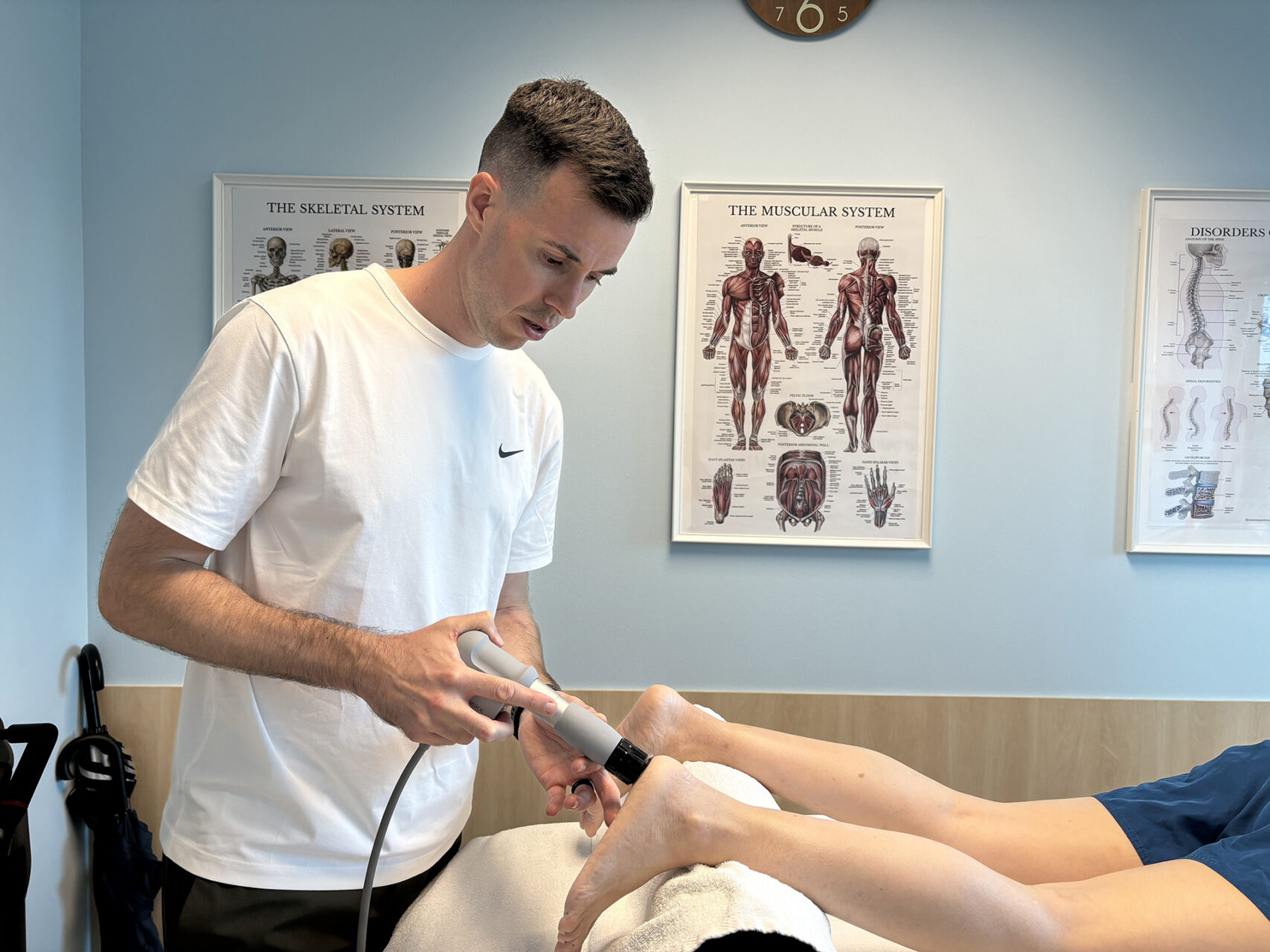
How HelloPhysio Treats Foot Tendonitis
At HelloPhysio, we take an evidence-based, holistic approach to treating foot tendonitis. There is no single cure for tendonitis in the foot; however, by combining precise diagnosis with advanced therapies, we can target the affected tendon and address the underlying biomechanical issues that contribute to its development. This is the best way on how to treat tendonitis in the foot: understanding the root cause and tackling the issue head-on.
Manual therapy restores mobility, reduces stiffness and ensures healthy tendon movement, while progressive strengthening builds resilience across the entire kinetic chain from your calf and foot muscles to your hip stabilizers. Shockwave Therapy accelerates healing and eases pain in stubborn cases, and INDIBA boosts tissue repair and reduces inflammation at a cellular level.
Dry Needling releases tension and improves circulation in overloaded muscles. Every plan includes a detailed gait and footwear assessment to correct movement patterns and prevent recurrence of issues.
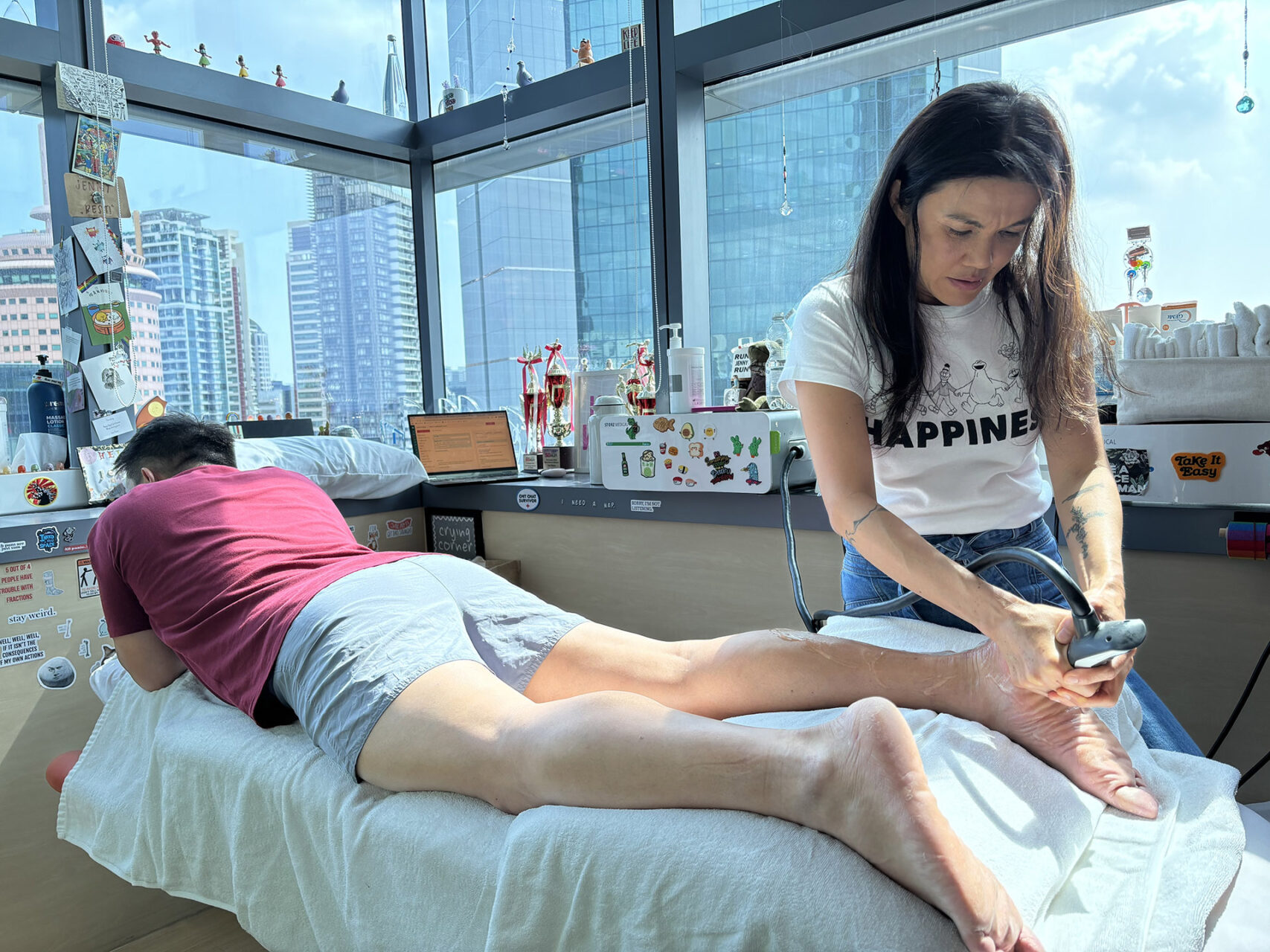
Home and Self-Management Strategies
Tendonitis management requires patients to be proactive during the recovery process. Relative rest means modifying activities that aggravate symptoms while maintaining overall fitness through alternative exercises. Complete rest is rarely recommended, as it can lead to tendon weakening and prolong the recovery time for foot tendonitis.
Ice therapy provides effective pain and swelling control during acute phases, applied for 15-20 minutes several times daily. However, avoid ice during chronic phases when inflammation has subsided, as it may impede the healing process.
Regular stretching programs for calf muscles and plantar fascia improve flexibility and reduce tendon stress. These exercises should be done consistently, with particular emphasis on pre-activity warm-up and post-activity cool-down routines.
Supportive footwear or custom orthotics, on the other hand, help redistribute forces through the foot and ankle complex, reducing strain on affected tendons while promoting proper biomechanical alignment during daily activities.
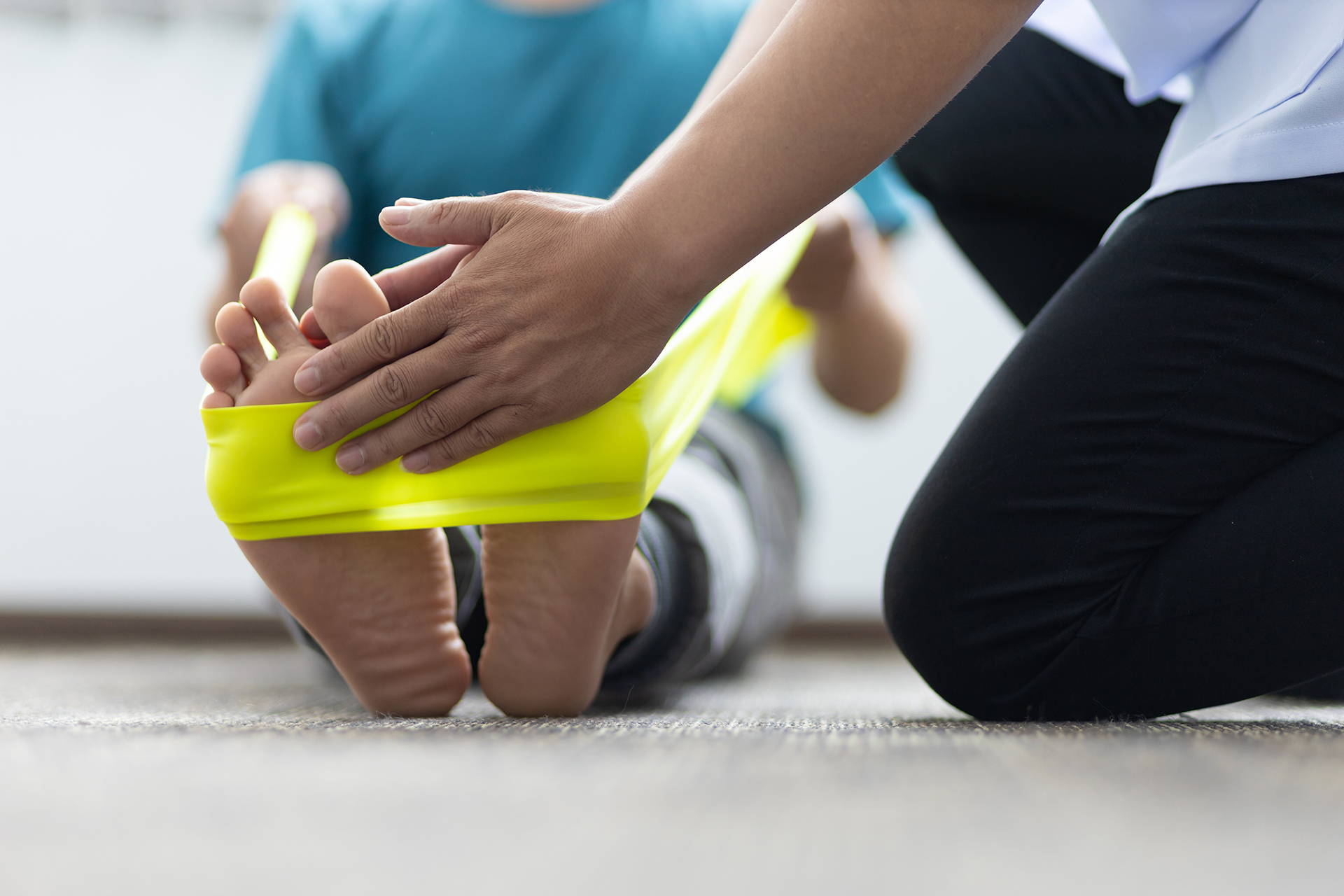
Prevention Tips
There is a range of prevention strategies that athletes and everyone else can use to prevent foot tendonitis. Regular strengthening and mobility exercises for the entire lower limb help maintain healthy tissues and prevent imbalances that can lead to a tendon overload. Eccentric strengthening exercises are particularly beneficial for tendon health by promoting collagen remodelling and tissue quality.
A gradual increase in activity intensity and duration allows tendons to adapt to increased demands. The “10% rule” suggests limiting weekly activity increases to no more than 10% of the previous week’s volume. A proper warm-up before sport and a comprehensive cool-down stretching after preparing the tissues for the demands of activity and promoting recovery. These routines should be individualized based on specific activities and personal risk factors. Ask your physiotherapist if you are unsure what to do during your warm-up.
Regular replacement of worn-out footwear prevents biomechanical changes that develop as shoe support structures deteriorate. Athletic shoes should be replaced based on mileage and wear patterns, rather than solely on their visual appearance.
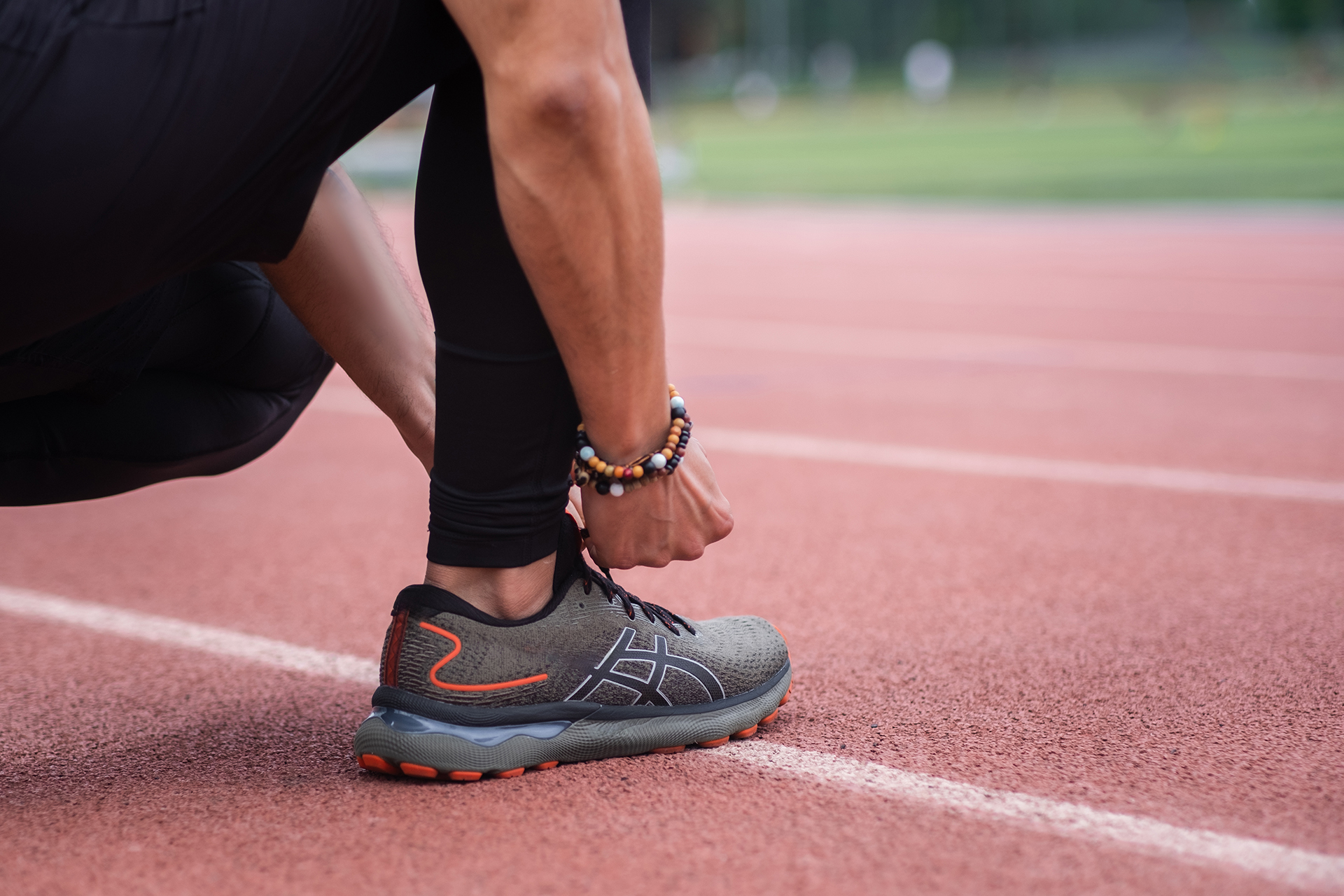
Living with Foot Tendonitis
Managing life with foot tendonitis requires a balanced approach that strikes a balance between healing and activity. While you need to modify your routine to avoid aggravating the affected tendon, staying active with low-impact exercises will help preserve strength and flexibility. Listen to your body and recognize the early signs of tendon pain, such as a mild ache or stiffness after activity, and adjust your activities before symptoms worsen.
Using supportive footwear and orthotics can significantly reduce daily discomfort and prevent further injury. Working with a physical therapist or sports medicine professional ensures you have a tailored plan for rehabilitation and long-term management. Incorporating regular stretching exercises, such as a big toe stretch or calf muscle stretches, can help keep tendons healthy and flexible. Remember, living with tendonitis doesn’t mean giving up the activities you love. With the right strategies and support, you can manage symptoms, reduce pain and continue to live an active, fulfilling life.
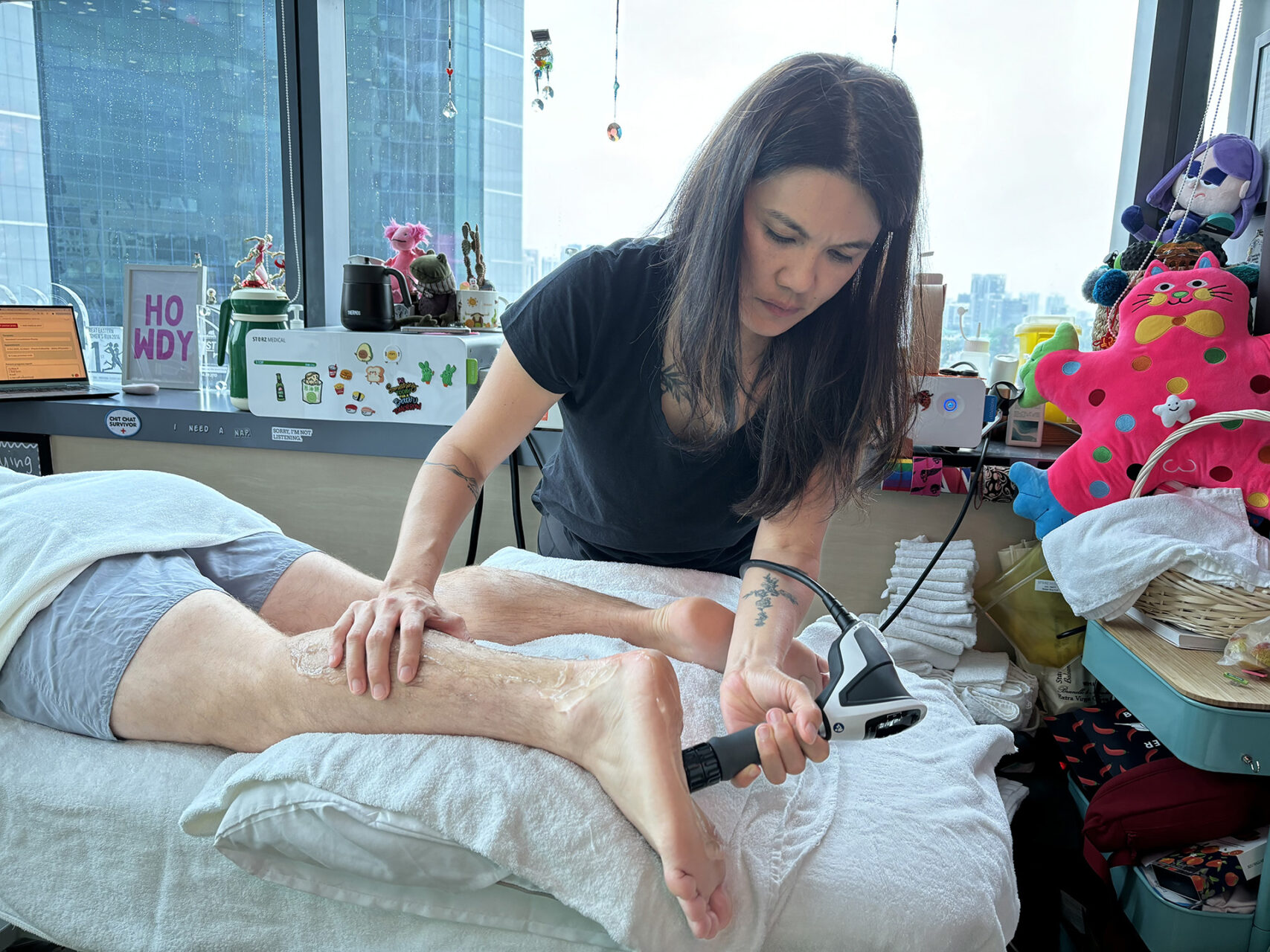
Your Path to Recovery Starts Here
Foot tendonitis responds best to early targeted care that addresses symptoms and underlying biomechanical or lifestyle causes. HelloPhysio combines advanced therapies, such as Shockwave Therapy, INDIBA and Dry Needling, with expert physiotherapy to accelerate healing and restore function.
Recovery relies on an accurate diagnosis, the right treatments and your commitment. HelloPhysio’s team creates customized plans that match each patient’s goals, activity level and lifestyle.
Contact HelloPhysio for a comprehensive assessment and a personalized plan to help you return to pain-free movement and to reduce the risk of foot tendonitis recurrence.

